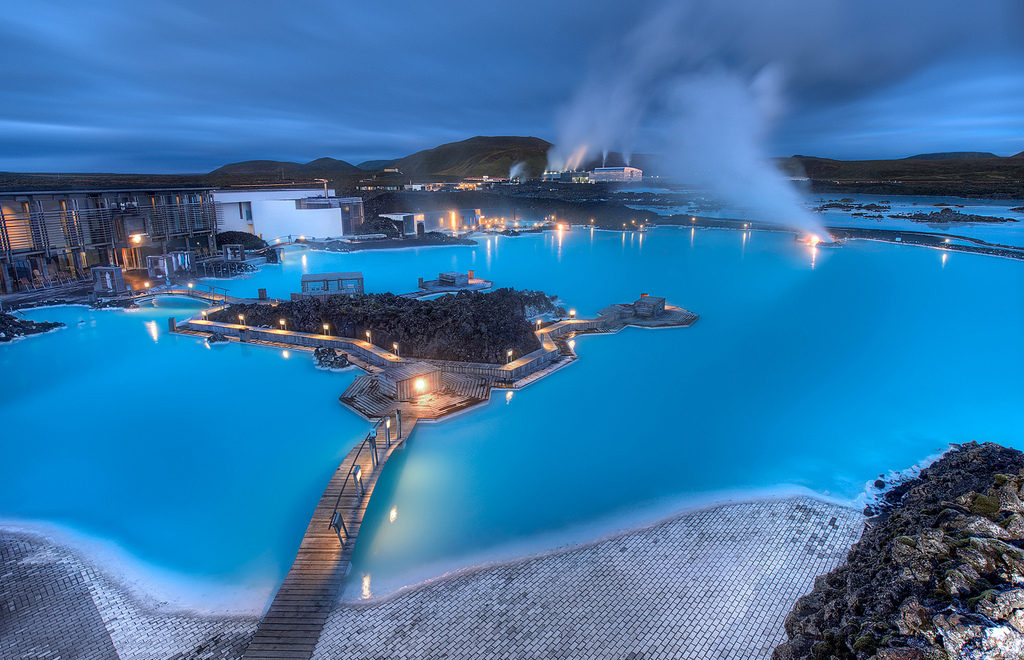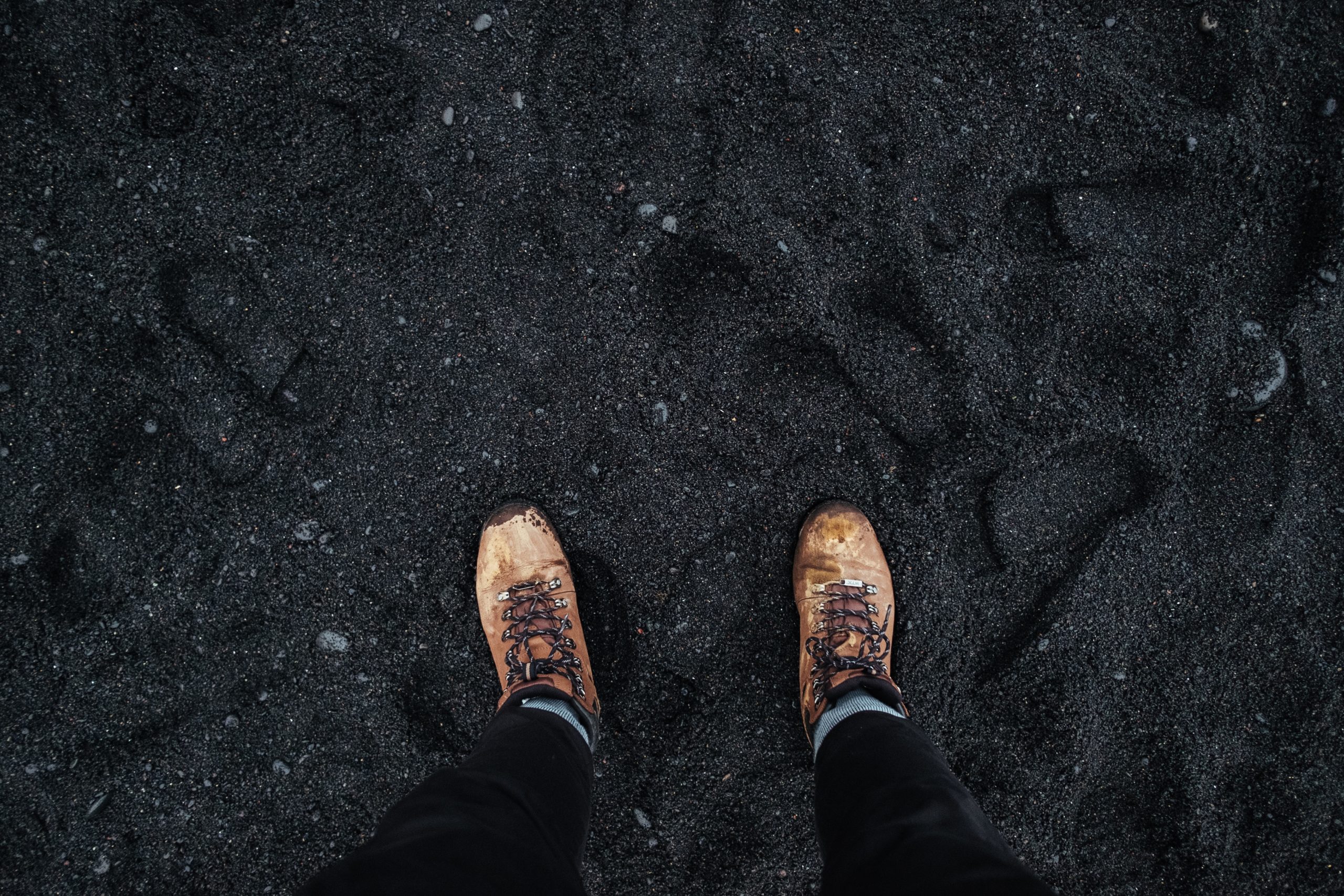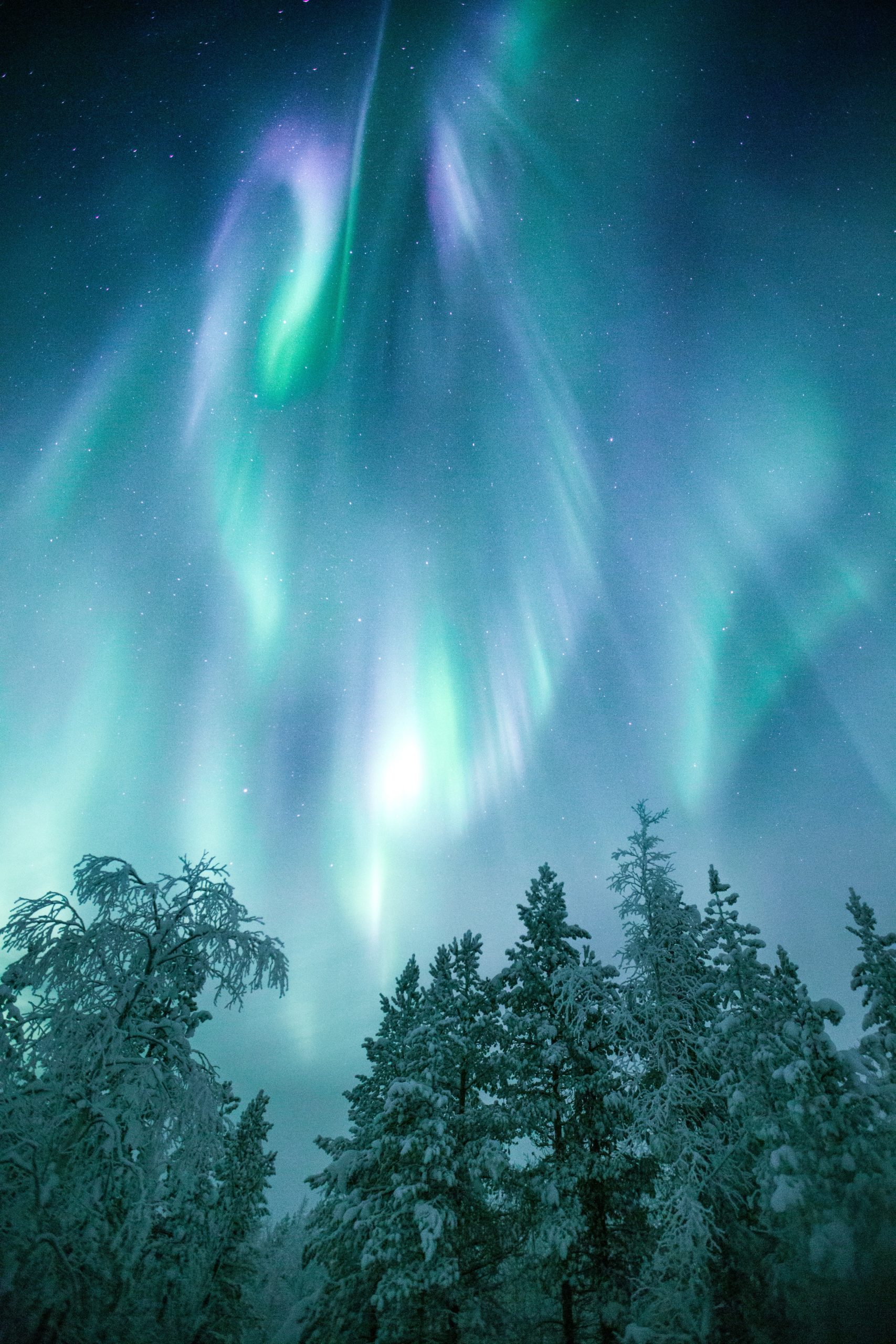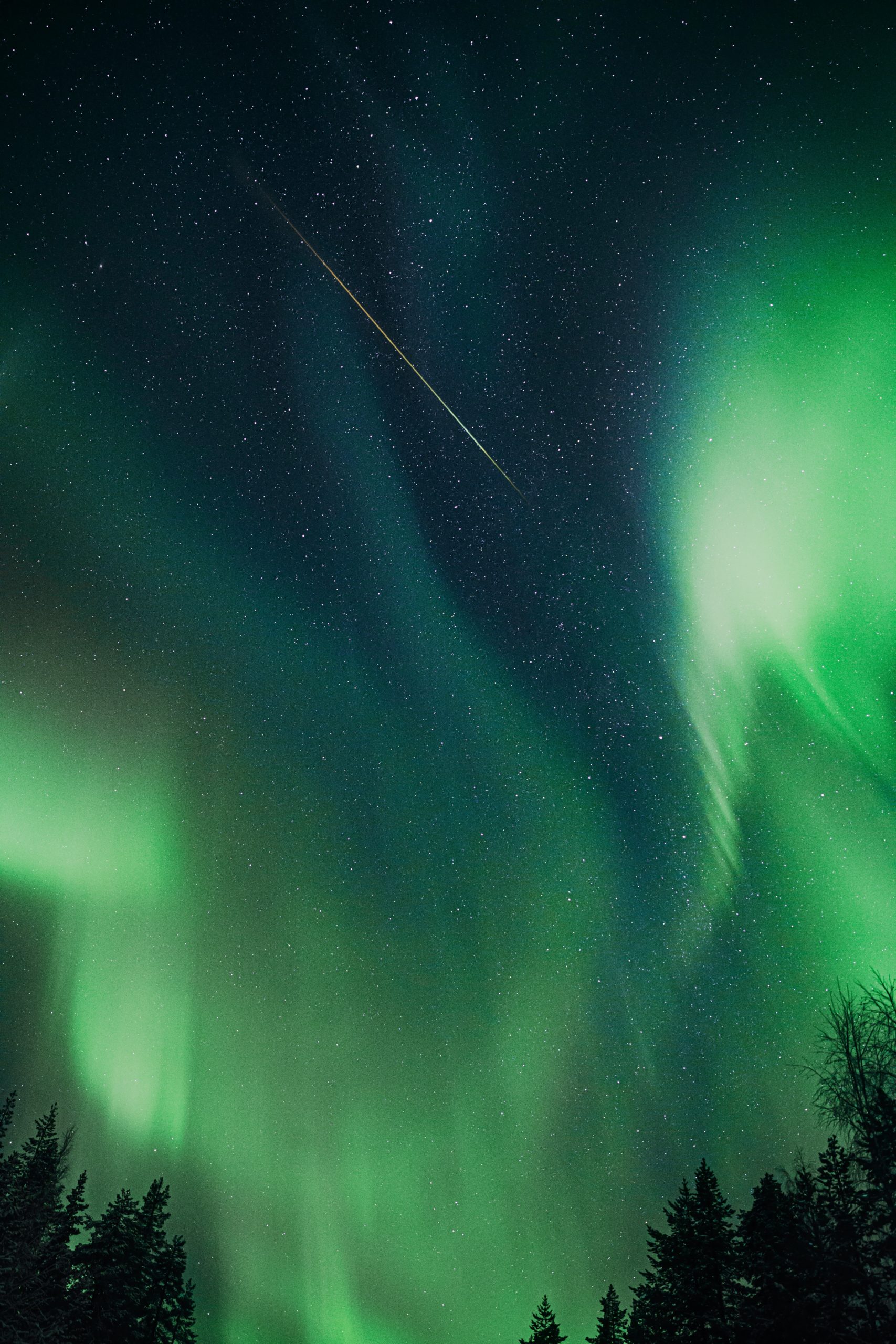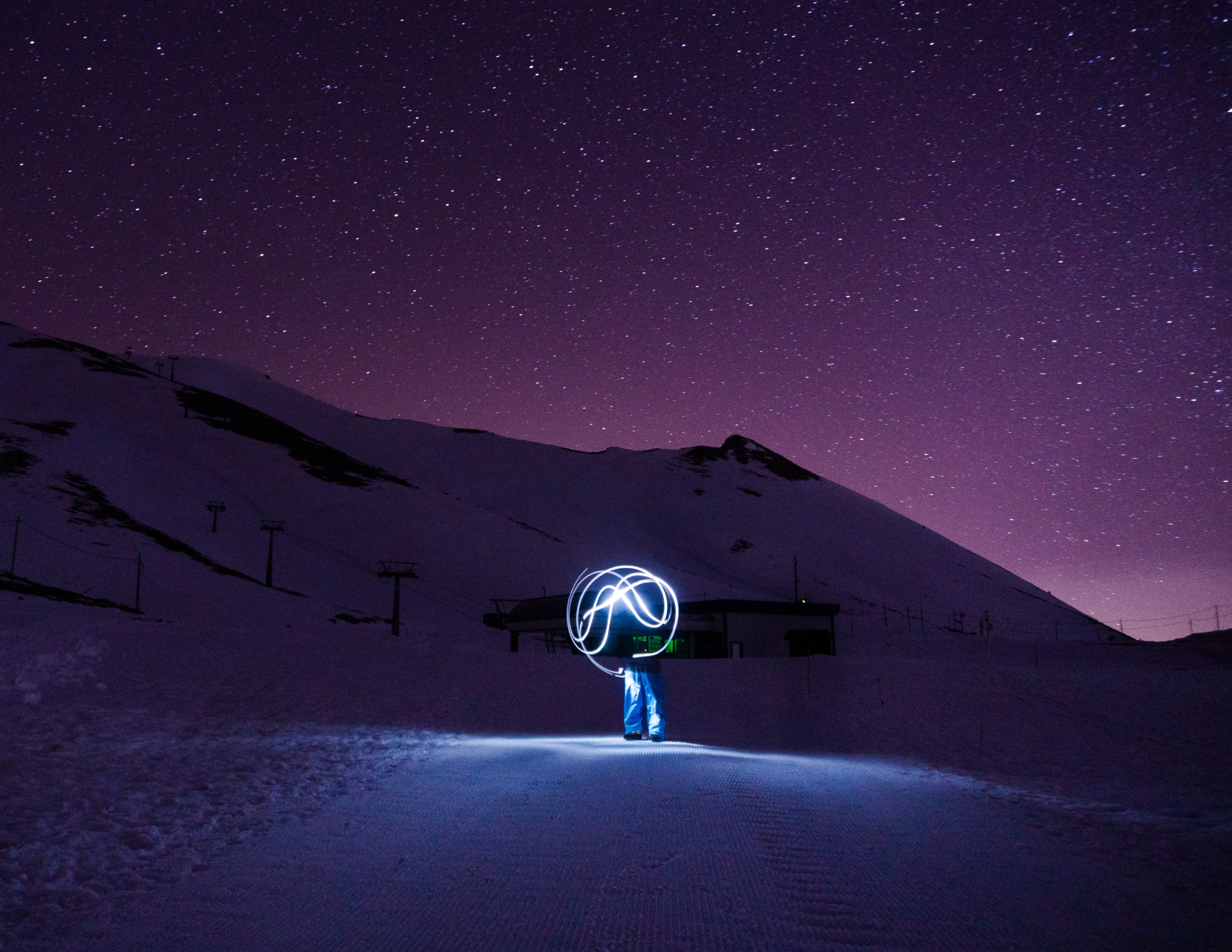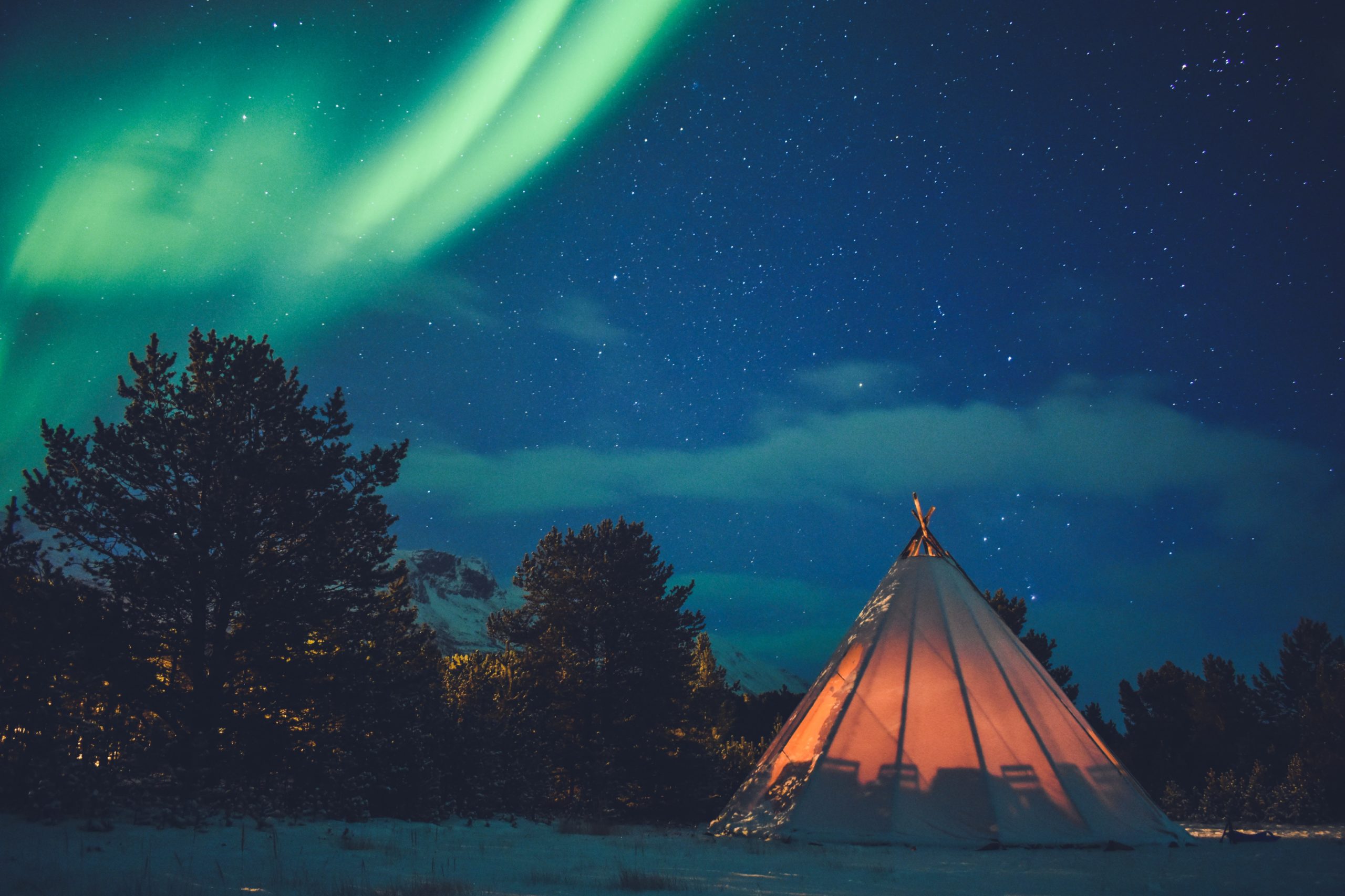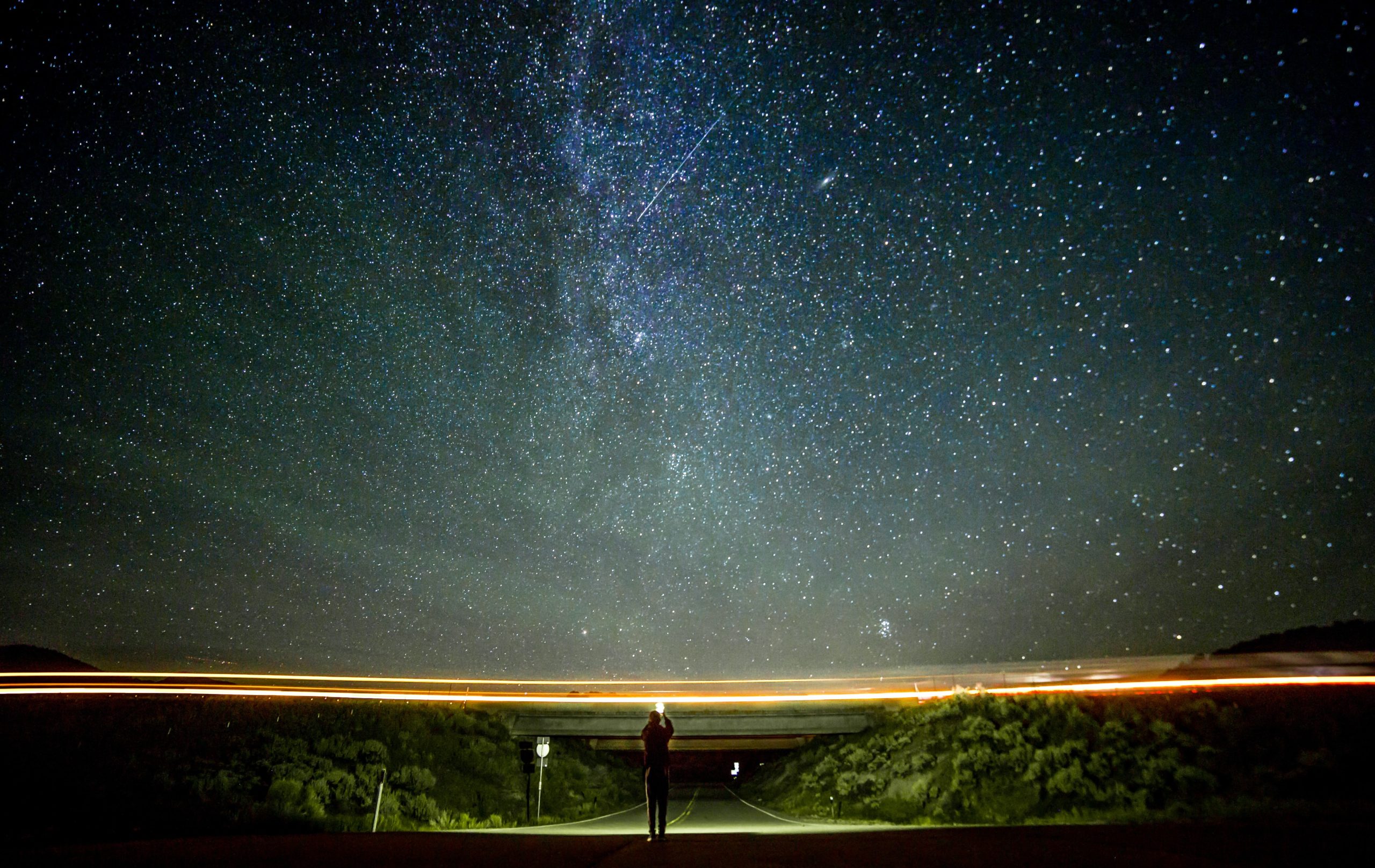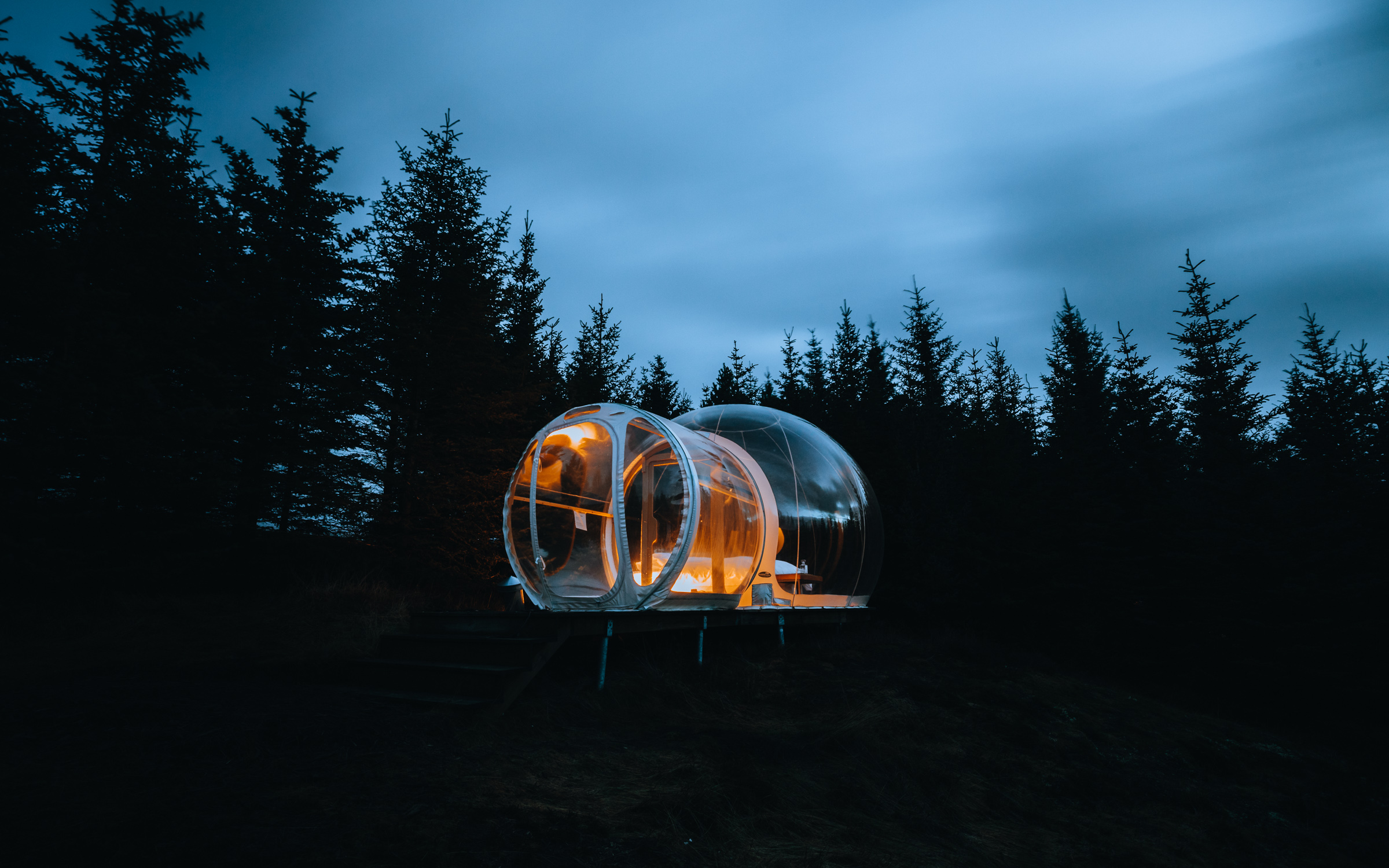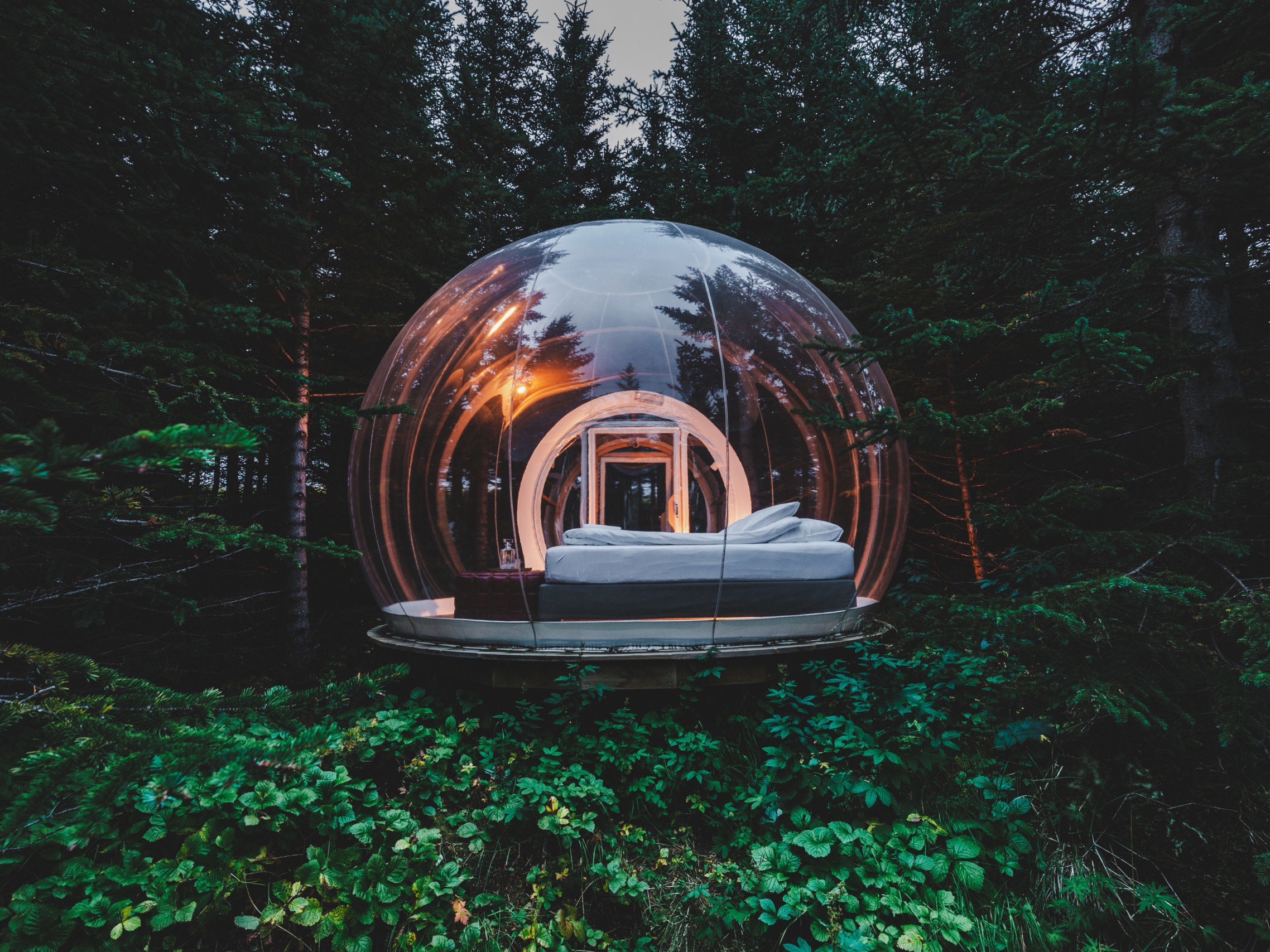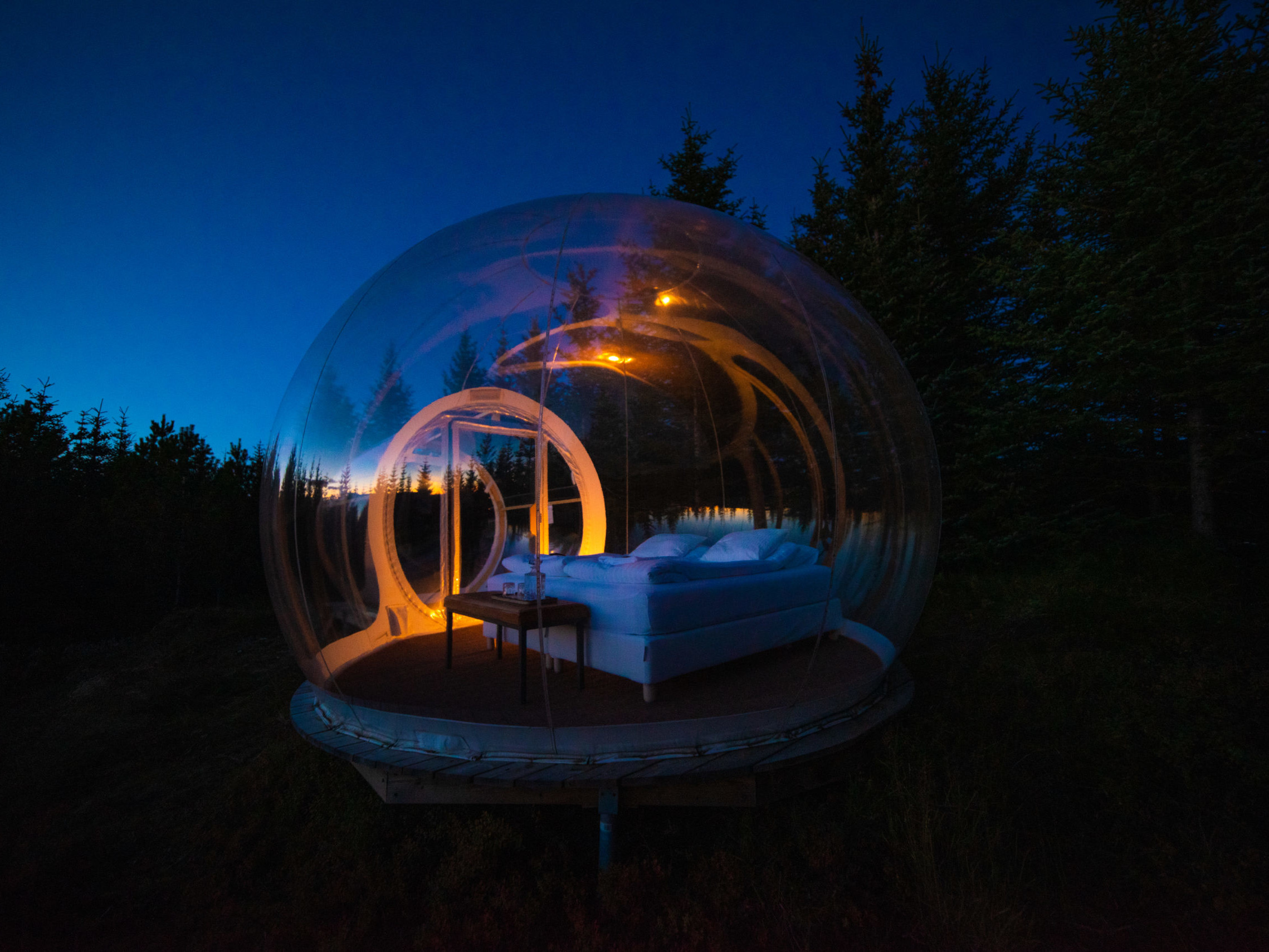Destination black sand beach Iceland: 10 of our favorite unforgettable beaches to watch the northern lights from
If you’re looking for some black sand to aurora watch from, look no further. With nearly 5000 km. of coastline, Iceland has you covered.
Picture it. Destination: black sand beach Iceland. Sparkling dark sand is the gift of many volcanic hotspots, but up here in the North, Iceland is among the few. Imagine the incredible darkness of sitting on the velvety black sand, while auroras dance in the black night.
Aside from the mystical moving lights, the only thing you can see are the stars and the white surf. It’s not a sight to miss, so we’ve gathered up a few of our favorites. Many things are otherworldly about black sand Iceland- but this is surely one of the most surreal.
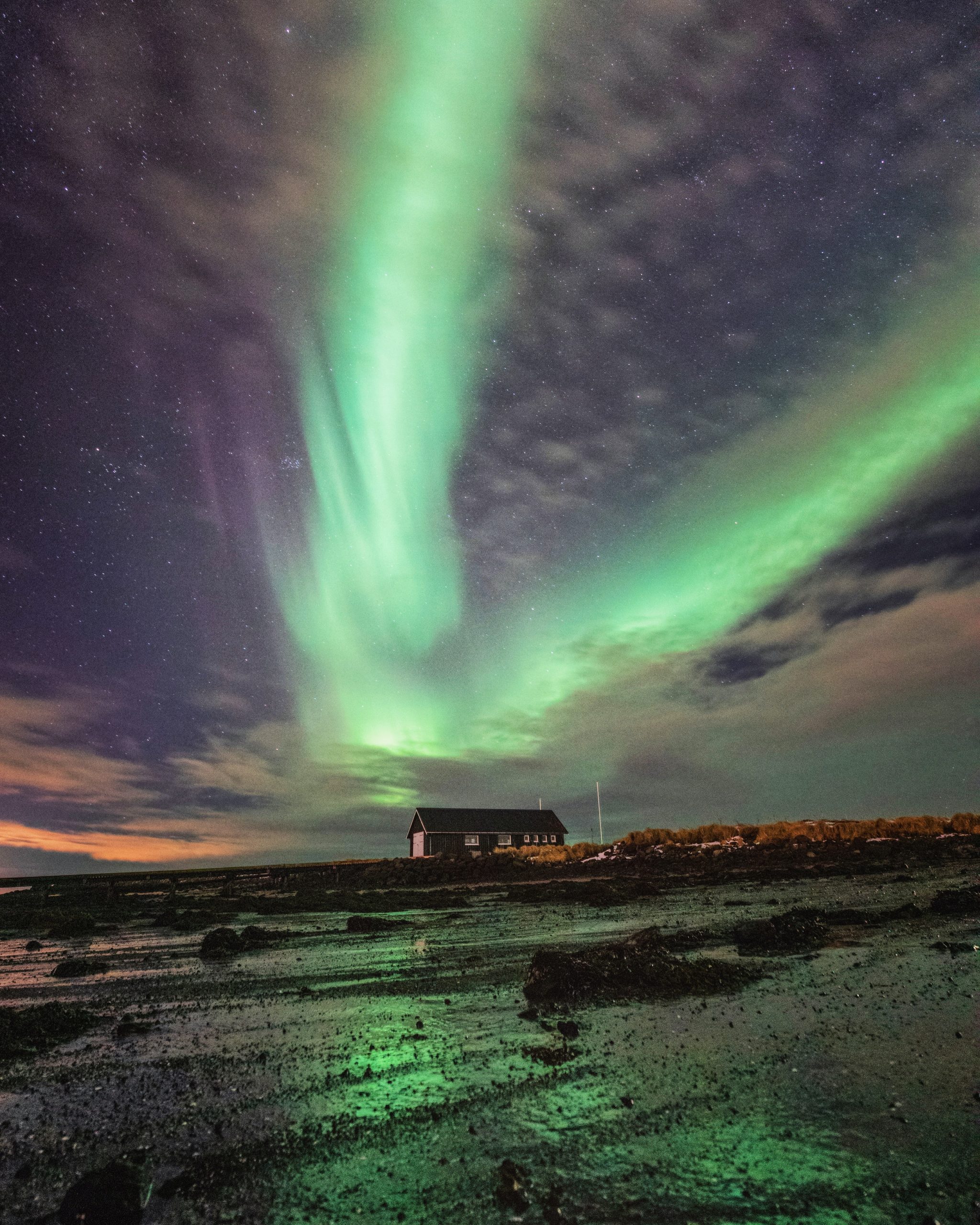
1. Seltjörn, Ægisíða, and Kirkjusandur: The City Coast
Despite Reykjavik’s cosmopolitan appearance, this is a seaside town. And with the sea, comes miles and miles of coastline. There are many places where you can’t access the water because of barriers, big rocks, or just a lack of places to stand, but these are not among them.
These three beaches represent only a fraction of the accessible coast, but they are gorgeous hideaways to stroll in the sunlight. (Or the moonlight, if you’re keeping an eye out and watching the tide.) If you’re enjoying a walk on the seafront paths, you can find Seltjörn and Kirkjusandur at either end of it.
Kirkjusandur is the closer beach to the city center, and like many city spots, depending on the tide it may or may not be there when you arrive! It is a good reminder that despite our concrete home, we are never too far from nature in black sand beach Iceland.
If you find yourself down by Grótta, you will have plenty of time to enjoy Seltjörn. The home of one of Reykjavik’s most notable lighthouses, a nature reserve, and a beloved aurora watching spot- this entire area feels lightyears removed from the hustle and bustle of the city just behind it.
And if you find yourself in Reykjavik’s cozy Vesturbær neighborhood, you can enjoy a walk down Ægisíða. An area of trails and recreation, Ægisíða is a tiny stretch of shore dotted with fisherman’s huts and reminders of a time when a day’s work was a good catch and a small boat.
On a clear day, you can see all the way to Reykjanes from this spot. There are many tiny beaches in the city, some of them with no name at all.
They are all different windows into what life used to be like, with different gifts like sea glass, urchin shells, and long strands of luminous seaweed decorating their shores. And if you’re careful, each one of them is a glorious place to watch for northern lights.
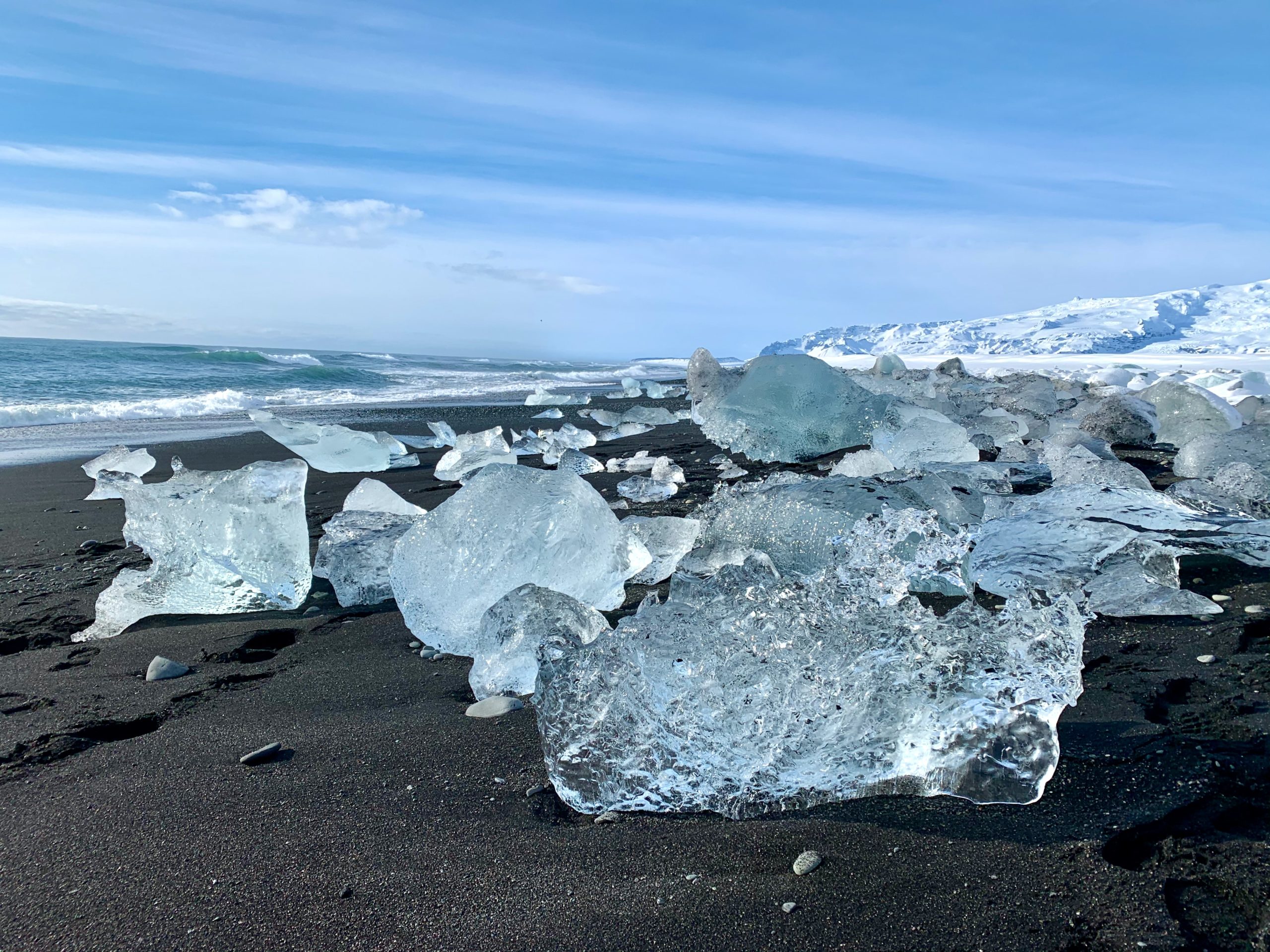
2. The world-famous Diamond Beach, also known as Breiðamerkursandur
When reading about black sand beach Iceland, it’s hard to miss the glory of Diamond Beach. A small piece of the larger Breiðamerkursandur coastline, this is a popular spot. Though it’s a bit of a drive from the capital this is the home of the Jökulsárlón glacial lagoon, and it is from there that the diamonds are provided.
This area is fed by the glacier Vatnajökull, which is so big that pieces of it have their own names. This part of the glacier is called Breiðamerkurjökull. As pieces of ice calve off of the glacier, they fall into the Jökulsárlón lagoon.
From here they travel out to sea, sometimes finding themselves festooned upon the beach there. These enormous chunks of ice bob up and down in the waves, heavy when they’re on the shore, but light as air when they’re being thrown about by the waves.
If you’re visiting black sand beach Iceland- you simply cannot miss a night spent among these titans. Black sand, chunks of ice as big as a man, and the lights coming down to dance on the lagoon.
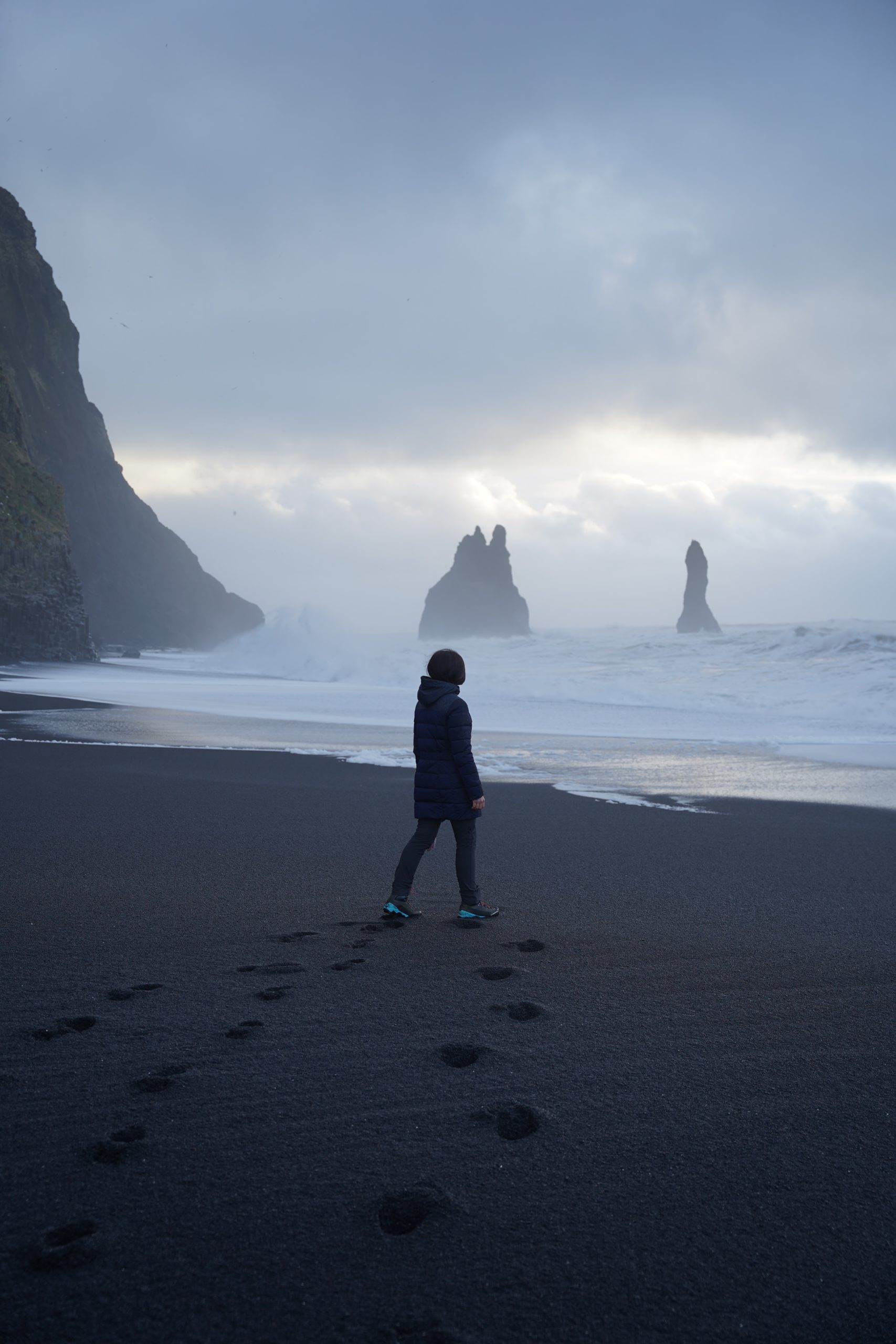
3. Reynisfjara: The postcard beach
A trip to black sand beach Iceland can’t happen without a stop on Reynisfjara. Charting as one of Iceland’s most dangerous beaches due to strong currents and sneaker waves, this beach in front of Vík has been featured in countless films and television shows.
Instantly recognized by its huge basalt caves, rock stacks, and the Dyrhólaey promontory. Iceland’s south coast is one long stretch of beaches and sand deserts. Many of these formed because of powerful volcanic eruptions and the glacial outburst floods (or jökulhlaup) that they created.
Reynisfjara is a great spot for grabbing a bite to eat or staying the night. If you plan to aurora hunt from here, make sure to keep a safe distance from the water. This beach is not staffed and getting caught in a sneaker wave can be deadly.
Fortunately, the town is right up on the beach, and you can watch the aurora from a cozy little bench among the dunes, while you listen to the crashing of the big waves on one of the most famous spots in all of black sand beach Iceland.
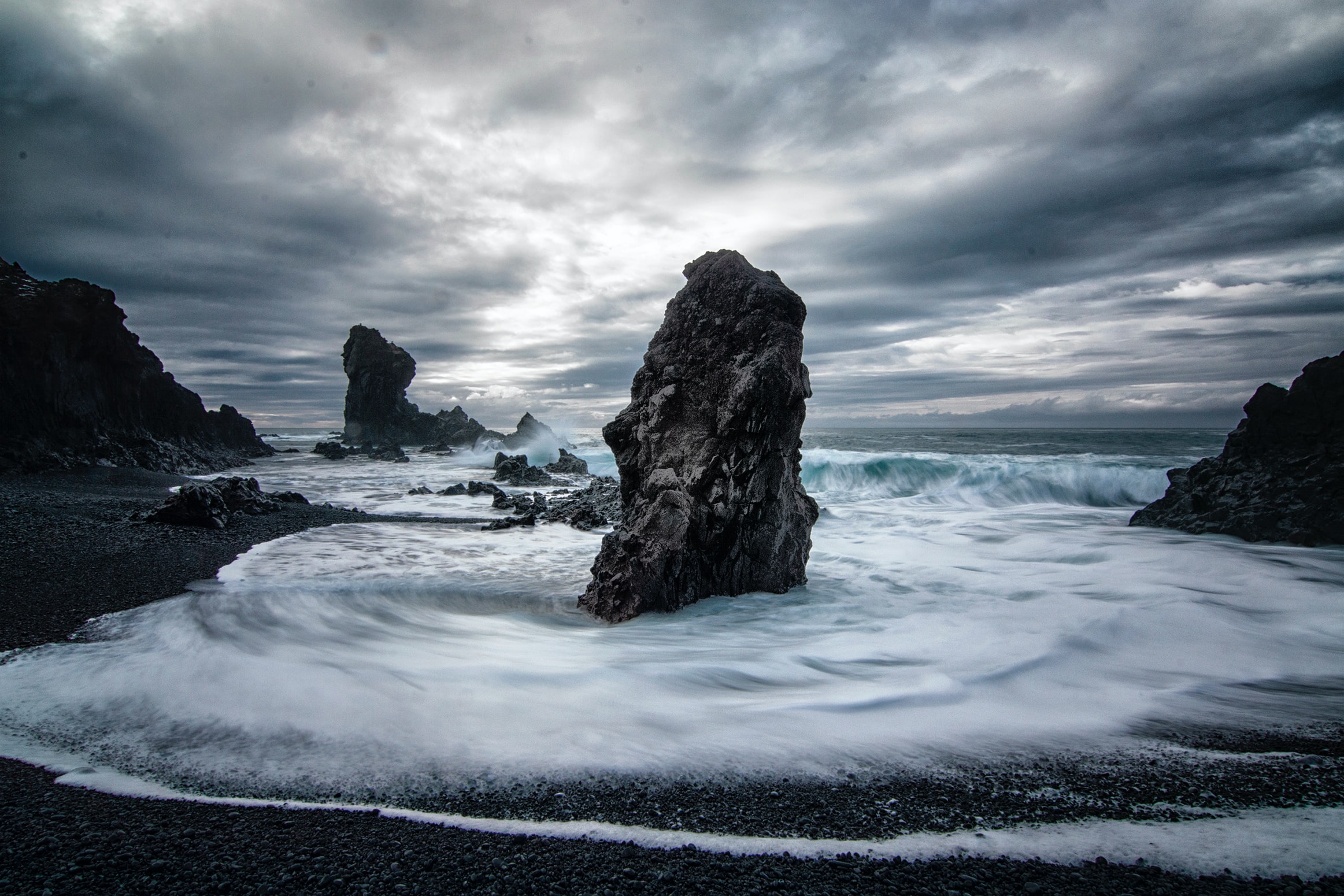
4. Djúpalónssandur at the edge of the world
If you find yourself in Snæfellsnes at the foot of another famous glacier, you must certainly make a stop at Djúpalónssandur. This is a place of many curiosities and treasures in black sand beach Iceland, so tread carefully here.
Located at the edge of the Snæfellsnes peninsula, you’ll find that the sand is hidden under a layer of polished black pebbled. These are Djúpalónsperlur, or the “Pearls of Djúpalón”.
They are protected, and so are the twisted pieces of metal that rest on top of them. These are pieces of the British trawler the Epine GY7, and they rest on this beach in memory of the men that lost their lives in a blizzard there.
This is only one of many stories on this beach, as it used to be an epicenter of activity when fishing was a smaller industry in the hands of the people.
Nearly all of the rock formations, springs, and sea stacks have names and stories, and tales of being elven structures or frozen trolls who saw the daylight. You could spend weeks in these coves learning the history of each mark in the land.
If you’re a history buff or a story lover in black sand beach Iceland, make sure to grab some literature about this area, and leave nothing but footprints in the sand behind you. This is a hallowed place of memories gone by, and a protected zone.
Not to mention, a remote area with similar wave patterns to Reynisfjara. Enjoy the aurora from a safe distance, and be respectful of the different souls that may be watching with you.
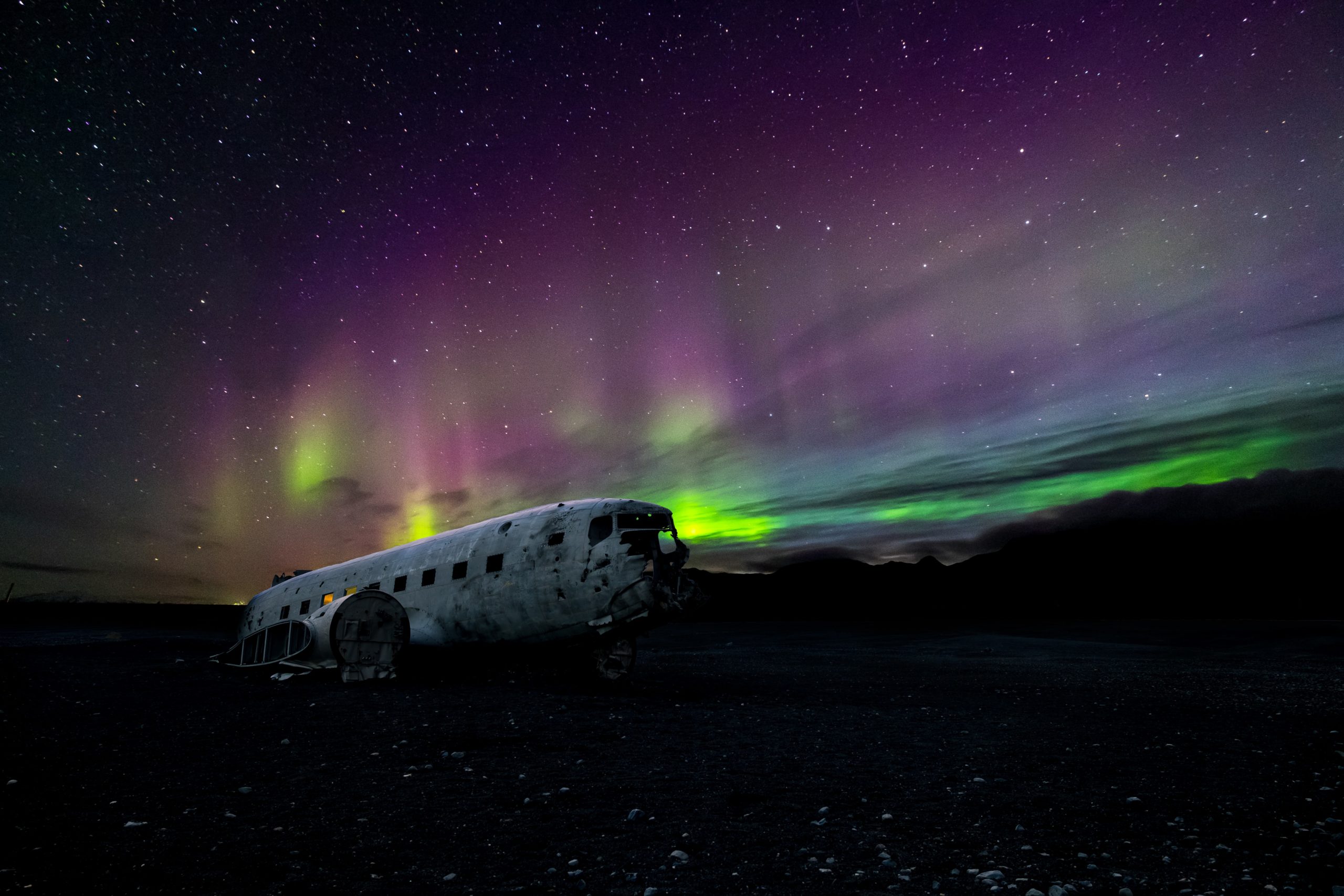
5. Solheimasandur and the plane wreck
There are a lot of beaches in black sand beach Iceland, but this is a special one. A smaller part of the big stretch of the long southern coast, Solheimasandur is another creation of volcanic eruptions creating glacial outburst floods, and the sand flats of this area are vast.
Because of its volcanic history, Solheimasandur is not home to any villages or large settlements. It is, however, home to the US Navy DC-3 plane wreck, a landmark sought by photographers and curiosity seekers alike.
In 1973 due to a fueling problem, this plane crash-landed here on the sand. All parties involved survived, and walked away from this impromptu landing in one piece, so it is not truly a memorial piece.
Getting to the wreck takes a bit of a walk, but it’s worth it to gaze upon this strange visitor among the sands. This is a truly desolate place, so take caution if you are visiting here in the nighttime or the winter season.
It is good to check ahead on the weather, as the sand wastes are disorienting and visitors in the past have gotten lost here. With little to nowhere to hide, it is possible to risk exposure and it is unlikely that you will come across much help.
Though this is a popular northern light photo opportunity, look out for your safety first. Those airmen walked away from this wreck, and in order to enjoy more of black sand beach Iceland, so must you.
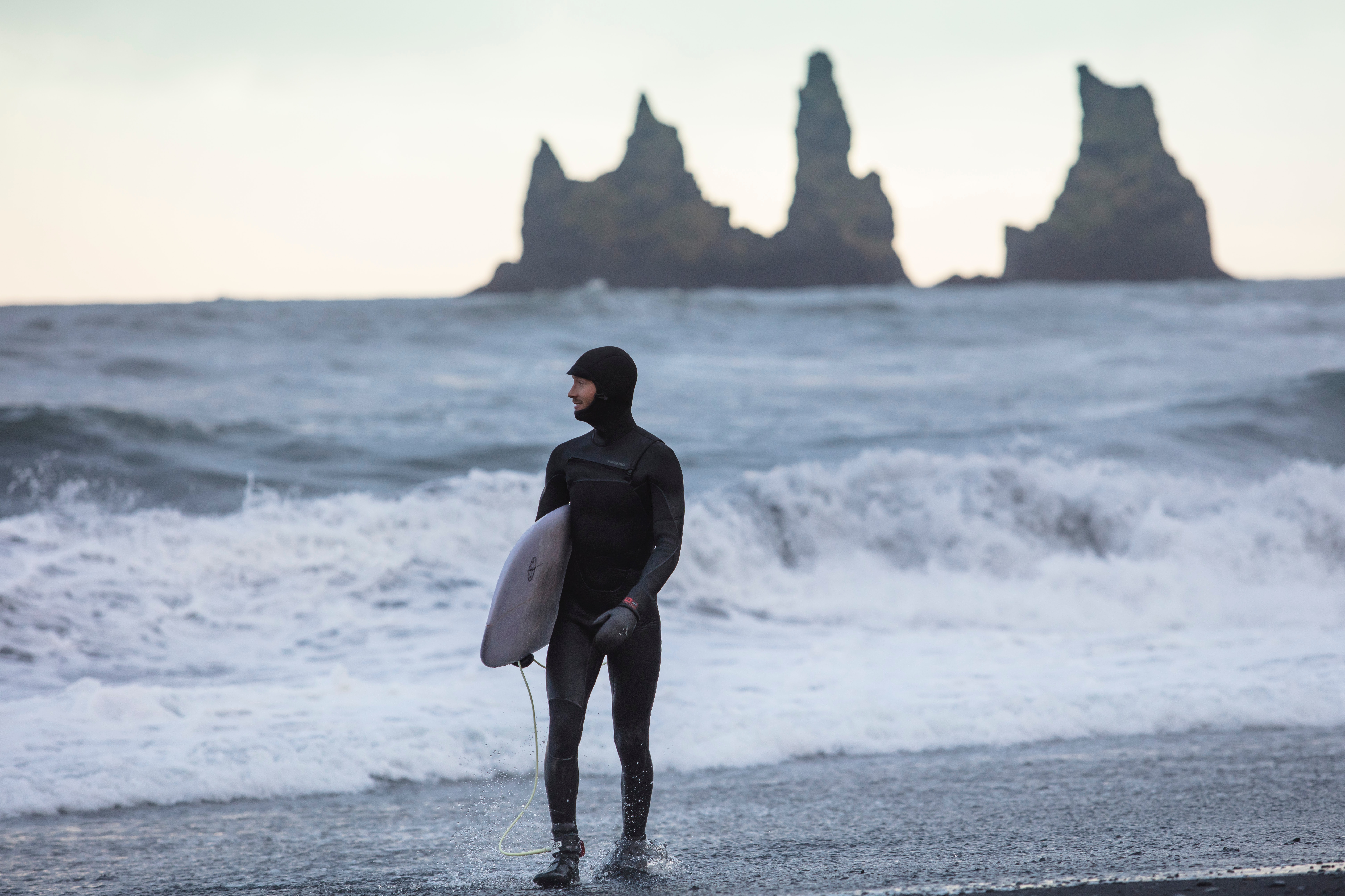
6. Catch a wave on Thorli Beach
The Reykjanes peninsula is known for its big, consistent waves, and believe it or not, is a long time favorite of arctic surfers. Thorli is a fairly advanced spot near the town of Þorlákshöfn (Thorlákshöfn) and it sports an unusual mix of both black and yellow sands.
Beloved by local and visiting surfers, Thorli is a long crescent of sand at the heart of Iceland’s surfing community. And though there are different waves to catch throughout the year, the high point for big surf is right smack in the middle of aurora season.
If you’re a seasoned surfer, this is the beach for you. (And if you’re an aurora hunter- the best of both worlds!)
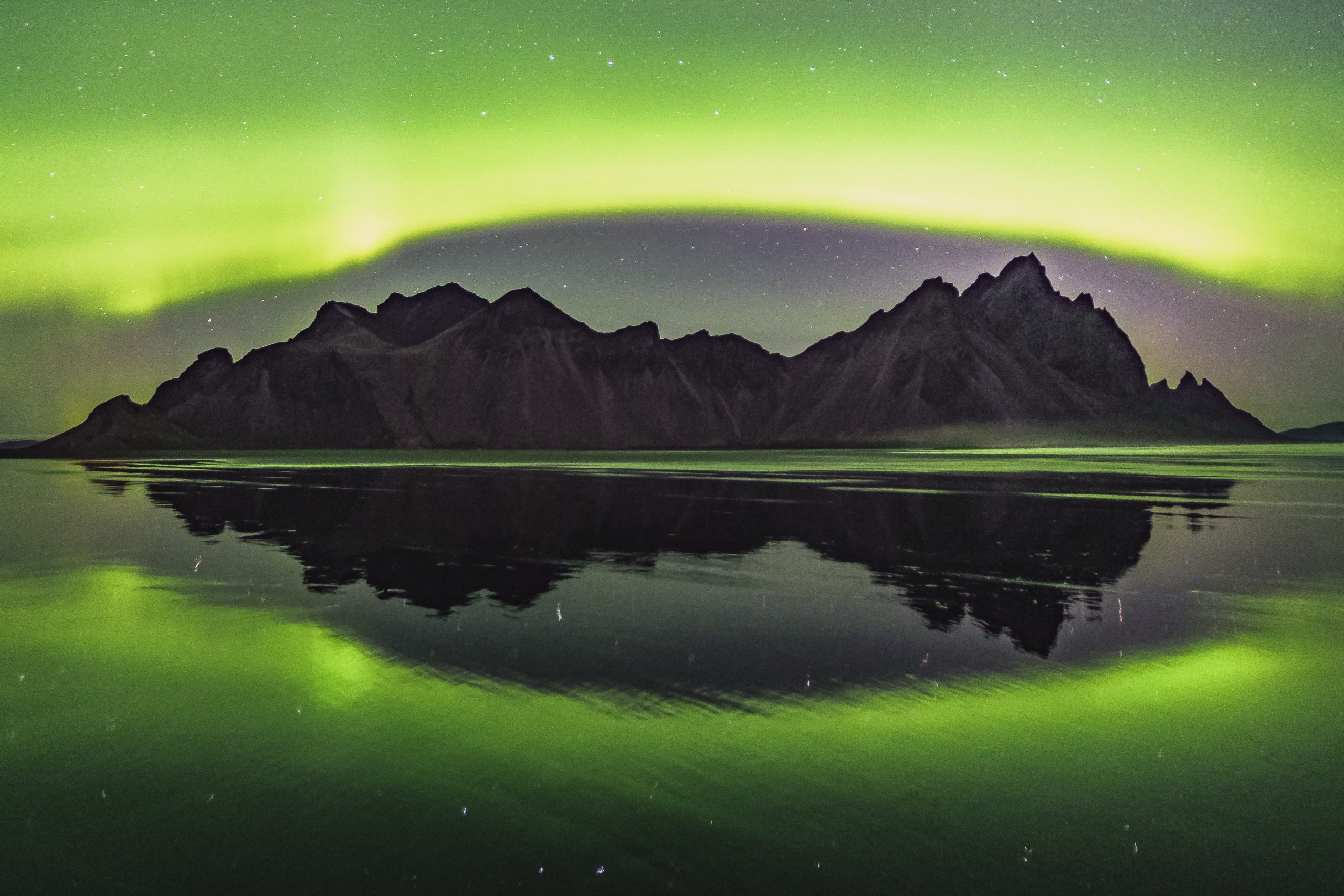
7. Stokksnes the Mirror Beach
Stokksnes is a photographer’s dream. At the eastern edge of Iceland lies the long flat shore of Stokksnes, and the jagged dragon’s-teeth peaks of Vestrahorn. Close to the town of Höfn, this area either welcomes you back to the sand deserts of the south or announces your arrival to the dramatic mountains of the east.
But before you go further either way, you should take a moment to stop at Stokksnes. This beach is wide and flat, which causes the tide to leave water behind as it recedes. This creates a shallow and incredibly reflective surface, allowing incredible reflection pictures of the mountain Vestrahorn, the surreal black dunes, and potentially, the colorful, dancing aurora.
There is a small fee to visit the beach, as it is privately owned land- but it is more than worth it to help preserve the majesty of this place.
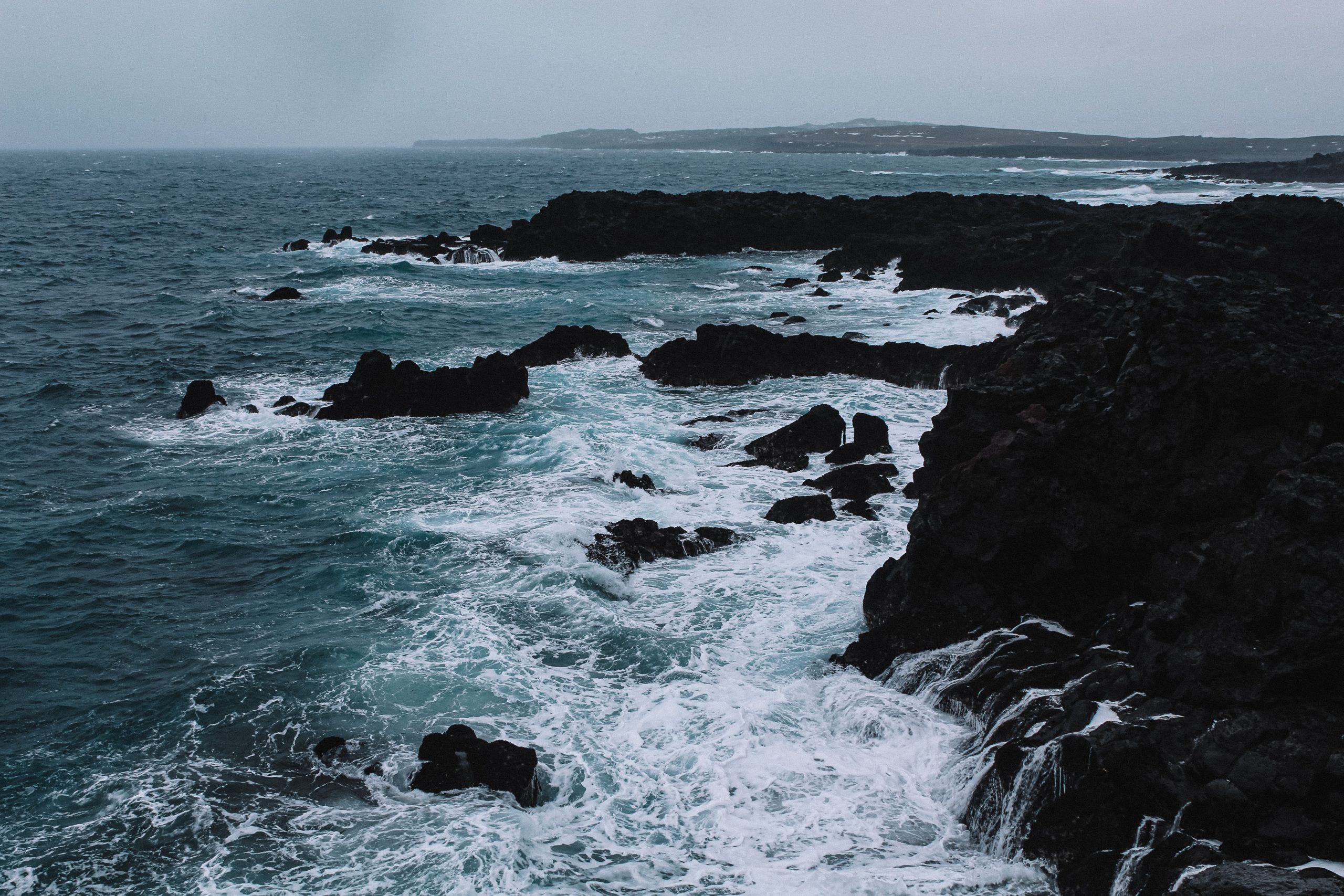
8. Everybody’s gone surfin’...In Sandvík and Grindavík
For those who aren’t ready to catch a big Thorli wave, there is the slightly more forgiving beach break of Sandvík, where many locals catch their first waves. Most of Iceland’s surfing beaches are reef or point breaks, which means you’ll be dodging a lot of sharp volcanic rocks, and maybe some sea urchins.
For those who are only here to watch auroras, you are in great company. The peninsula of Reykjanes boasts long coasts of lonely beaches, and many friendly seaside towns to pick up snacks in.
(Including Grindavík, one of Iceland’s happiest towns! And the nearby neighbor of our recent fissure volcano, Fagradalsfjall.) In black sand beach Iceland, you can’t go wrong with cruising quiet Reykjanes.
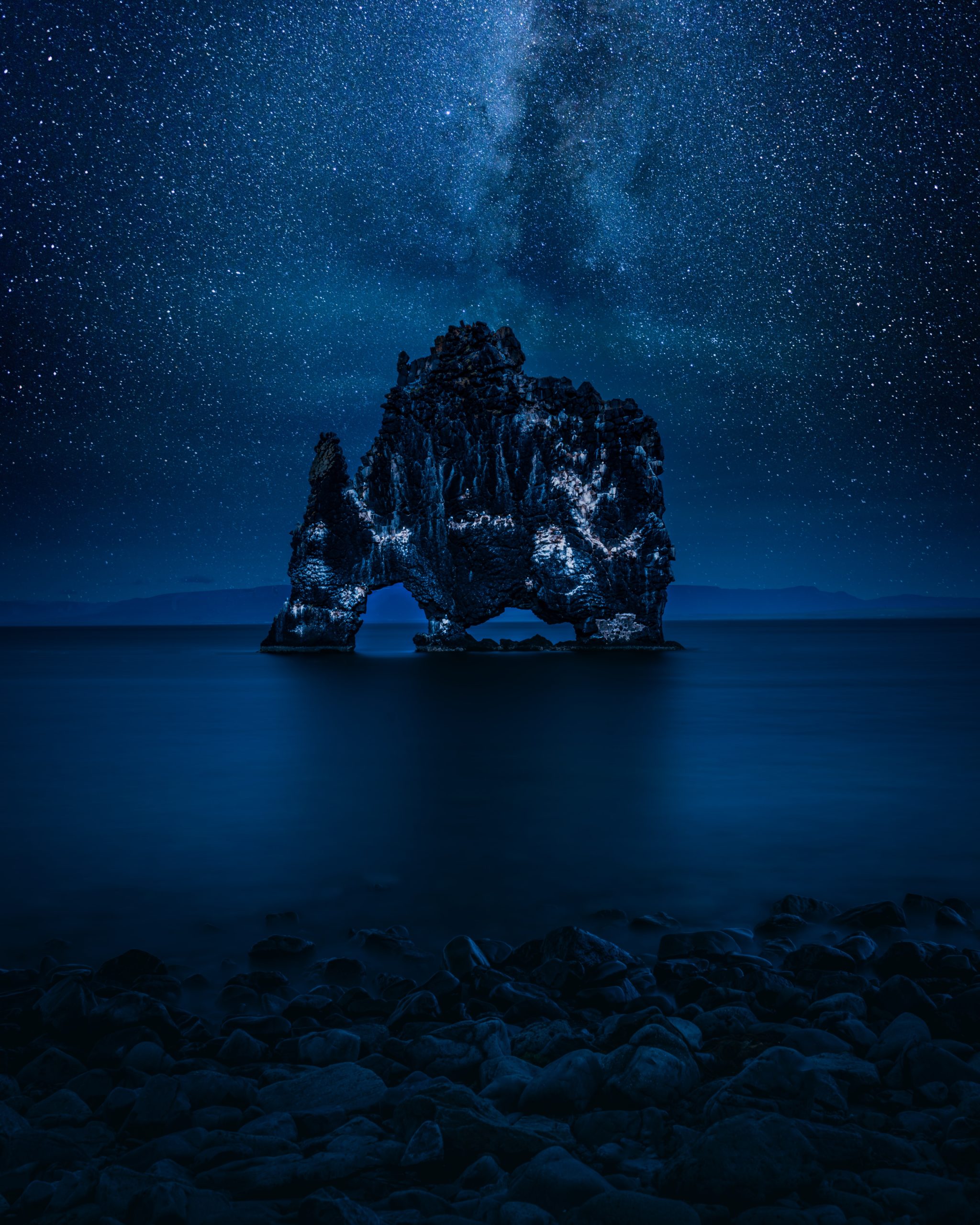
9. The Seal Circle at Vatnsnes
You’ve heard of the Golden Circle, and even the Diamond Circle- but what about the Seal Circle? The 711 road around the peninsula of Vatnsnes is a great spot for black sand, seals, and auroras. If you’re lucky, you can spot harbour seals, grey seals, harp seals, bearded seals, hooded seals, ringed seals, and maybe even a rare walrus or two!
The Illugastaðir beaches on the western side of the peninsula have been a notable home for them for many years, but these creatures can be spied year round throughout the peninsula. It is even possible to see them on the eastern side basking near famous Hvítserkur, a popular aurora photo spot.
You can stop in Hvammstangi to visit the Icelandic Seal Center to learn more about these curious residents, but don’t forget to keep your eyes on the sky. This is a popular aurora spot with low light pollution and many beloved foreground landmarks for great aurora shots.
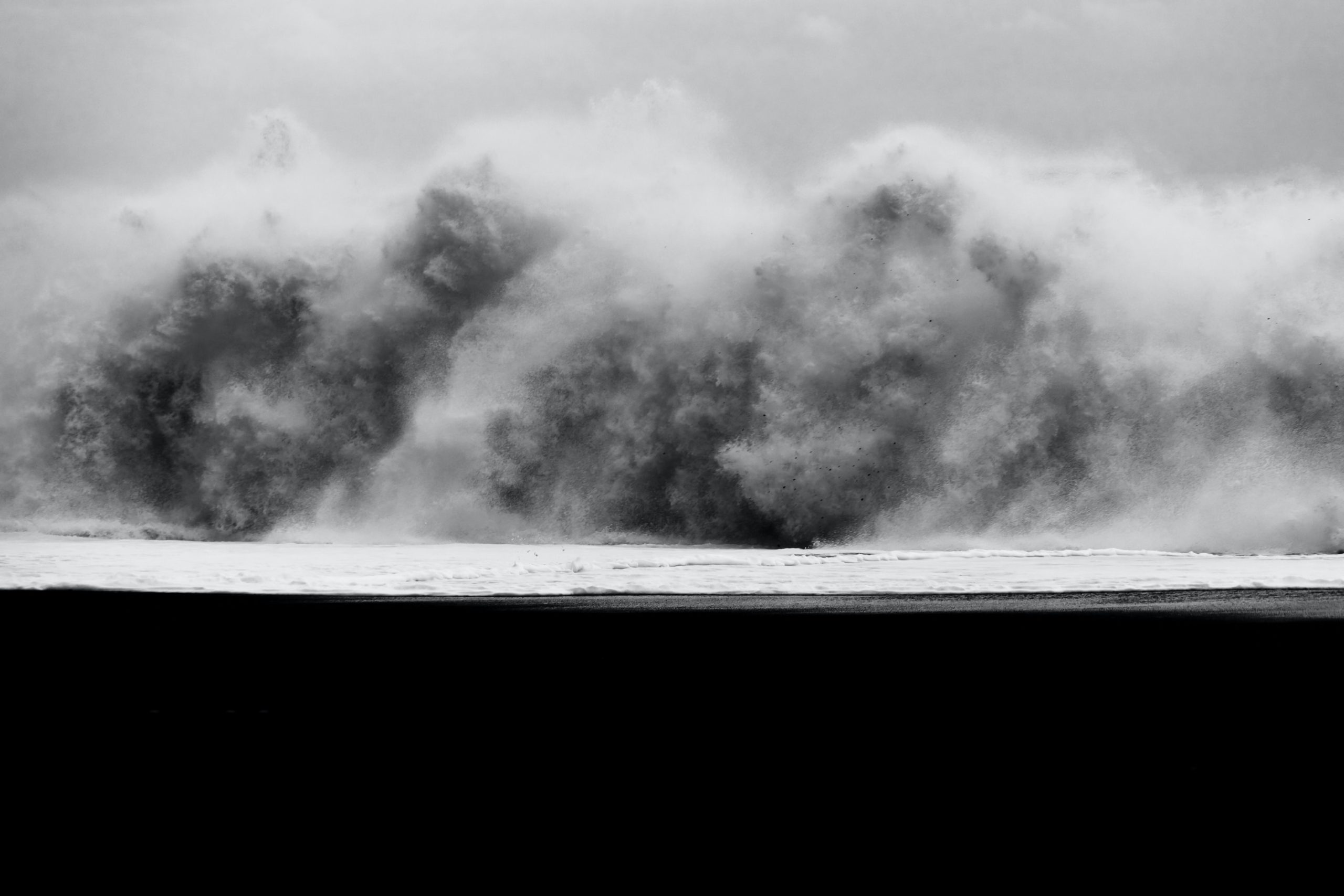
10. Ólafsfjörður on the Arctic Coast Way
North Iceland is a magical place punctuated by a more extreme climate, big mountains, and beautiful small towns throughout the fjords. There is a lot of history and tradition here, and even though it’s not by much- you are that much closer to the pole when you visit.
Ólafsfjörður is located in between the shark fishing village of Siglufjörður in the north, and Dalvík just below- home to world class skiing and “The Great Fish Day” festival (Fiskidagurinn mikli). This is another great peninsula to explore, and you guessed it, every single one of these towns boasts its own piece of black sand beach Iceland.
These are long, picturesque coastlines framed in by tall mountains and sweeping fjord views out to sea. They have long histories and unique cultures, even from village to village. And just like their skiing, when it comes to auroras- they are unparalleled.
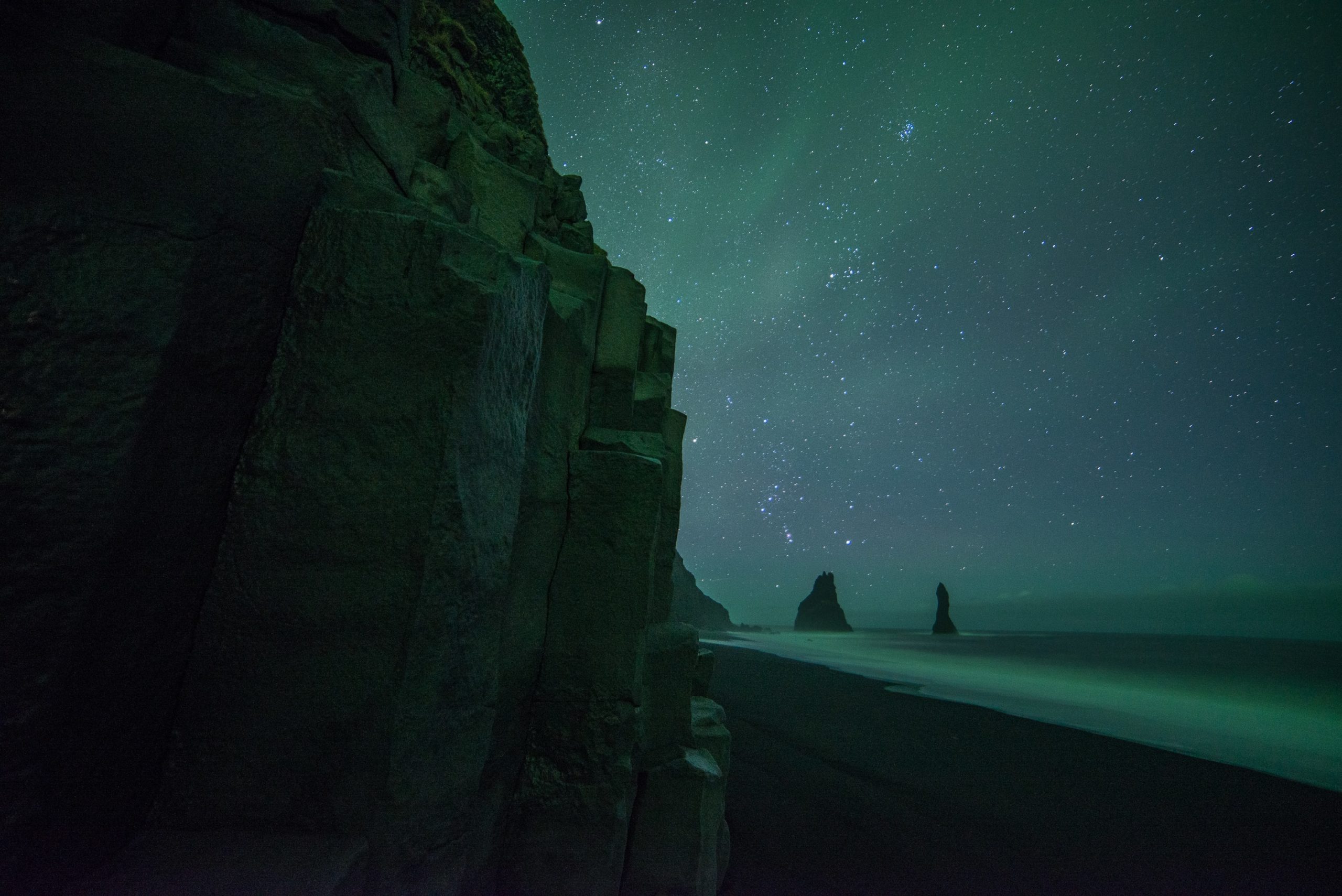
Top 7 aurora trails: the best hiking in Iceland near Reykjavik
Are you in the capital looking for auroras? Here are some of our favorite paths for northern light discoveries.
Looking for the best hiking in Iceland near Reykjavik? Well, cities aren’t usually known for their outdoor activities, but Reykjavik is the epicenter of wild adventure! You can find countless things to do here, and nearly all of them pick up in town.
But what about hiking? Going for a stroll while you search the skies is a great way to get some fresh air and increase your chances away from the light pollution. Here are a few of our favorite local haunts- how many of these have you tried?
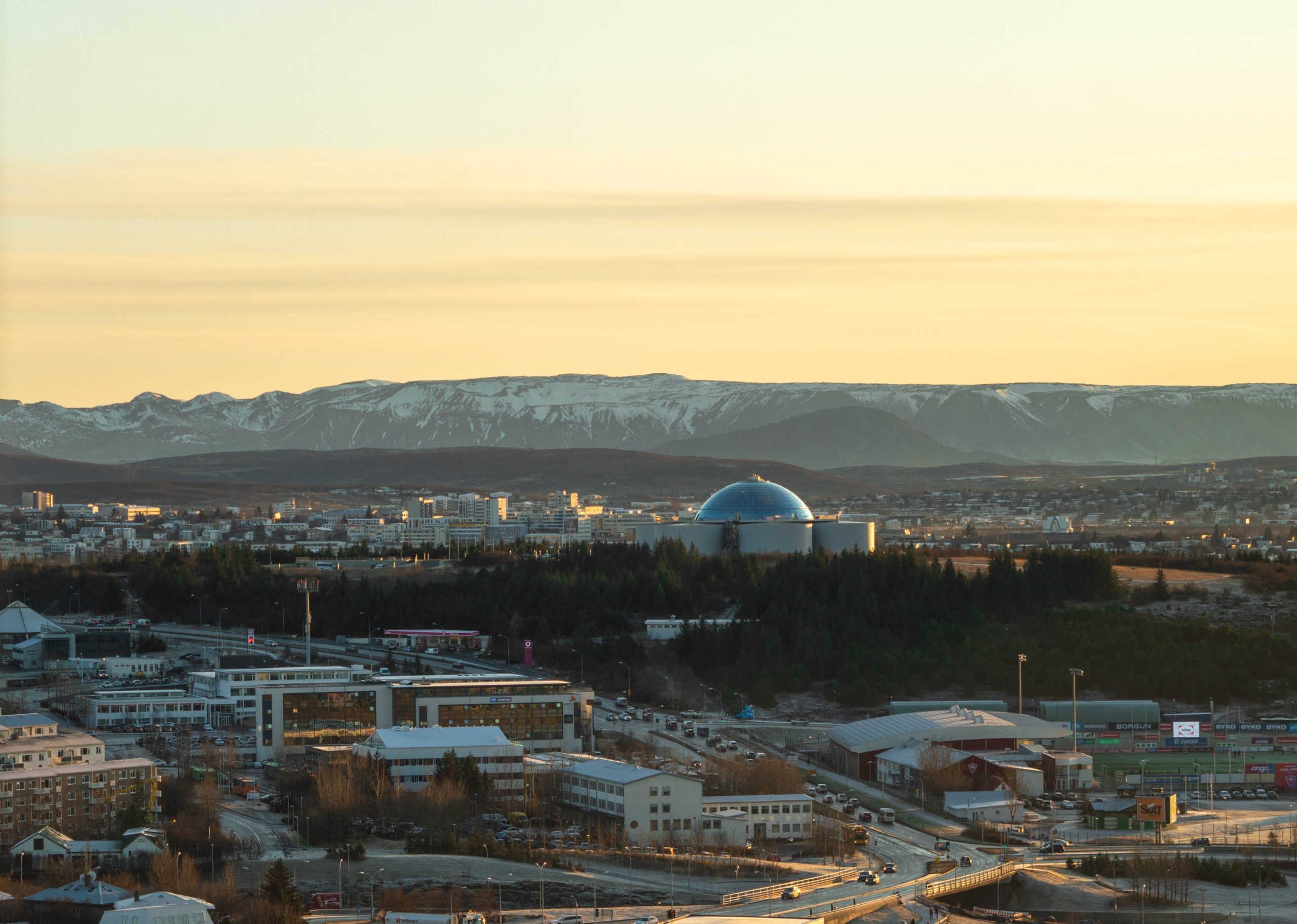
1. Öskjuhlíð: Head to the hills!
Chances are you’ve seen the glistening dome of Perlan from your window on your way into town. Or perhaps it already caught your eye on a walk around town? It is on top of one of our highest hills, after all. Perlan rests on top of an area called Öskjuhlíð.
This area is home to some of the best hiking in Iceland near Reykjavik, because not only is it directly in Reykjavik but it’s filled with charming forest paths. It’s also next to the Nauthólsvík beach, another great place to stroll or swim. (Don’t worry, it’s heated! Just.. Maybe come back after aurora season for this one.)
There are multiple trails to enjoy in Öskjuhlíð, and if you make it to the top you’re met with a sweeping view of the sparkling town below you. (You are still within the grip of city light pollution here, but on a good night, you can see past it. And it makes for great photos!)
Easily accessible on foot or by public transport from most of town, the paths here lead on to many of our other favorite Reyjavik walks- including the coastal road to the Grótta lighthouse, Fossvogur, and Elliðaárdalur, all the way down to the red rocks of Heiðmörk. No matter what time you visit, a walk in Reykjavik’s local forest is a beautiful experience.
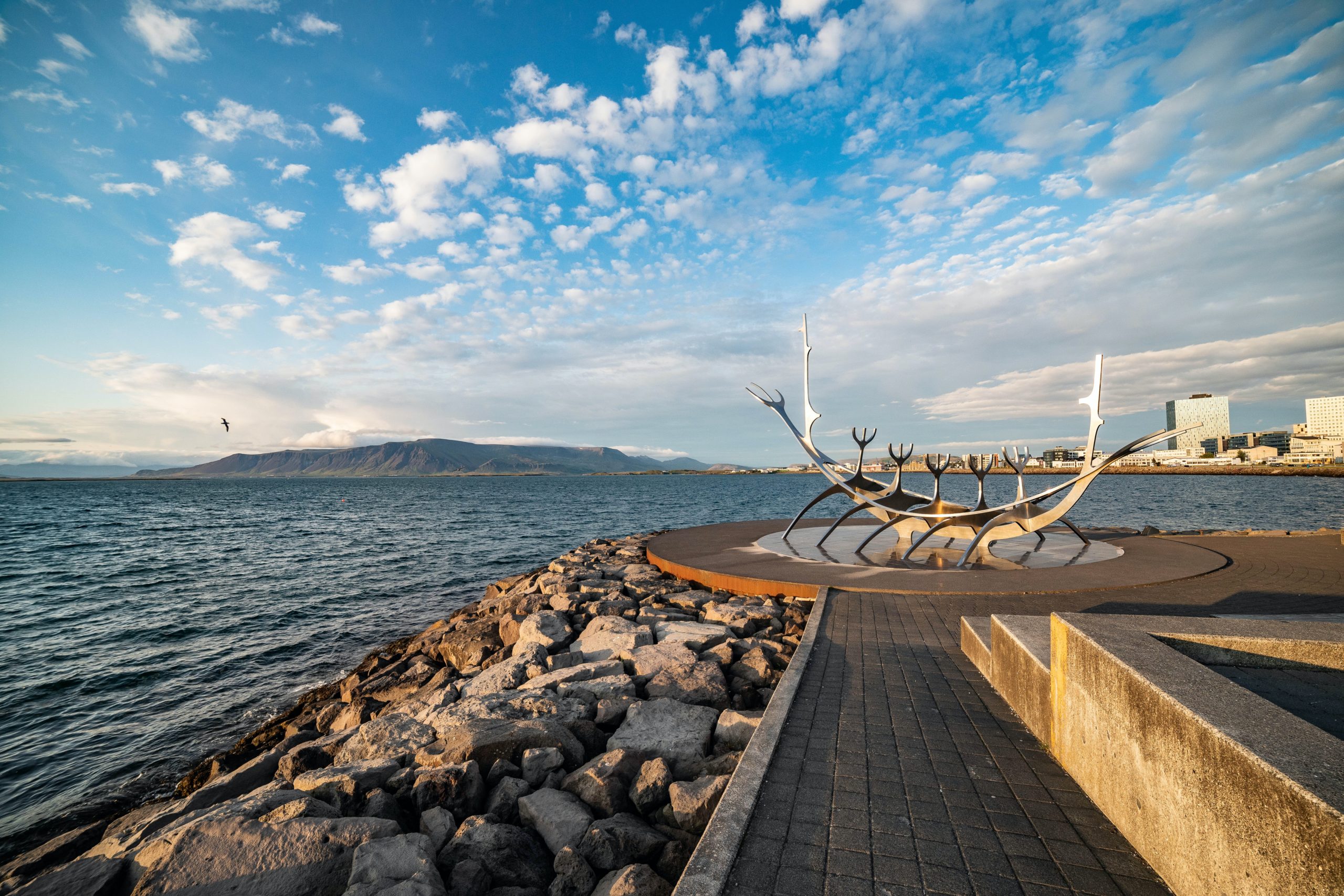
2. The Coastline path from Hafnarfjörður to Mosfellsbær
The wide arms of the capital region don’t stop at Reykjavik. They include the towns of Hafnarfjörður in the south and Mosfellsbær in the north. Nestled along the jagged coast, you can walk to and from all of these places using the Blá lykilleið (Blue main path), also known as the Strandleið (Coastline) walk.
You can ride or bike all the way to either end. While it might take you a while to complete, this connection gives you a huge amount of coastal path to tread. Depending on the cloud cover, you’ll find people populating the Reykjavik half of it often as they set cameras up for some aurora watching.
Looking towards Esja gives you a dark northerly view over the water, and helps to cancel out some of the city light. The further away from town that you go, the darker it’s likely to get- so an evening walk on these fine paved city paths may be a great spot for you.
You can see the lay of the walk here, and look at all the other options! This might not be the first thing you think of when you envision trekking, but after you’ve enjoyed it once you’ll see why we’re calling it some of the best hiking in Iceland near Reykjavik.
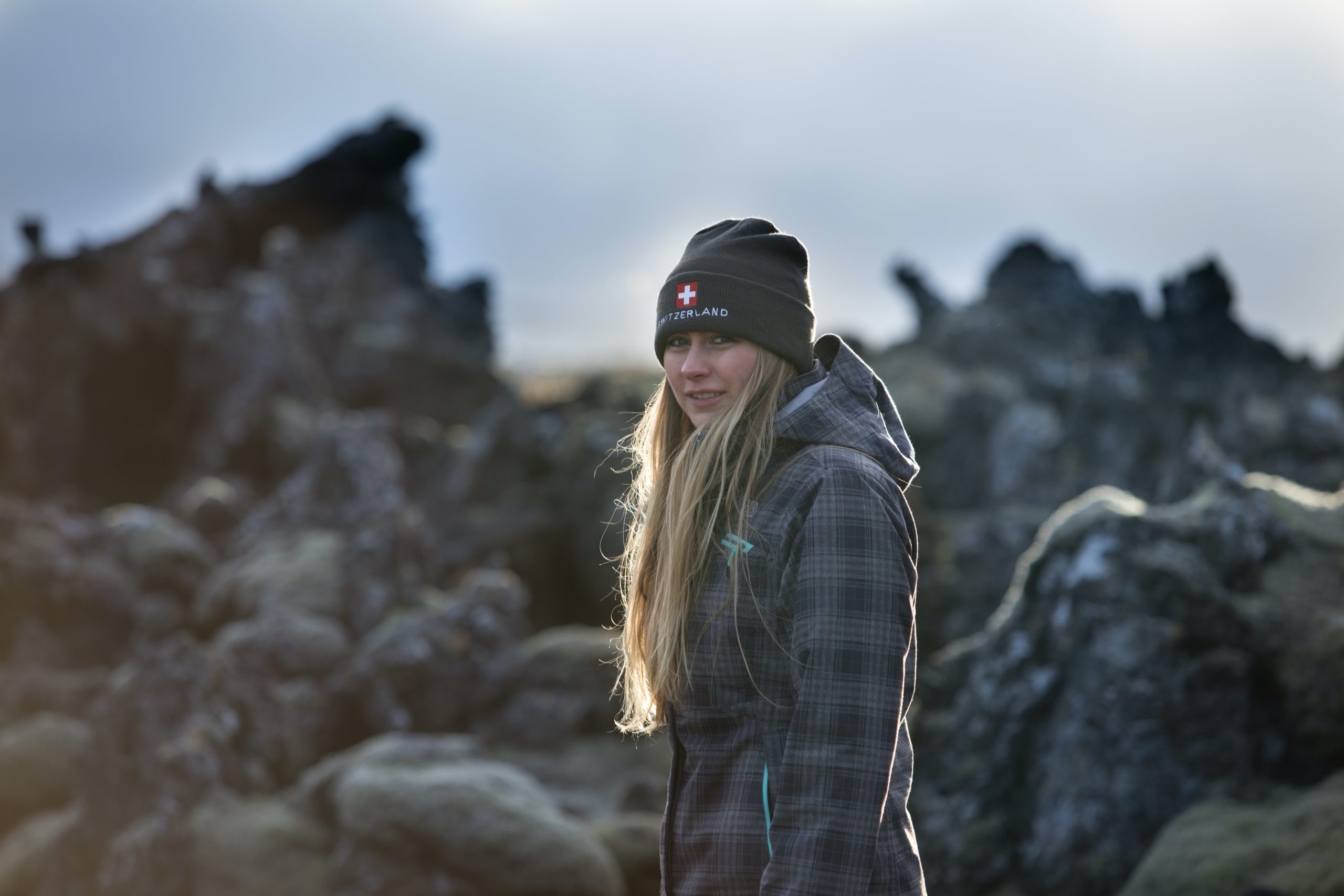
3. The red hills of Heiðmörk
The nature reserve of Heiðmörk is a constantly evolving treasure of the city, and arguably some of the best hiking in Iceland near Reykjavik. Heiðmörk is a large area that actually encompasses some of our other favorite spots, so you’ll want to check out a map to see all of it quickly.
The city has been busy in Heiðmörk over recent years and has maintained and created multiple trails, recreation areas, and even some camping grounds. And the wonders here are countless.
From its moss-covered lava fields to the nearly Martian Rauðhólar pseudocraters, to the Christmas tree forest at Holmsheiði, this is an area that you’ll need a lot of time to discover. Because of its location on the edge of town, Heiðmörk is an ideal tangle of trails that you can walk in search of the lights.
The paths here are well cared for and fairly simple difficulty wise, so it’s a good spot for adventurers of varying abilities. It’s also accessible by local bus! But before you go, double check the schedule to make sure you know the time of the last ride out. It’s a long walk back into the city center!
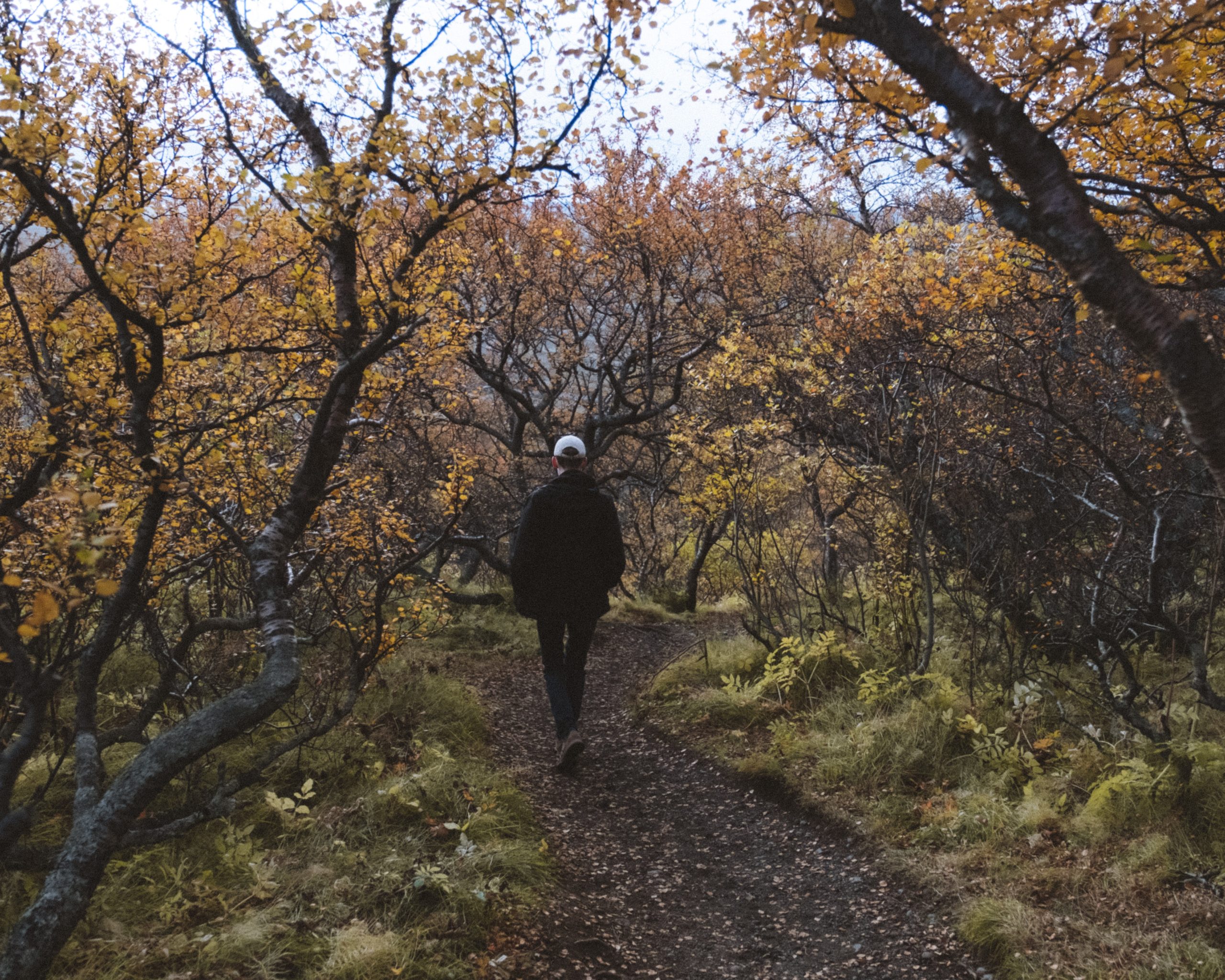
4. Elliðaárdalur: A city oasis
While hunting for the best hiking in Iceland near Reykjavik, you are likely to hear about the Elliðaárdalur valley. Elliðaárdalur is a lush green space tucked away in the city, cradling the protected Elliðaár river.
After walking the concrete streets and paths of Reykjavik, Elliðaárdalur is like a rare portal into a fairy world. Punctuated by recreational trails and tiny waterfalls, Elliðaárdalur is home to a surprising amount of wildlife.
Watch out for all the mink and rabbits who call this place home, as you will likely see some on your journey. (And keep an eye out for salmon! They populate this crystal clear river, making it an important fishing spot close to town.)
This area is connected to many other green spaces and is great for pedestrian adventuring. You can link up to other walking and cyclings paths through Fossvogsdalur, and even as far as Heiðmörk.
Elliðaárdalur borders many popular Reykjavik neighborhoods and is a great spot to visit if you happen to be spending most of your time in town, but still want to get a glimpse of Icelandic nature.
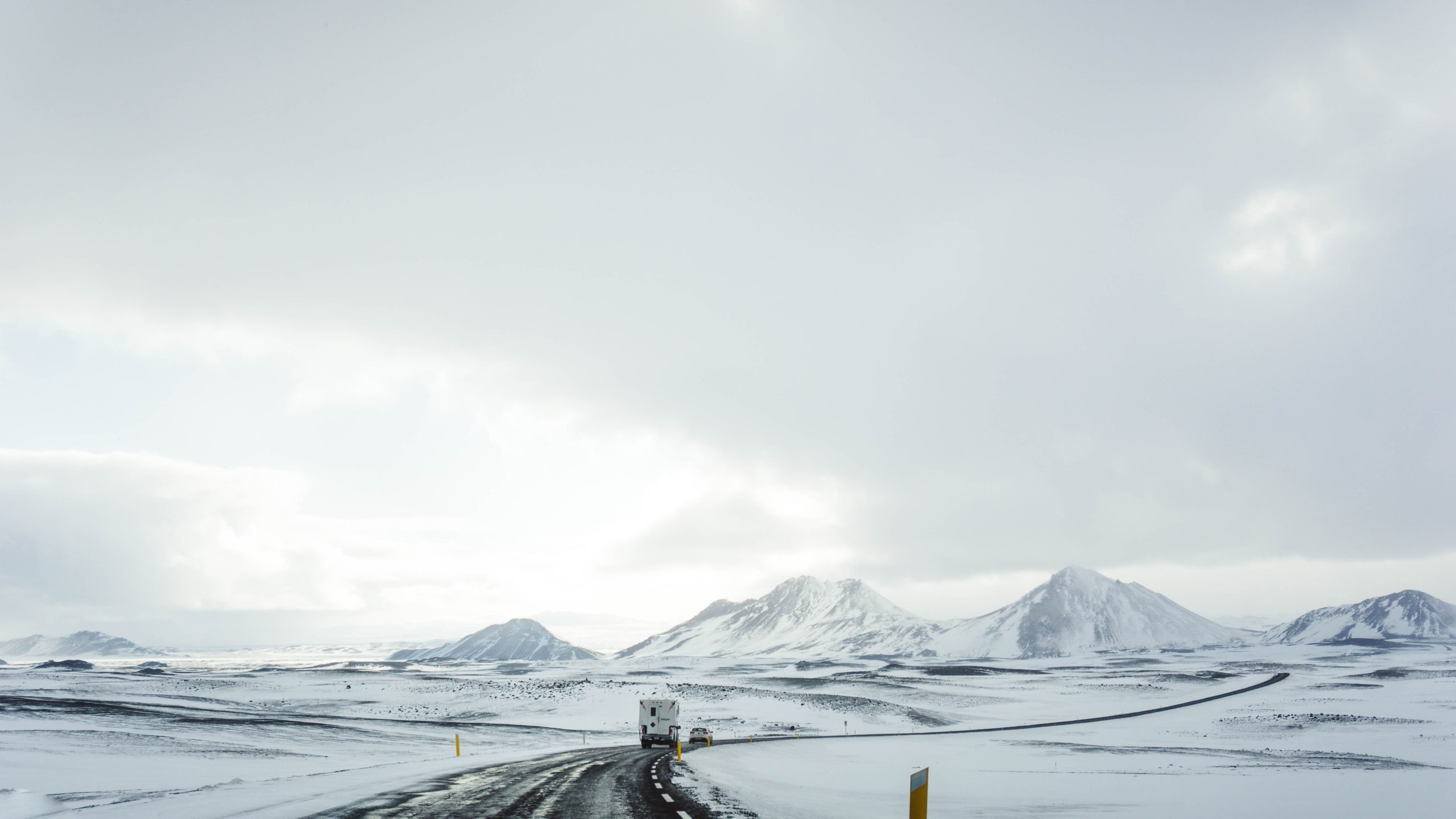
5. Vífilsfell and the Blue Mounatins
Vífilsfell is a possible option for those that have wheels and are used to winter trekking. There are many mountain paths that are popular hiking in the capital area that we’ve left off of this list, primarily because they are maybe not the easiest options for nighttime winter adventuring.
Vífilsfell on the other hand is a gorgeous choice if you’re surefooted and looking for some big views outside of the immediate grasp of town. Nestled within the Bláfjöll (Blue Mountains), this area is popular for trekkers and winter sport enthusiasts alike.
The road up to the Bláfjöll ski area passes right by, and other trails in the area populate the zone as well. This is a quiet part of town just off the route 1 highway, so you may want to save this trek for a time that you have access to a vehicle.
And don’t fret! If you’re not feeling up to a mountain hike, this is a great spot just for hanging out or checking out the slopes. The best hiking in Iceland near Reykjavik doesn’t even require hiking, you can see it just fine from the parking lot at Litla Kaffistofan across the street.
Even if you only drive through Bláfjöll on your aurora hunt, it’s worth it just to see the sudden majesty of snow-covered volcanic peaks rising out of the earth right after exiting the glowing city. The peace here is vast, colorful, and lonely- and a great first look at the wild country beyond the manicured city streets.
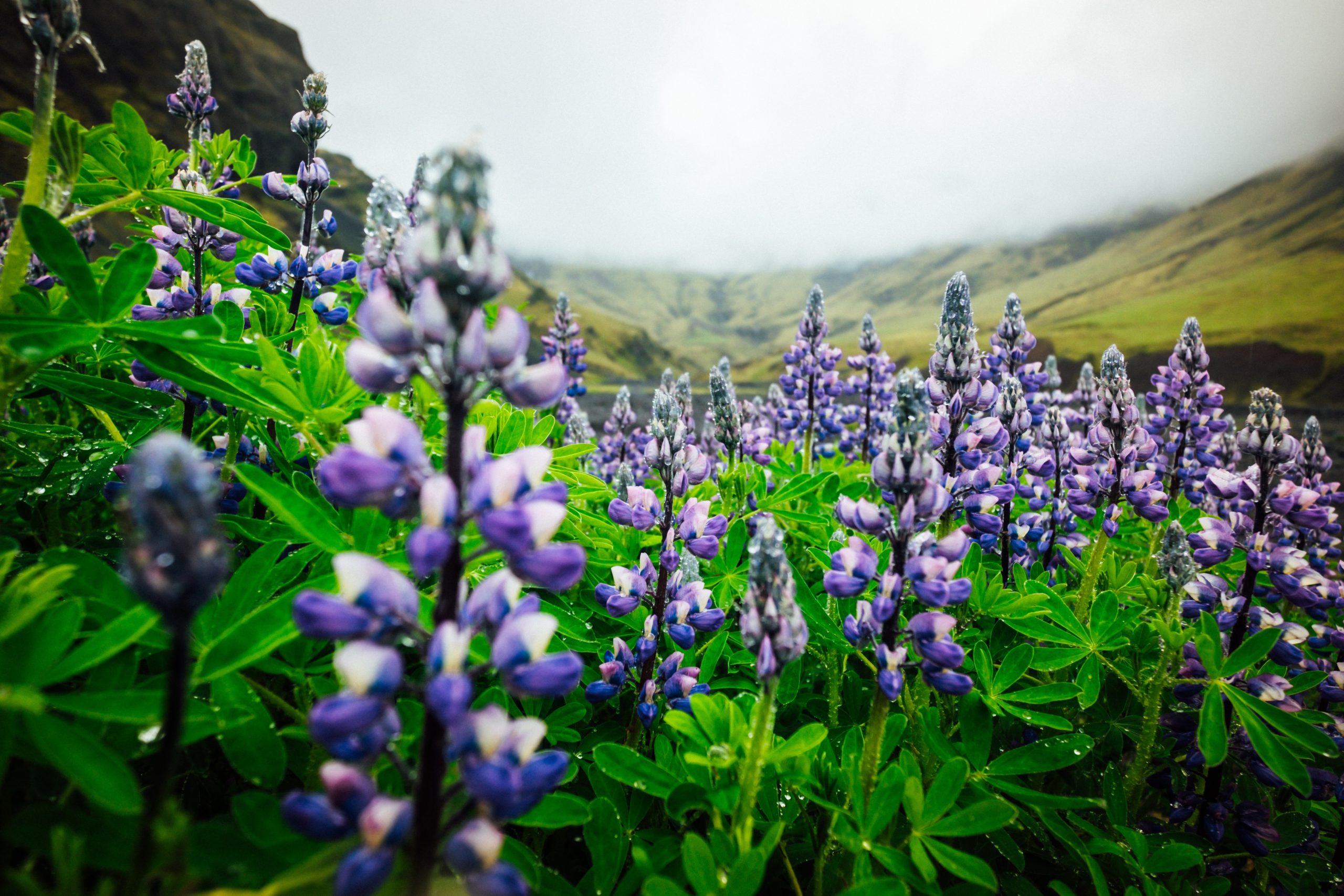
6. Grafarholt and Úlfarsárdalur in the shadow of Úlfar’s Mountain
Another hidden-away escape are the vast meadows of Grafarholt and Úlfarsárdalur, peacefully wrapped around the mountain Úlfarsfell. This is a residential area and outdoor recreational spot just north of the quiet neighborhood of Grafarholt.
In the summer, this place is absolutely flush with purple lupin flowers and gentle meadow grasses- at least, in between the sprawling lava fields. Curled around the river Úlfarsá, this is another place where you’ll find copious bird life and salmon. (And maybe even a few horses! Many of them call this area home.)
The trails in this area are family-friendly and accessible, and you can access this zone via public transport. If you’re looking for a bit more of a challenge, Úlfarsfell is likely one of the more reasonable winter mountain hikes available. (..You guessed it! We’re going so far as to call it one of the best hiking in Iceland near Reykjavik!)
In all seriousness, the highest point on Úlfarsfell is around 307 m. (1007 ft.) and is accessible via a fairly even and wide path. There are great views of Reykjavik and the sea from the summit, and it only takes around 2.5 hours to complete. As far as vistas go, this is a great place to catch the lights, and you are likely to have the whole thing to yourself.
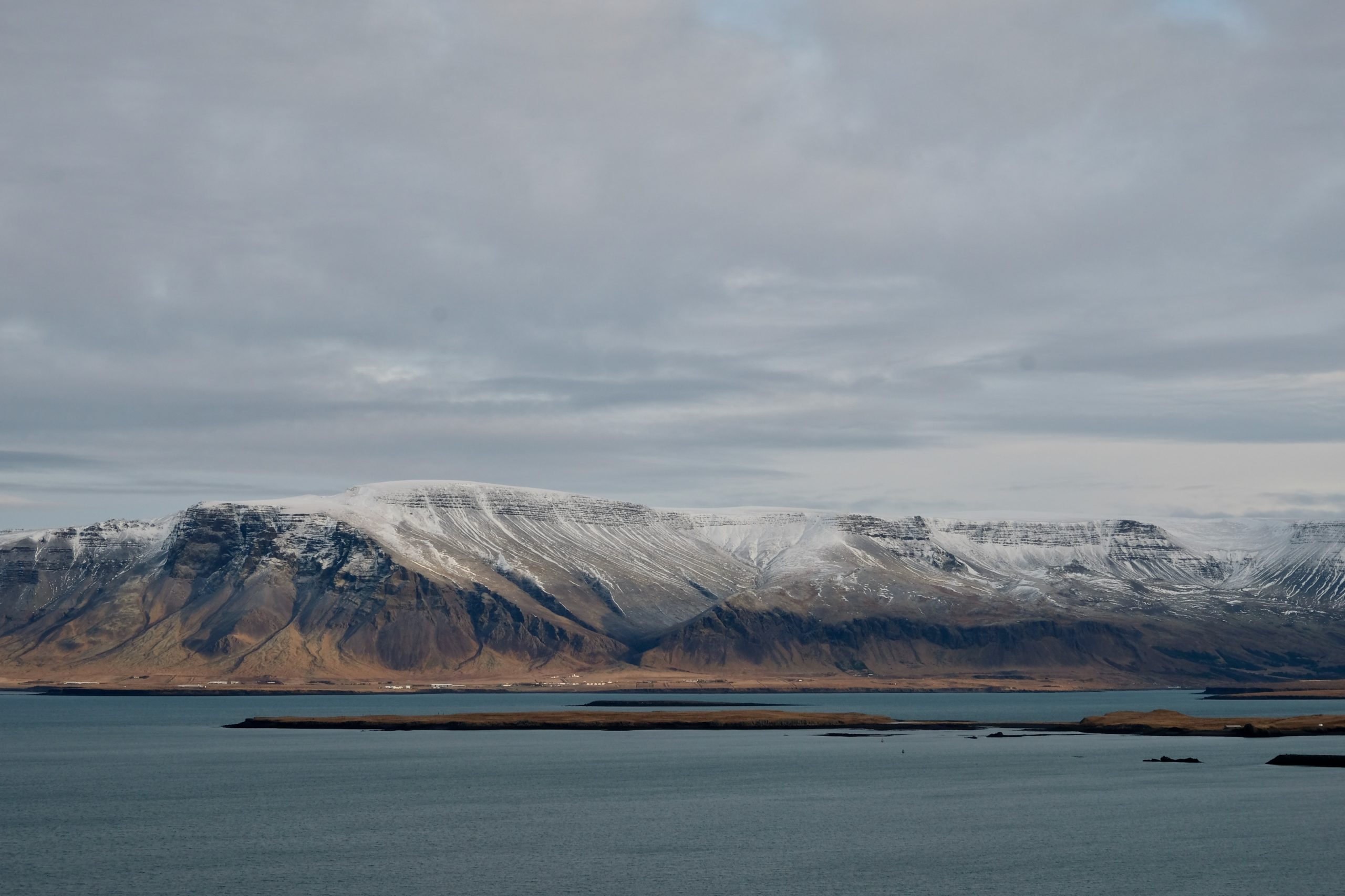
TIP: This mountain is near Esja, one of Reykjavik’s most famous landmarks. It goes without saying that Esja is some of the best hiking in Iceland near Reykjavik, but it is also some of the most challenging.
While these paths are steep in good conditions, braving them at night in high winter is not recommended for most trekkers. You can try for an Esja hike in the autumn, but otherwise, seeing her from nearby Úlfarsfell is a great compromise.
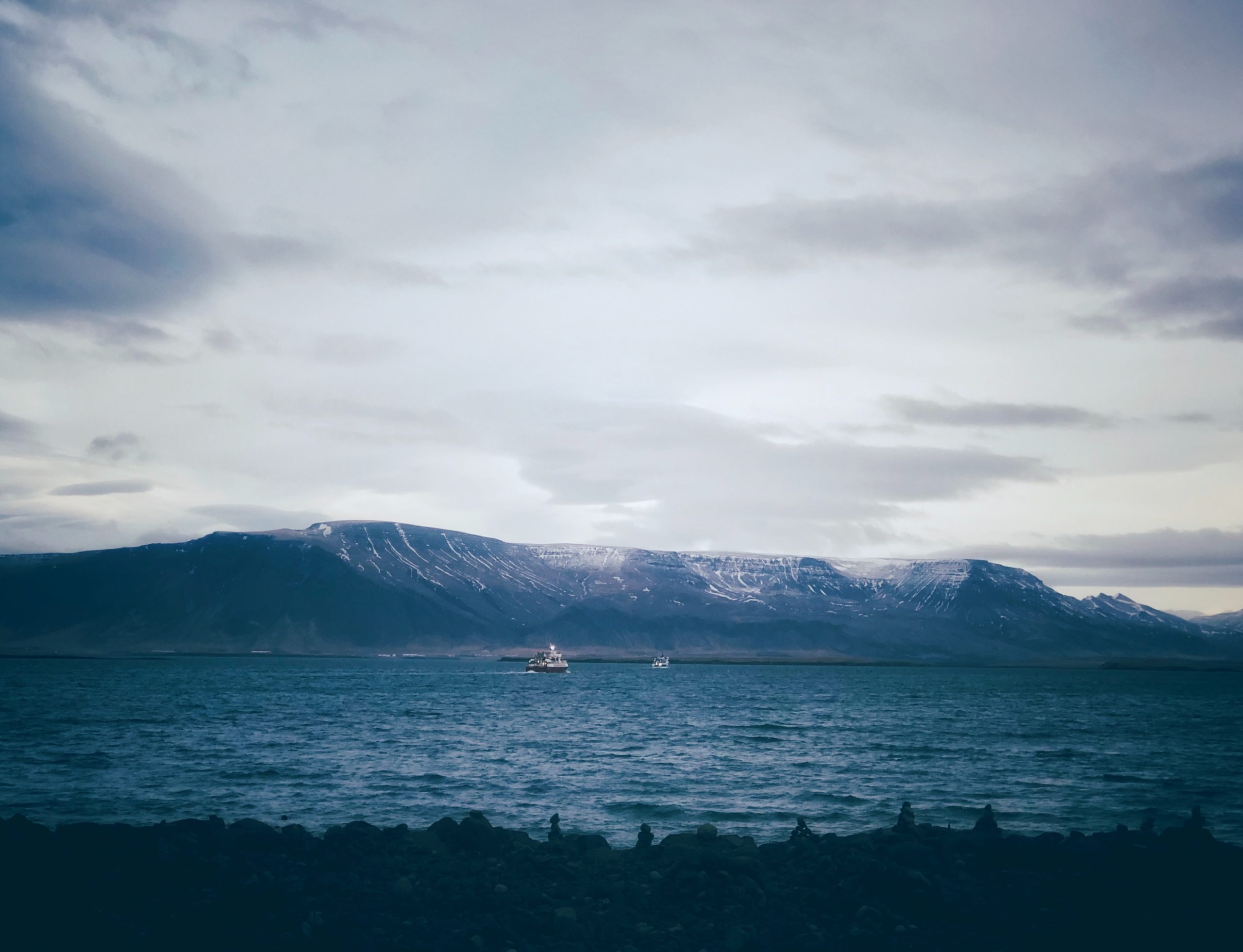
7. Viðey: The island’s island
Looking for an island getaway from your island getaway? You’ll be hard-pressed to find a closer option than nearby Viðey. Once the home of a monastery, Viðey is the home of Yoko Ono’s Imagine Peace Tower, and countless trails.
There is a lot of history on this little island, and some of the oldest rock in the Reykjavik area. In fact, nearly 2 million years ago, it was a volcano! (Considering where we are, this may not come as much of a surprise to you.)
These days, however, we have to say it’s some of the best hiking in Iceland near Reykjavik, not to mention one of the most exclusive city spots to watch the northern lights. But how does one get there?
In the summertime, the ferry runs pretty regularly. But in the wintertime, the ferry only runs from the harbor Skarfabakki on weekends. There are however aurora boat tours available that can land on Viðey for a portion of the tour, giving you a chance to grab some solid ground to plant your tripod in for a lucky northern lights shot.
However you manage to get there, hopefully, you’ll get to take advantage of some of these historical trails. This place has seen and housed invaders, paupers, politicians, farmers, and more puffins than you’d expect. But today, it is protected and allowed to finally thrive. A true shoo-in for the best hiking in Iceland near Reykjavik.
Beautiful Northern Lights...and 10 important safety tips to remember while you look for them
Do you know how to keep safe while you chase the beautiful northern lights?
We all know how beautiful northern lights are, but what about how to stay safe while we look for them?
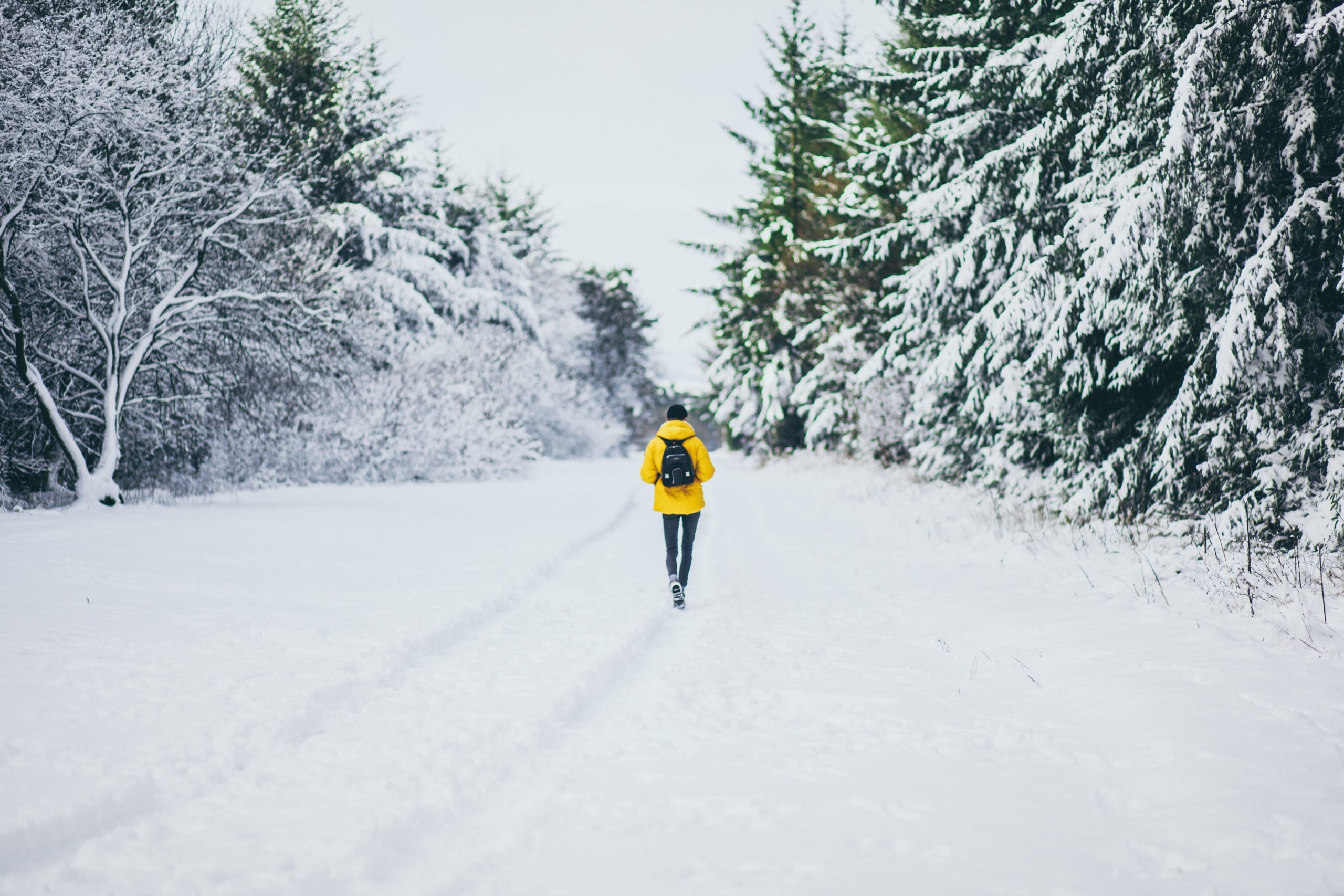
1. Dress for the hunt
Dressing in layers is key for surviving Icelandic weather. Because of the Gulfstream, the climate in Iceland can be surprisingly moderate- but because of its North Atlantic location, that moderate climate can include some quickly changing weather conditions. In order to manage the unpredictability of weather or temperature, you might need a few layers of clothing.
This can help you regulate between inside and outside temperatures quickly, and can give you that extra warmth you might need to stay outside hunting just a little bit longer. The temperature might not be astronomical, but it can add up if you’re out for a few hours.
If you can swing it, try adding a waterproof layer to your collection. This could be waterproof pants for maneuvering in snow or even a waterproof top layer. In the autumn months when there’s a lot of rain, this kind of coverage could be key to enjoying the evening.
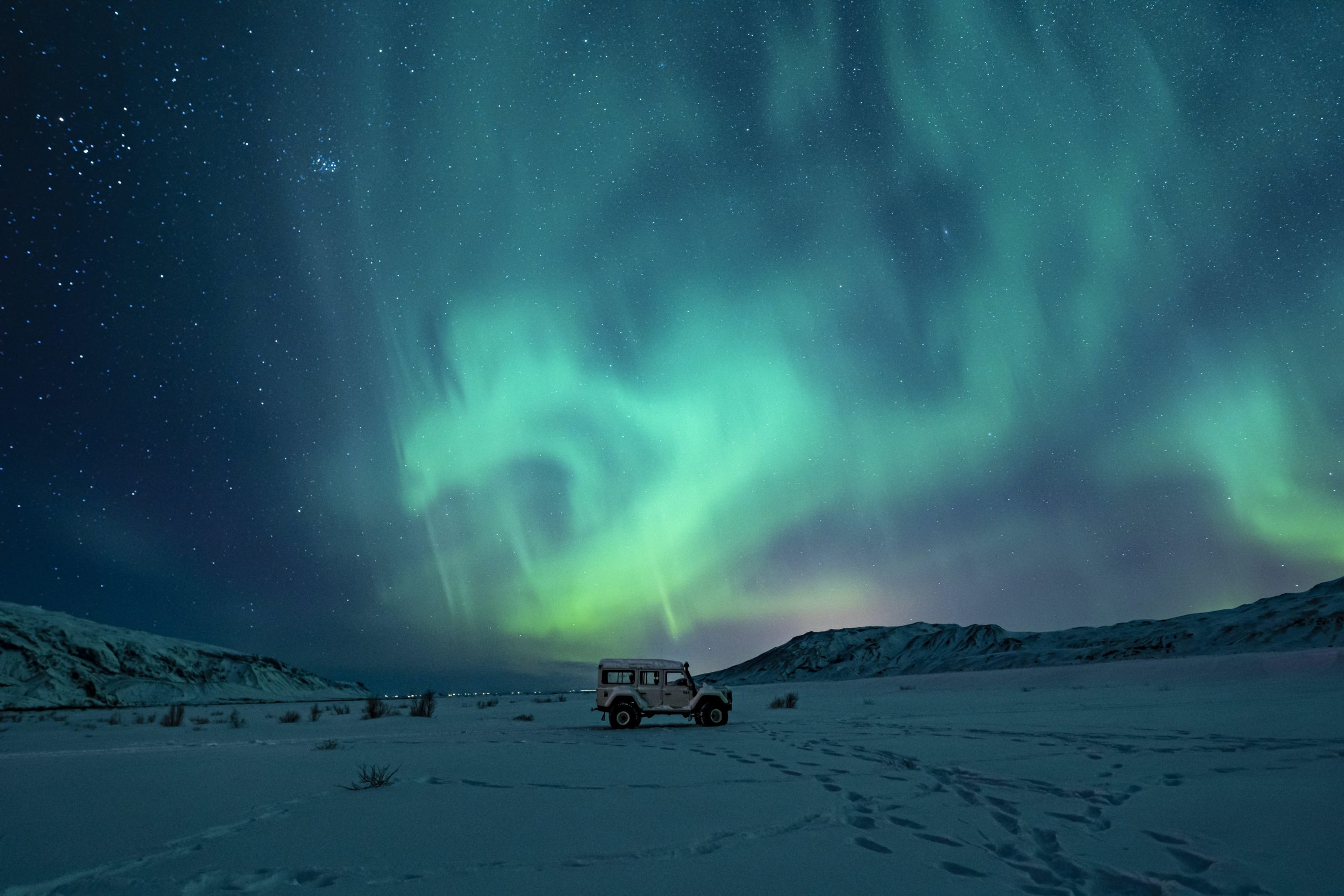
2. Be careful where (and how) you park your vehicle
The first point of this tip is to never park on the road. We don’t need to elaborate on that, because no version of it should be on the table. The roads in Iceland are typically narrow and do not always have a shoulder, so it is not recommended to attempt a pullover for the sake of those beautiful northern lights.
Many of these roads are somewhat raised and have a sloped edge that cannot always be easily seen in the dark. This and other obstacles like lava fields can be easily hidden by accumulated snowfall.
Nighttime driving is difficult under the best conditions, so keeping an eye on the weather, visibility, and the other speedy travelers that you’re sharing the road with is enough pressure already.
If you’ve seen the lights from your window, don’t panic! Though it may be a sacrifice for the driver, the passengers in your car can still snap a shot or two while you search for a safe place to pull over. This could be a designated observation point, a parking lot, a safe place off of the main road.
Try to be respectful of private property, and avoid opening any gates that you may come across. These gates are often keeping livestock from straying onto the road, which is a good reminder for us as well. The beautiful northern lights may be calling… But never let them lead you into the road.
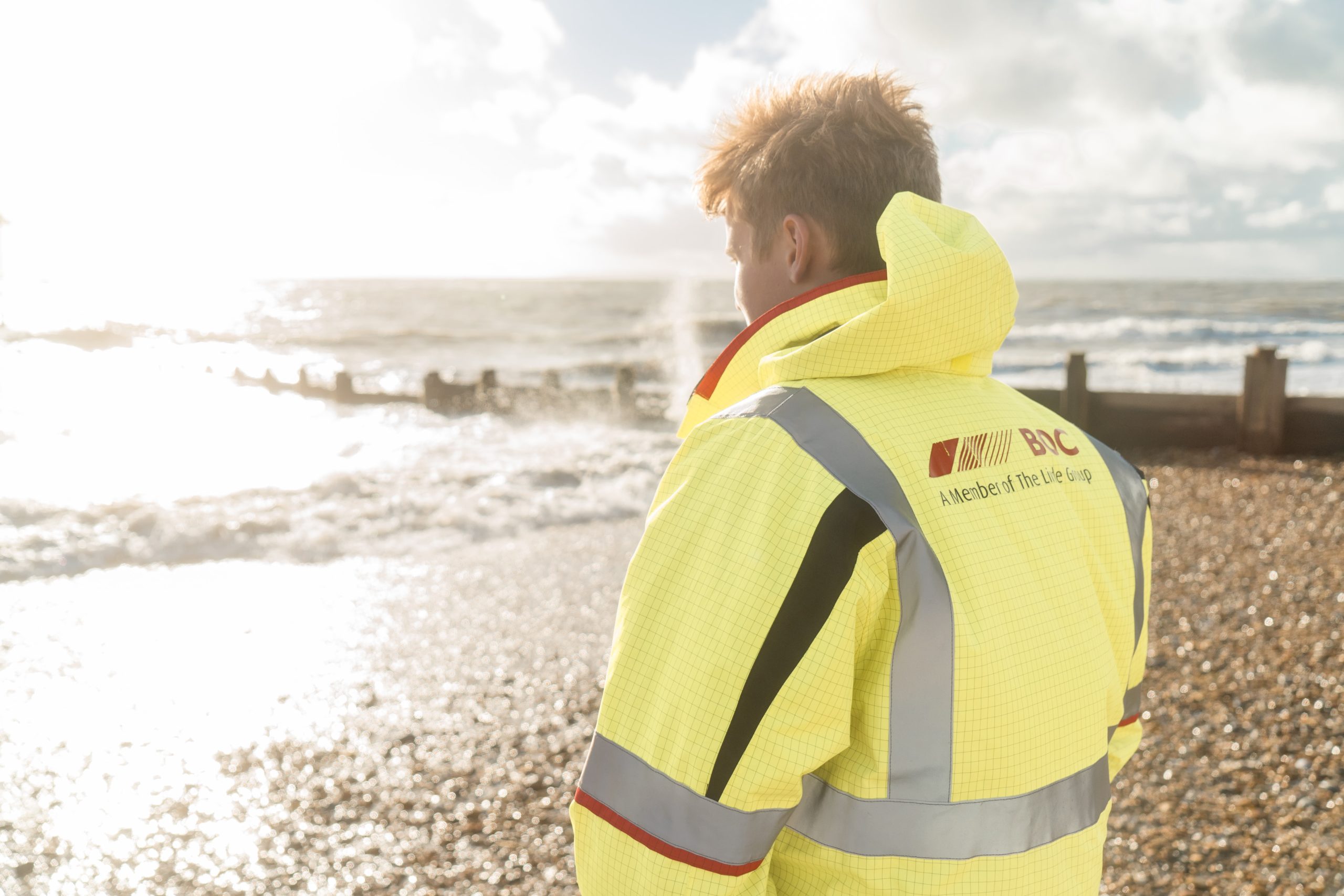
3. Try reflectors!
If you’re local, you probably already have one somewhere on your person. They can be painted onto your clothes, clipped to your zipper, or even taped onto your gear. Reflectors come in a variety of applications, and there’s one for everyone.
Iceland is dark for a large part of the year (which is why we get to see the beautiful northern lights), so reflectors are a popular accessory here. They can help you maintain some visibility in the dark, which could help a group leader to keep track of you, or help a motorist see you from further away.
If you don’t have one, these can often be picked up in gas stations, outdoor gear shops, and even souvenir shops. Look for a fun one that you can use as a zipper pull!
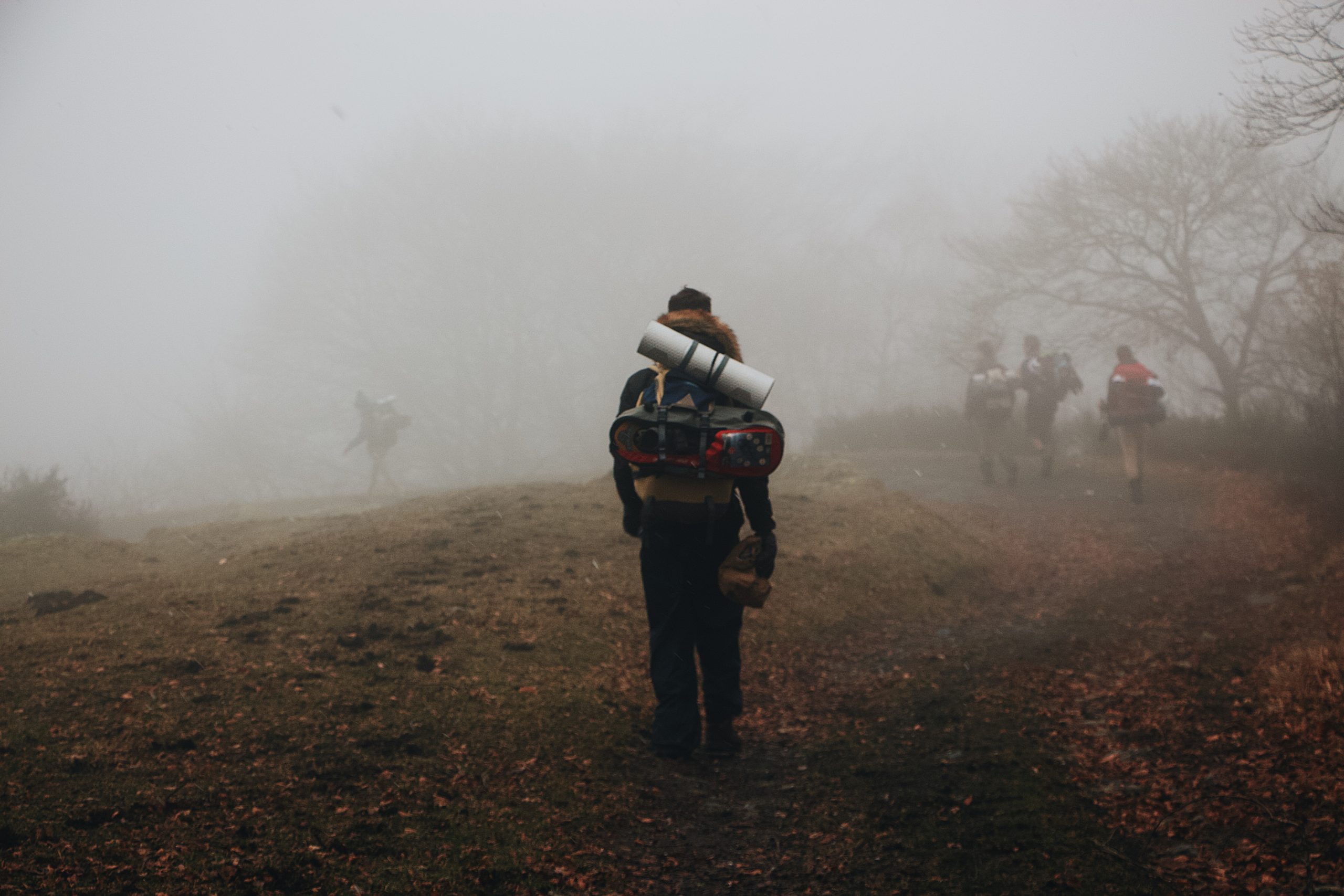
4. Tell someone where you're headed
This is a safety tip that you should use no matter where in the world you’re adventuring! If you can’t tell a friend where you’re going (because they’re coming too!), you can submit a travel plan to websites like SafeTravel.is.
If you’re headed out into the wilds looking for beautiful northern lights, you can also rent a Personal Location Beacon (PLB) from them as well, should you need it. These types of precautions may seem extreme, but it is always good to be prepared.
Simple trips can meet with surprise conditions, and it’s better to not need your extra planning than to wish you’d done it.
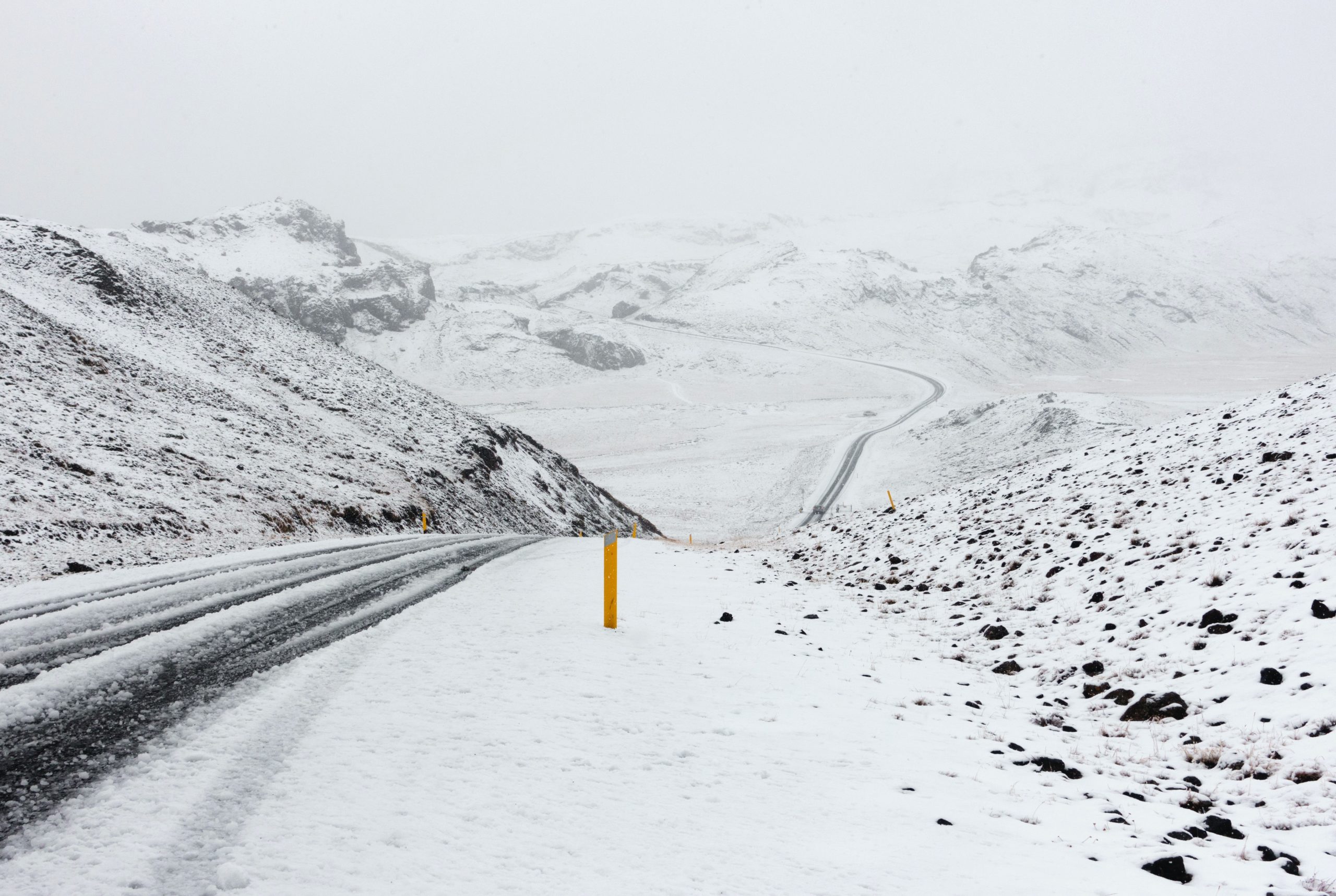
5. Check the conditions before you go
We may have mentioned this a few times already, but conditions in Iceland change fast. It’s hard to fully understand the weight of that statement until you’ve experienced it a few times, so this might have to be a point that you deposit some trust on.
Iceland’s lonely location in the North Atlantic means that we can be at the receiving end of low-pressure systems, incredible winds, and swiftly moving storms. There’s a lot of precipitation, and lots of domestic concerns like seismic activity, avalanches, and more.
You can’t predict all of it, but you can educate yourself and stay on top of the predictions by checking sites like vedur.is and safetravel.is. These websites can not only keep you safe, but they can also make you aware of new alerts and help you find those beautiful northern lights that you’re after.
Know the season that you’re visiting in, and be aware of the types of weather that most commonly happen within them. Being ready can help you decide how to proceed in a dicey situation.
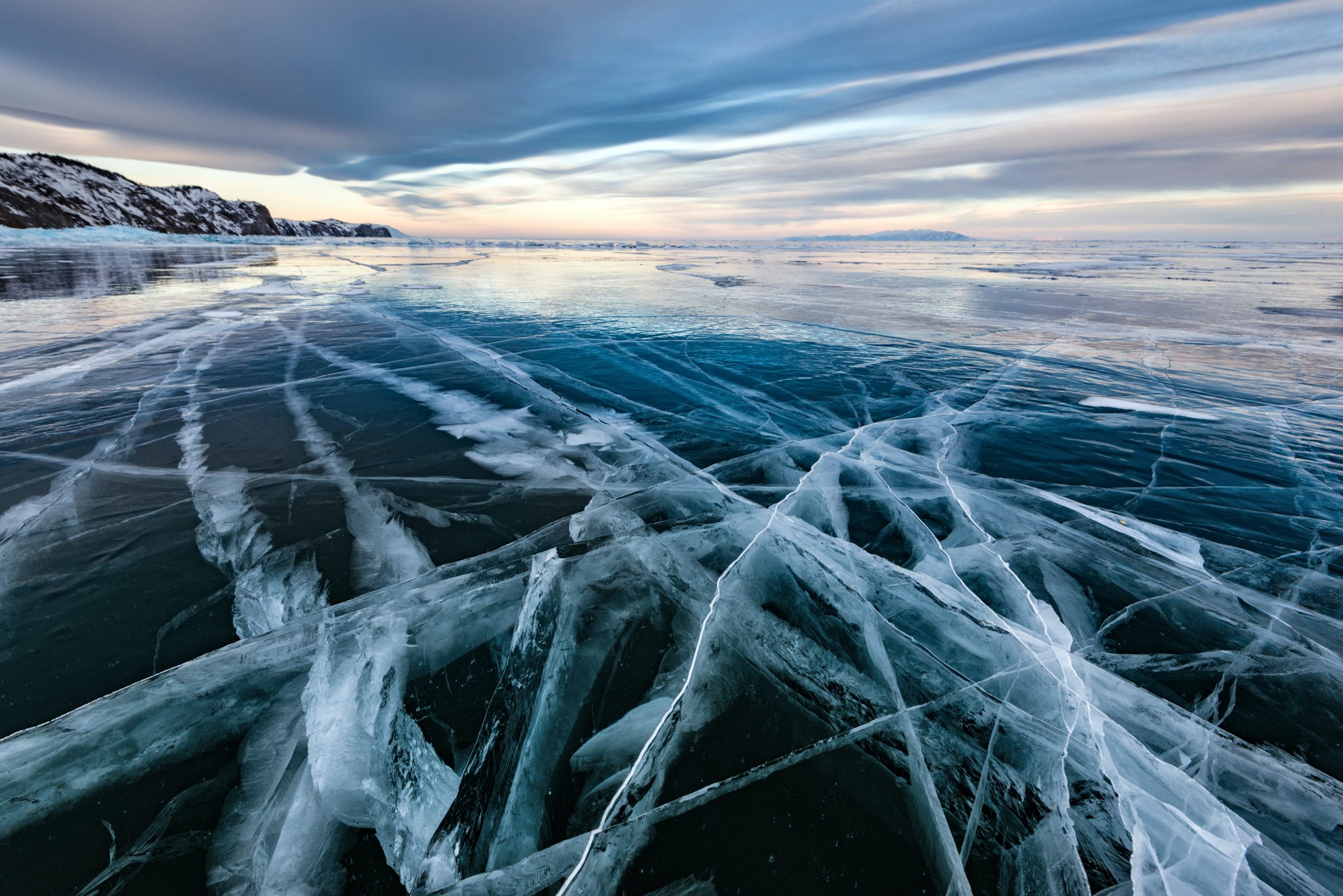
6. Learn how to walk on ice
This is less of a requirement and more of a reminder to be aware of your surroundings. In the colder months, the temperature can fluctuate throughout the day. This means that Iceland is a great spot for producing ice. (Surprising, I know.)
If there’s one thing people usually aren’t doing when hunting the beautiful northern lights, it’s usually looking at the ground in the dark. Falling on ice is a big concern in these colder months, and it goes without saying that it’s an important safety tip to remember.
You can stay upright by looking where you’re going, paying attention to how you’re walking, and protecting yourself with gear. This can mean smaller steps, keeping your weight centered above your feet (less diagonal weight-bearing with long strokes or leaning), and maybe trying out a pair of shoe spikes.
Shops throughout Iceland carry different shoe attachments for this purpose, but you will likely find them at home too. When in doubt, however, look at penguins! They seem to have mastered the technique with their upright shuffle.
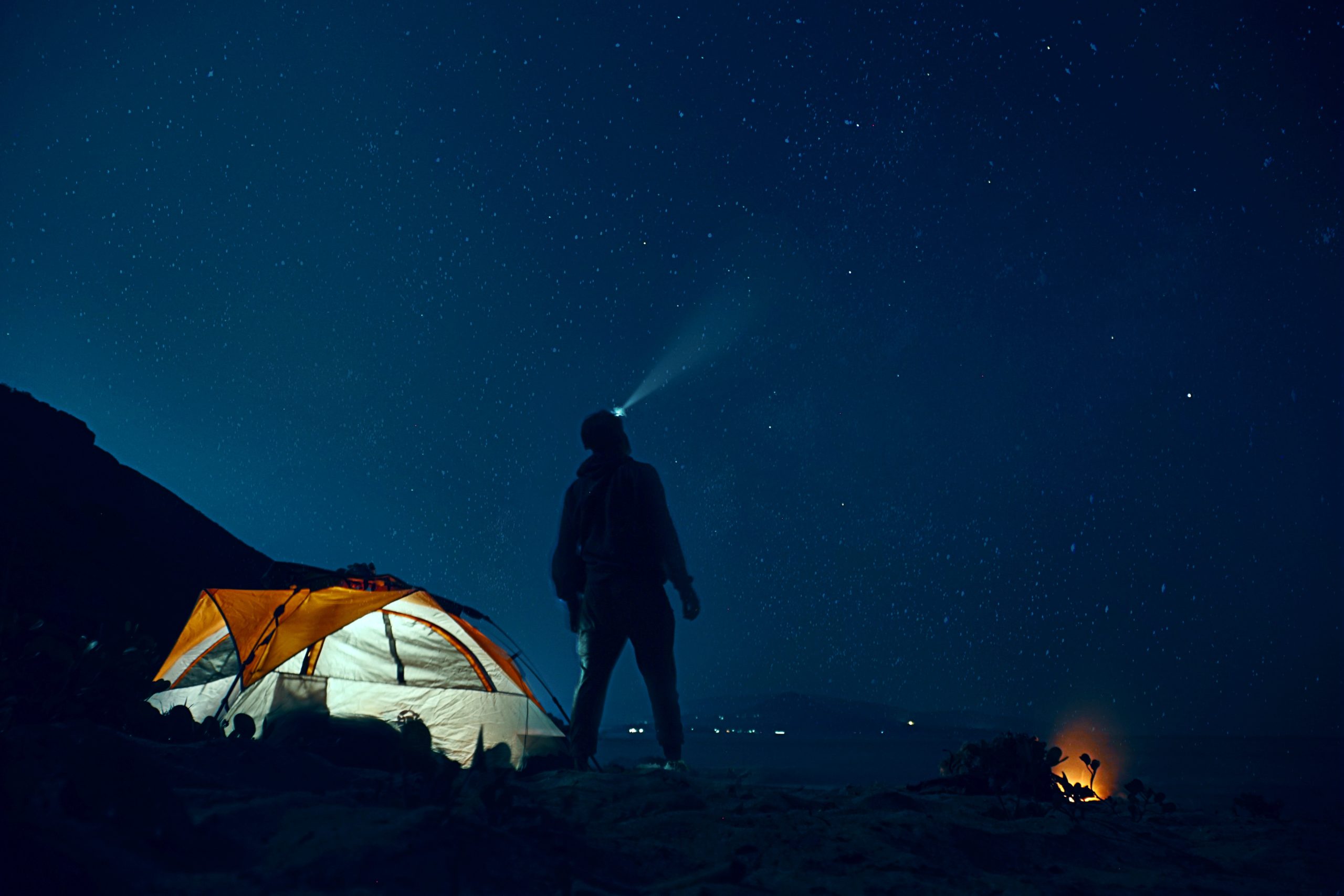
7. Bring your own light
Don’t forget your gear! Safety tips are one thing, but being well prepared is another. Depending on where you are going and what you’re doing, you will need to pack different things. Typically for nighttime activities, the biggest recommendation is a torch or headlamp.
You may also want to make sure that you have charged your communication devices and cameras, and that you are outfitted to stay warm outside. This means hand, ear, and head coverings if possible. If you are headed out into the wilds, you may want to consider a satellite phone or a Personal Location Beacon.
Organize and check all of your gear before you head out, to make sure that everything is functioning properly, and that you don’t forget anything. Oh! And don’t forget snacks! Even if you’re just out for the night, an aurora hunt is hungry work and you might not find many restaurants open after midnight.
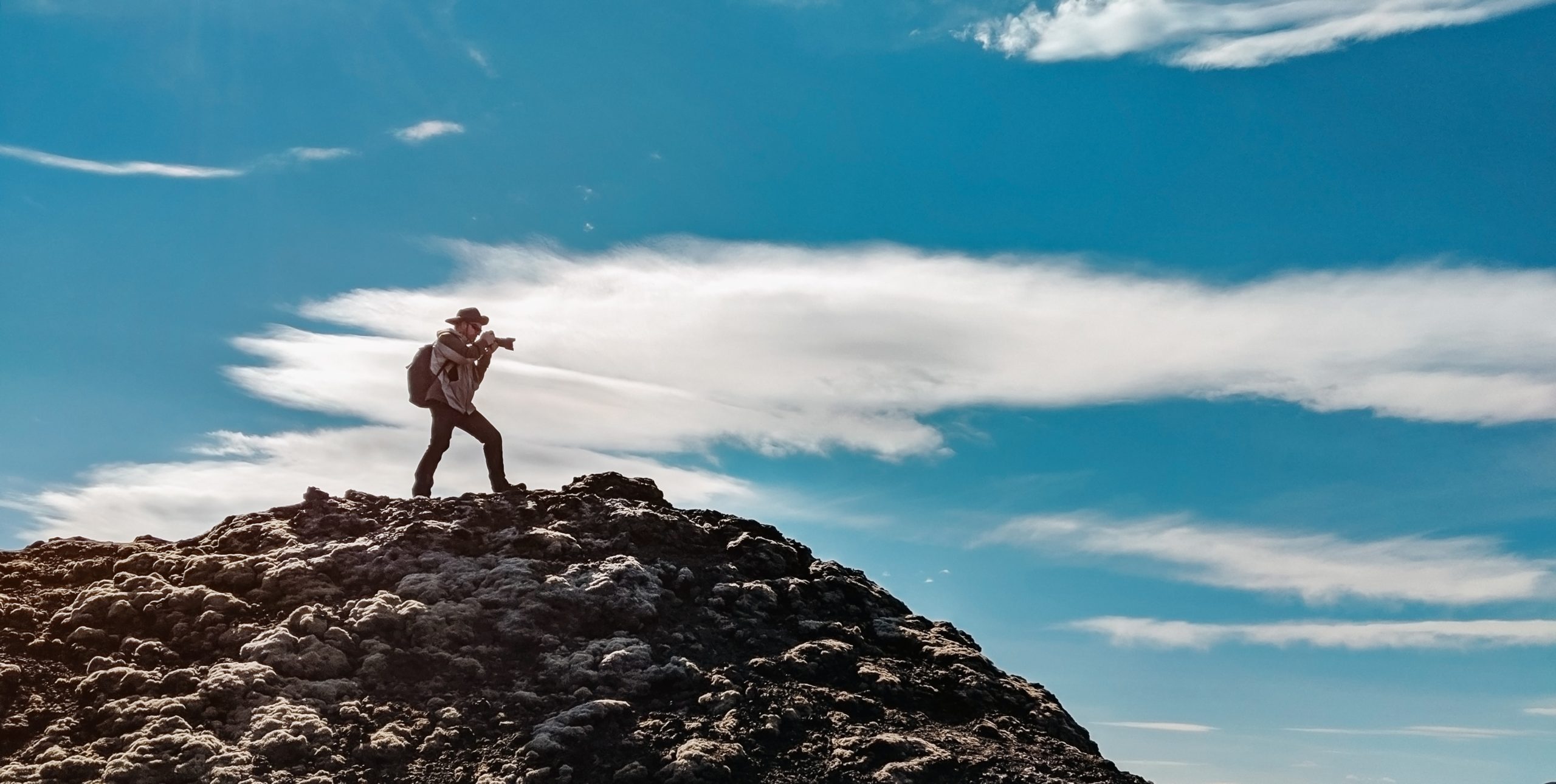
8. Look where you're going
This is a nighttime activity, and if you’re hunting in a great spot, you will likely have some impressive dark cover, making it harder to see where you’re walking. We covered ice earlier in our list, but what about terrain? If you’ve had a chance to wander around in the daytime, you may have noticed how uneven Icelandic ground can be.
Iceland’s biome is Arctic tundra, which means that while you may not run into many trees, you will find thick brush and other low-lying grasses that can obscure variation in terrain. In many places that would be manageable.
But in Iceland, that terrain is likely to contain lava fields and rock protrusions. The ground might look flat, but watch out for holes! Like many of the simplest safety tips, this seems like one that doesn’t need to be mentioned, so let’s stay on the path, and keep it that way.
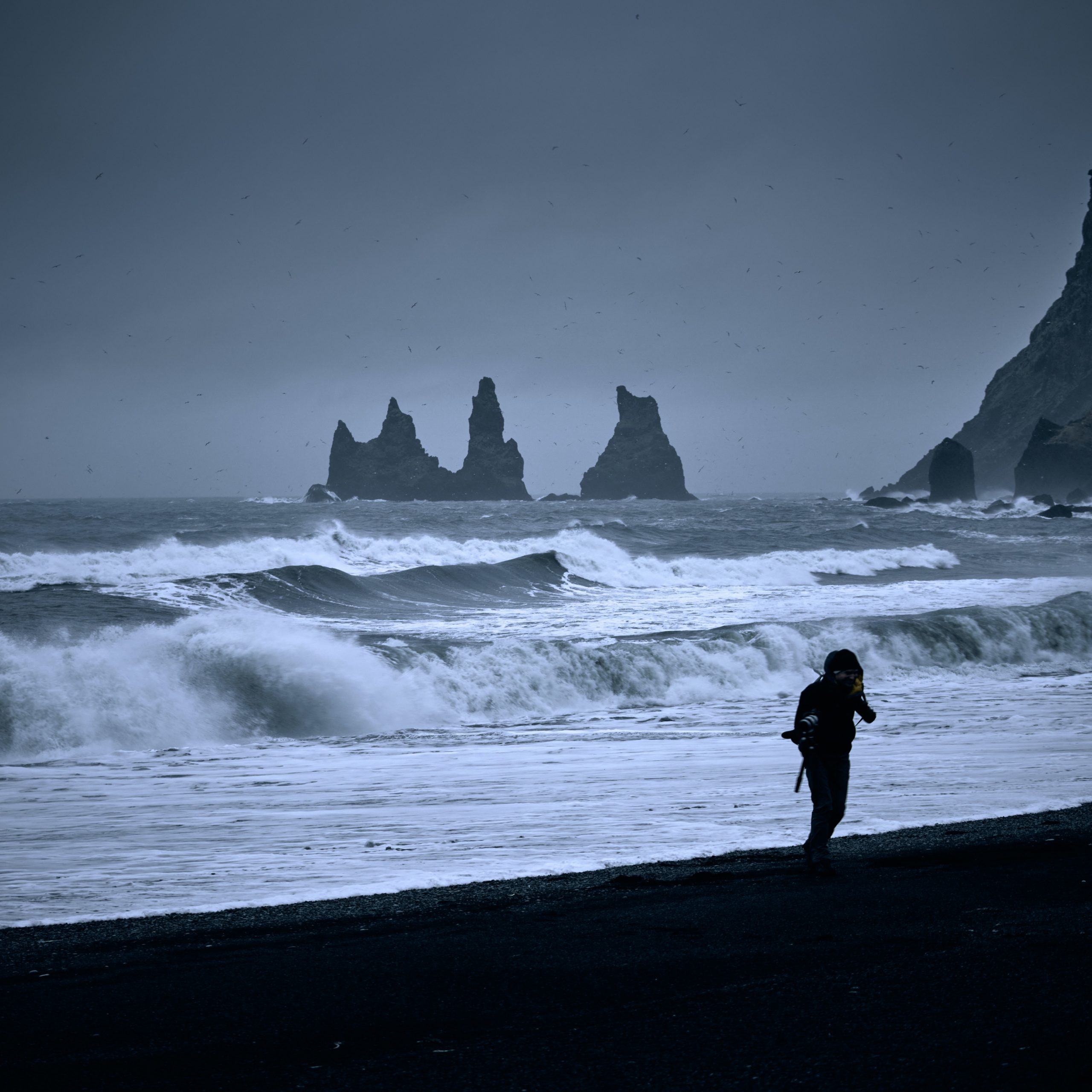
9. Beware the water's edge
Another terrain tip! (Are you starting to get the feeling that these might be linked to many avoidable accidents?) Water is a big part of Iceland’s terrain. Whether it’s the huge amount of precipitation that we get, to the frothing glacial rivers, the surrounding ocean, or the placid lakes and ponds of our inland areas.
Many of these bodies of water may look similar to others you’ve seen before, and they may be! But at least during these nighttime activities, they are best left alone. At the time of this writing, the ocean near Reykjavik was a whopping 3.1°C (37.58°F).
This temperature paired with strong currents and stormy winter weather is not safe for inexperienced swimming. There are very few places that one can swim in the ocean here, so you will not find beaches staffed with lifeguards, monitoring the waves.
A fall into one of these frigid bodies of water can be treacherous during the day, but at night it can be lethal. So while you’re keeping an eye out for ice, and looking for holes in the lava- try to keep a respectful distance from the water, and stick to hot pots.

10. Stay rested
The beautiful northern lights are only visible at night, which is usually when most of us sleep. If you’re visiting, you probably have some pretty packed days ahead of you. Sightseeing, activities, restaurants, maybe even some hiking.
It’s easy to forget to take a break when you’re hurrying to see all the things on your list. (Have you ever needed a vacation after your vacation? Tell me about it.) There’s stuff to do! Stuff to see! And tonight is a great night for auroras! It sneaks up on us.
But don’t forget to slow down and take a break, or a nap, before heading out for the night. Many visitors go from day trips to aurora hunts, and if you’re driving it can be a lot to handle.
Make sure to eat an early dinner, and take a small nap before you go, just to refresh. Being out in the elements is hard work, and sleepy night driving is a dangerous chance to take. Not to mention following all of these other tips!
Be careful with yourself. We want you to come back, for all the beautiful northern lights yet to come.
Aurora Hunter Top 10: Where is the best place to see the Northern Lights on the South Coast?
When the sky is only clear in one region, that’s where you’re headed! But once you get there, then what?
So you’re headed down south, and you want to know: “Where is the best place to see the northern lights on the South Coast?” So we’ve put our heads together and gathered up a few of our favorite spots along Iceland’s southern coast for aurora hunting. From the rare to the luxe, we’ve got one in here for everyone.
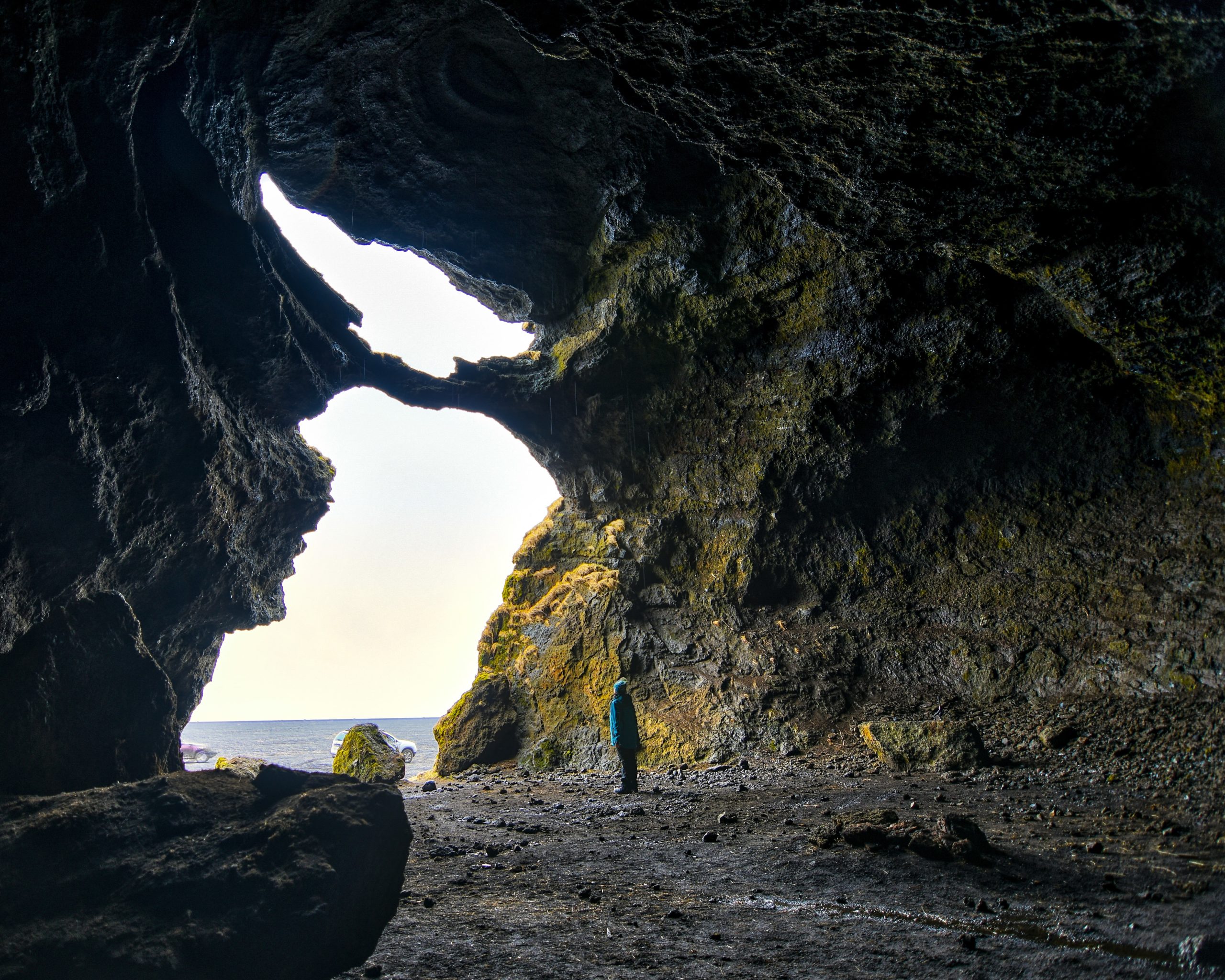
1. Gígjagjá at Hjörleifshöfði: The Yoda Cave
The south coast of Iceland is a dramatic landscape, no matter what season you visit. But if you’re looking for a spot a bit off of the beaten path to aurora watch from, look no further than the “Yoda Cave”.
The cave’s real name is Gígjagjá, but it is fondly known as “The Yoda Cave” since the entry to the shallow cave resembles a particular green individual. It is located in Hjörleifshöfði, which is an inselberg on the Mýrdalssandur plain near Vík.
Surrounded on all sides by vast black sand and seagrass flats, it is said that Hjörleifshöfði used to be an island, and the resting place of old Hjörleif himself. These days, you can drive up to it and enjoy multiple trails in its vicinity.
When inside the cave, you’ll find that the light from the outside illuminates the entry, creating a curiously familiar silhouette. Because of its shape, the cave entry is an amazing sight no matter when you visit. But imagine that shape filled with the majesty of dark sky, a million stars, and the dancing northern lights.. Not a bad spot.
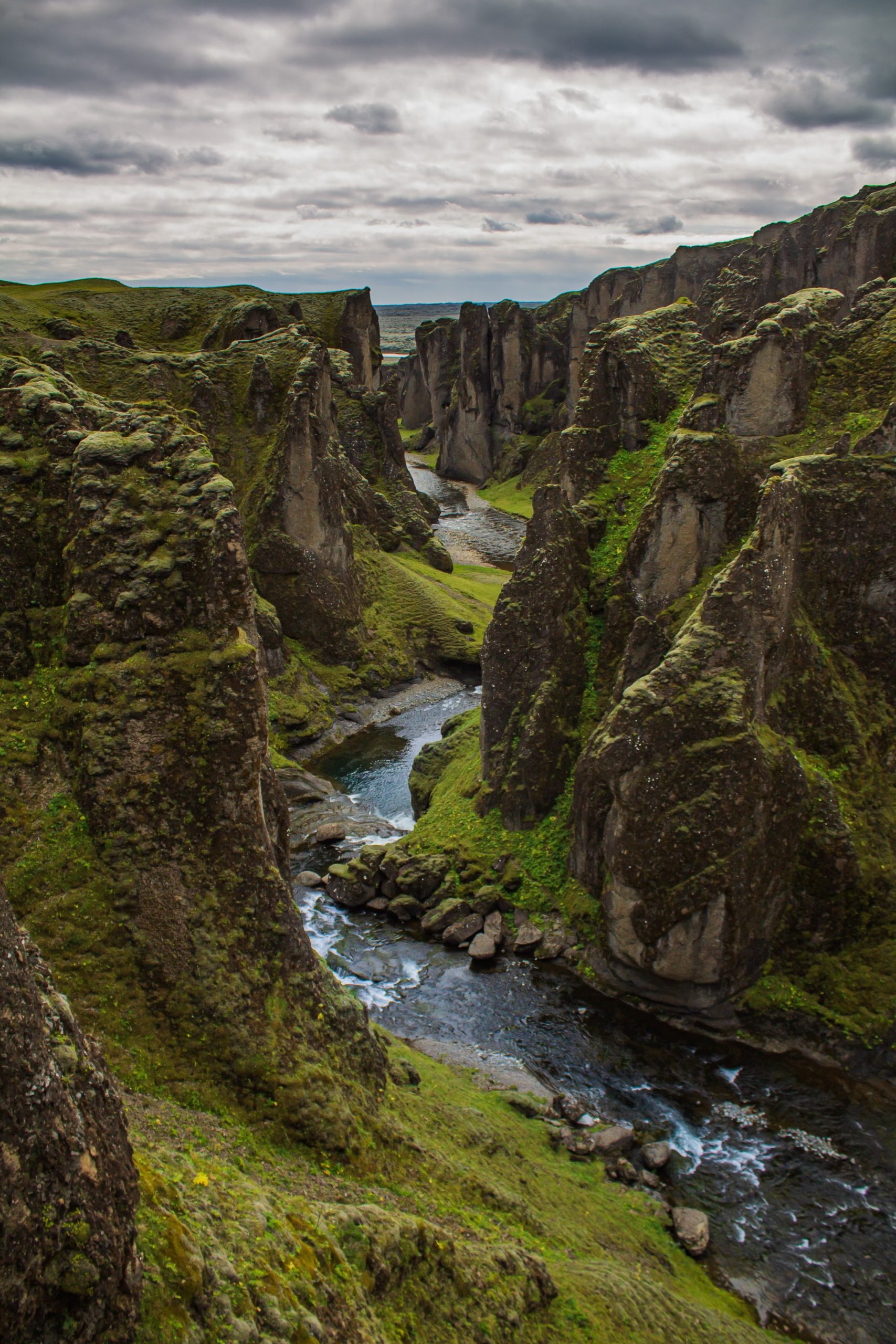
2. Fjaðrárgljúfur
At the more eastern edge of Iceland’s south coast, lies this ethereal canyon. Unlike many popular canyons, this one is not far from the main road. Right off of the village Kirkjubæjarklaustur, this canyon is nearly 2 km. long and houses the Fjaðrá river.
In good weather, the road to the canyon is accessible by all types of vehicles, and the hike along the canyon trail is easy and dry! This is key for those of us who are here to aurora hunt because unless you’re staying in Kirkjubæjarklaustur, you are probably not near a change of clothes.
The bottom of the canyon is home to an active river and a few waterfalls, not to mention protected vegetation and wildlife. Plus, the best view is on top. Fjaðrárgljúfur is a landscape photographer’s dream, so make sure you’re in the right place when the show starts!
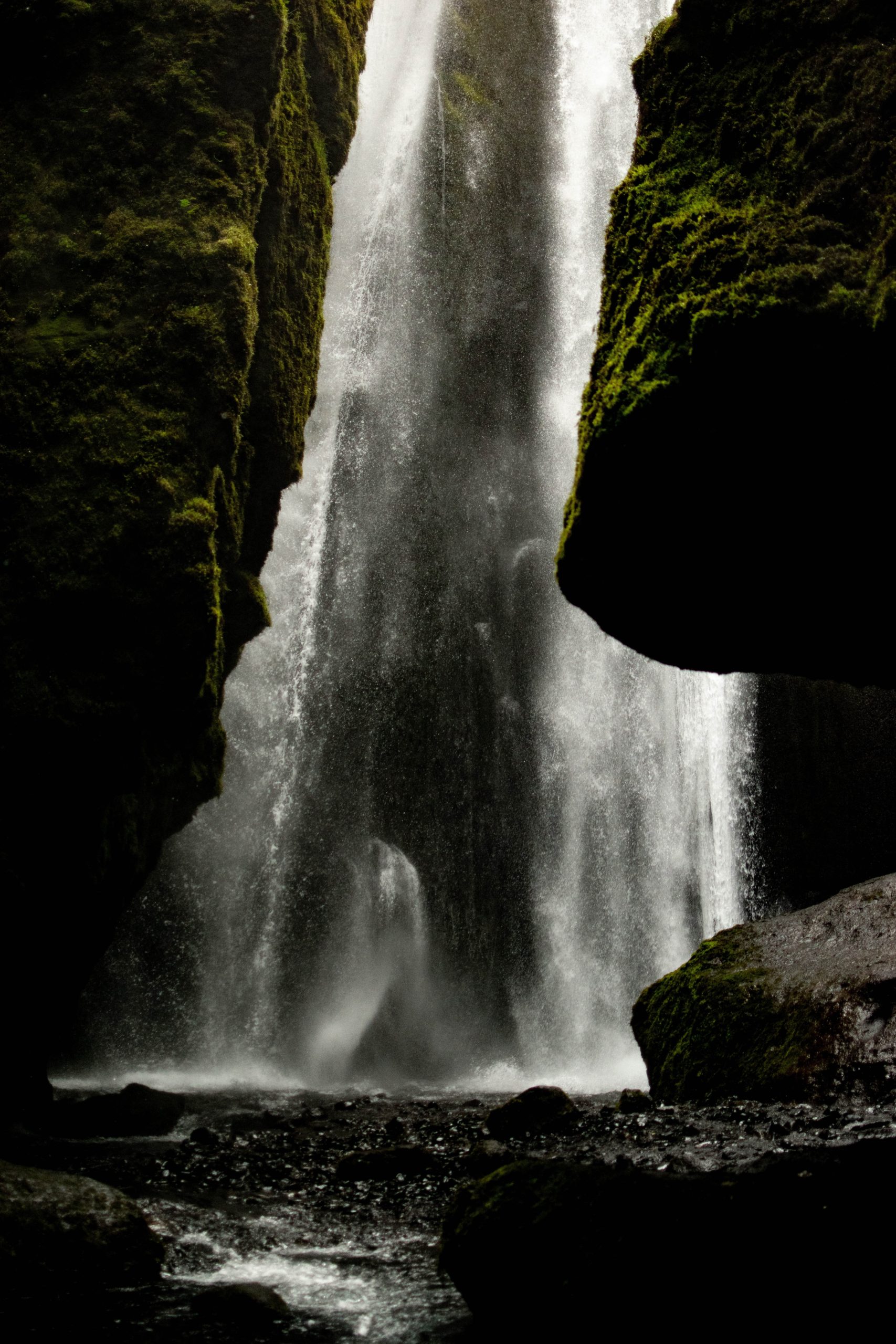
3. Gljúfrabúi & Seljalandsfoss
You probably already know Seljalandsfoss, but do you know its neighbor Gljúfrabúi? After walking behind the towering falls of Seljalandsfoss- an incredible spot in its own right – there’s a little known secret just a stone’s throw away.
Hidden in the same massive rock shelf that feeds Seljalandsfoss, this little waterfall is a hidden treasure of the south coast. When you approach, you see the stream of water first. Further down, you can see the falls peeking through the walls of the canyon. To access them up close, one must walk down the stream through the “halls” of rock.
Depending on the time of year and the conditions at the time of your visit, you may get wet! But once you make your way through the tiny canyon, you empty out into a natural room in the rock, where you can see the waterfall up close, and the sky up above.
Imagine seeing the aurora here, in Gljúfrabúi’s hidden chamber, with the mist of its spray all around. What’s the best place to see the Northern Lights on the South Coast? This is definitely one of them!
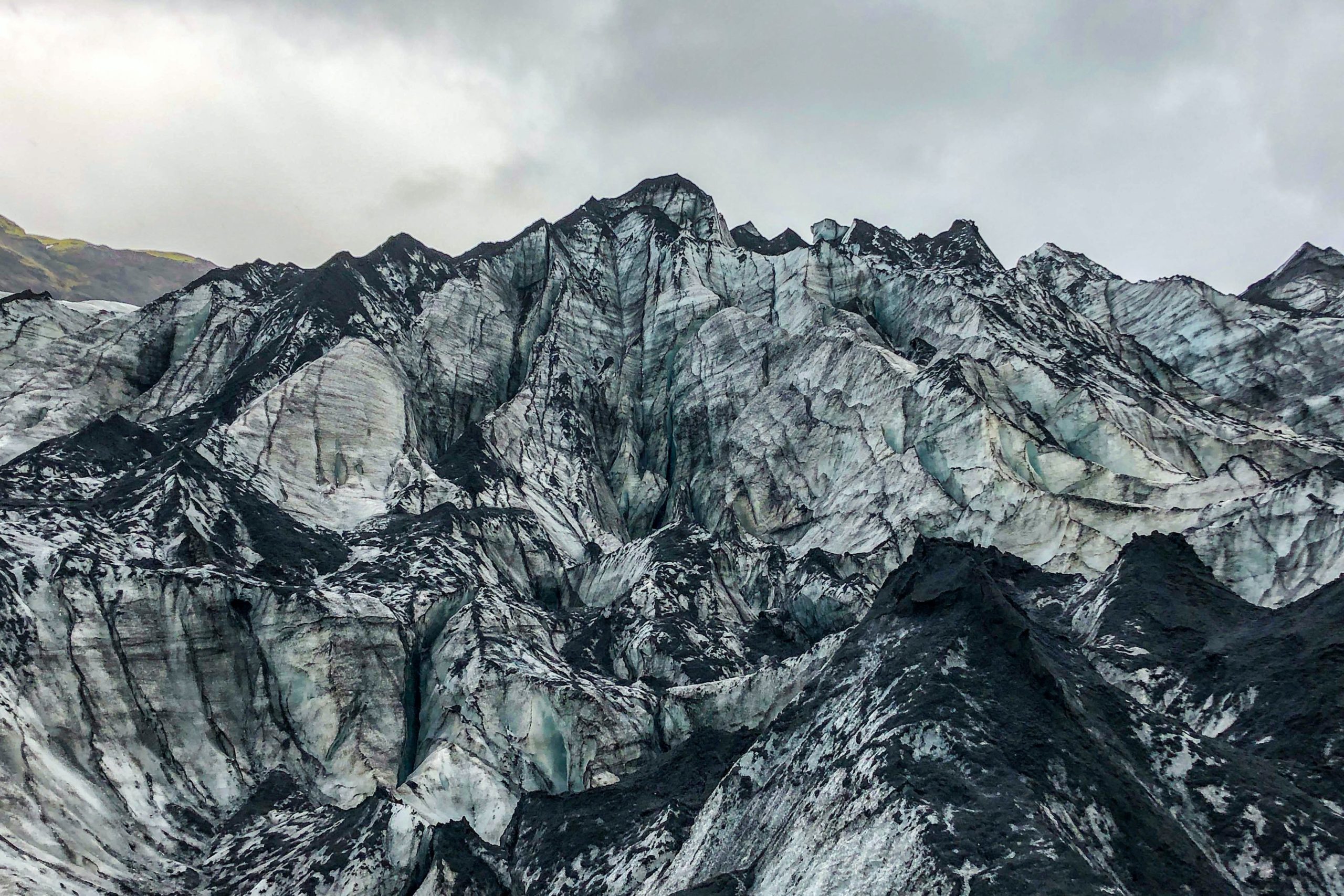
4. Sólheimajökull
Sólheimajökull is a piece of the larger Mýrdalsjökull, the south coast’s resident ice cap. (Mýrdalsjökull isn’t alone out here though, it shares the south with Vatnajökull, a glacier so big that it reaches through multiple regions!) This piece of the glacier is a popular location for glacier walking, ice caving, hiking, and just general wonderment.
This ice giant is incredible to see up close, and it is changing by the minute. One can visit the glacier on their own, but due to the extra training that it takes to traverse ice, it is only recommended to climb on with a guide.
Because of how quickly they are receding, one can’t make enough trips out to see the glaciers. They are visible reminders of how many gifts nature has bestowed upon us. …And seeing the lights in their presence is just one more gift on the neverending pile.
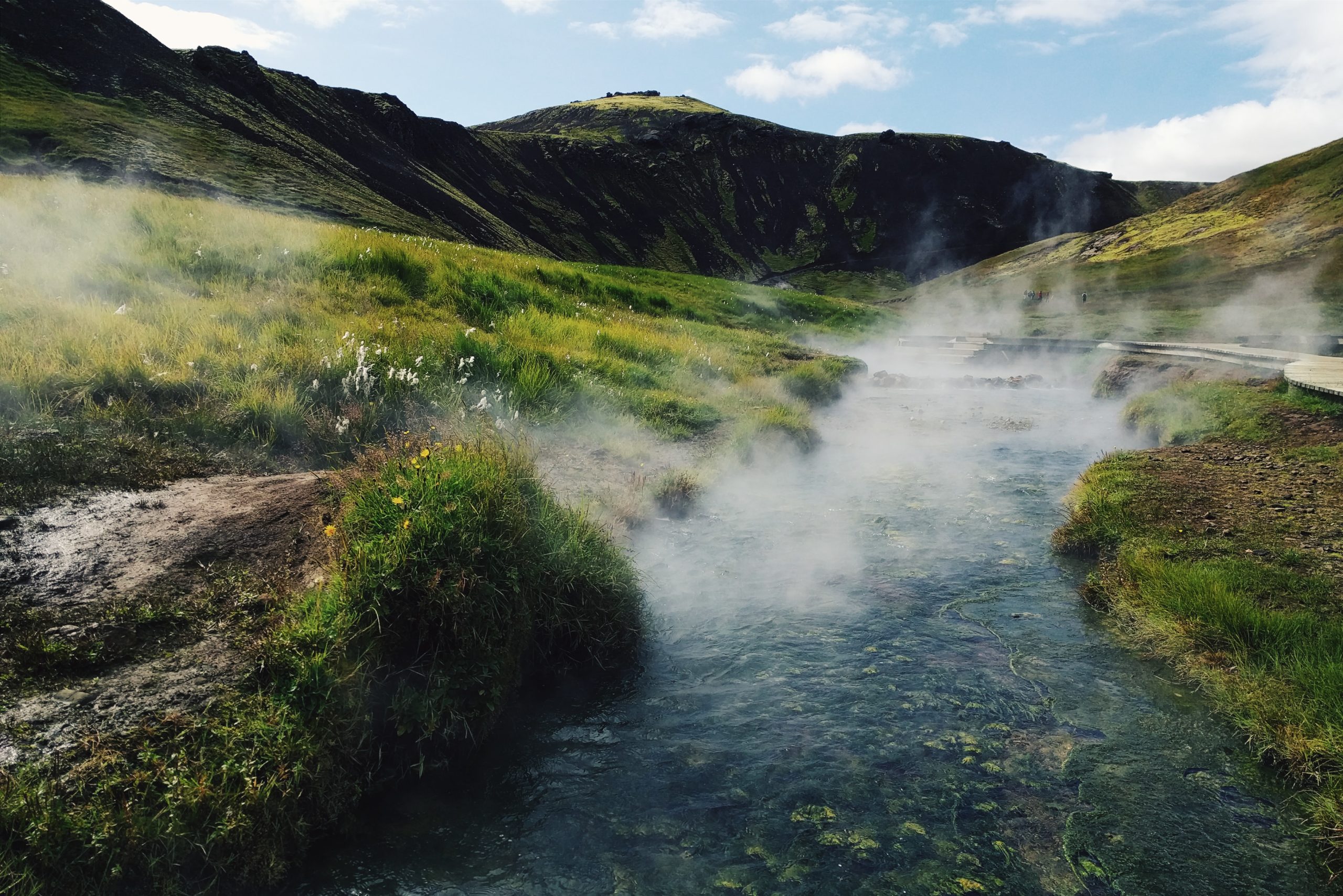
5. Reykjadalur
Reykjadalur is nearly 30 minutes from Reykjavik, so in some ways, it’s like the gateway to the south coast. Resting in the mountains above Hveragerði, Reykjadalur is a favorite of locals for its beauty, its accessibility, and its naturally hot water.
Reykjadalur means “Valley of Steam”, and it houses a geothermally heated river. This is a colorful area full of steam, bubbling mud, and incredible views as you ascend into these seemingly living mountains. It’s also mostly undeveloped!
There are maintained trails and even some protective boardwalk in the area around the water, but at this time there is no entrance fee, no buildings, and no facilities in this area. This could change over time, but for now, Reykjadalur is a place that belongs only to nature. The hike up takes around 45 minutes to an hour, and once you’re up there it is beyond heavenly to peel off your hiking gear and just lay in the warm river.
It is an incredibly restorative experience. Be careful, though! There are different temperatures throughout the water, so the further down the river you go, the hotter the water gets. This is mountain territory, so while the hike is not considered difficult, winter conditions can add some challenge to the terrain- even for the most seasoned hiker.
Things like early darkness, low clouds, and ice can make this an intense trek, so don’t forget your spikes and torches. But if you do make it up here, laying back in the hot water with your eye on the dancing sky- we’ll leave it to you to answer “Where is the best place to see the northern lights on the south coast?” I think we know what you’ll say.
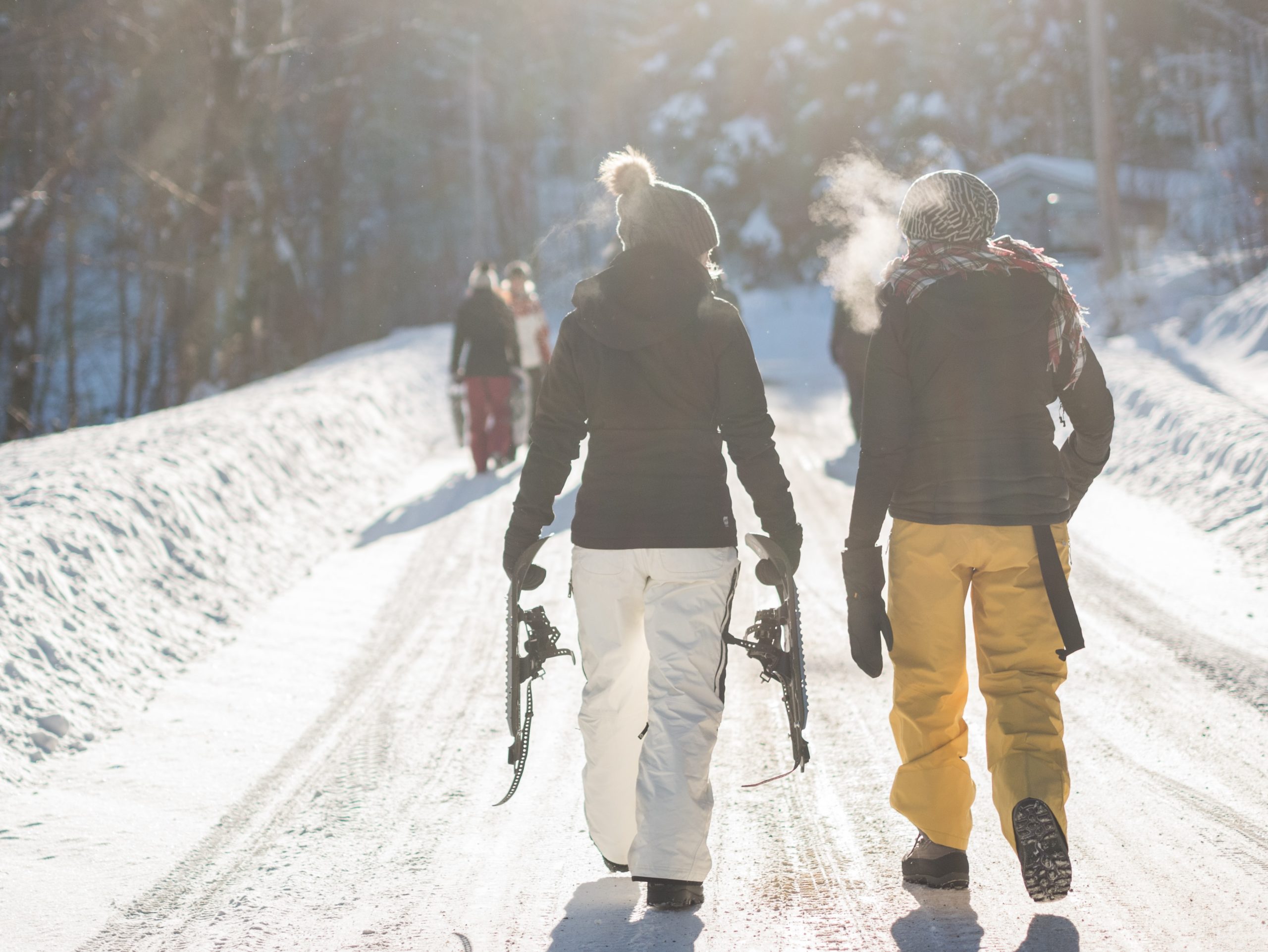
6. Bláfjöll
Even though we just crowned Reykjadalur as the gateway to the south coast- some could argue that that title truly belongs to Bláfjöll. Known as the “blue mountains”, Bláfjöll is a small mountain range that lies about 30 km from Reykjavik, just before Hveragerði.
Though popular for hiking, caving, and lava tubing pursuits- this area shares its name with the ski slopes that live amongst them. Driving through this area is one of your first tastes of wild country outside the capital, and it provides many quiet spots for aurora watching off the main road.
If you visit before the snow, you may get to experience a different type of lush covering- Bláfjöll’s endless fields of Icelandic moss. This moss covers the lava fields and huge swaths of the mountains themselves and can be seen for miles around.
Insulated by the snow in the height of winter, it returns to us every year despite its fragility. The moss takes ages to regrow after damage, so be careful not to walk upon it when hiking.

7. The plane wreck at Sólheimasandur
One of the more unusual stops, this is a pretty interesting one. Though it sounds grim, this plane wreck was non-fatal, and all of the passengers escaped unharmed. In 1973, a US Navy DC plane appeared to run out of fuel and had to crash land on Sólheimasandur– a vast black sand beach on the south coast.
The people inside made it out, but they left their airplane behind. The wreck of this plane is still resting on the beach today, a bit worn and smoothed by the endless Icelandic wind and the movement of the volcanic sand. It is a favorite location of photographers, and many have watched the lights from its empty belly.
If you choose to visit this spot, please exercise caution. While it is a flat land hike, it does take around an hour of treading sand to reach the wreck, and it cannot be seen from the road. You can leave your vehicle in the parking area, but you can no longer drive up to the location. This area is vast, and it is not populated by many landmarks- so it is easy to get disoriented here.
Be aware of the weather before you head out, as there have been accidents of exposure and hypothermia in the past. It is possible to visit the location with a guide, but be respectful of the area nonetheless. Just like the moss, we wish to preserve the unique strangeness of the wreck for years to come- so that many can spy the aurora from its wings.
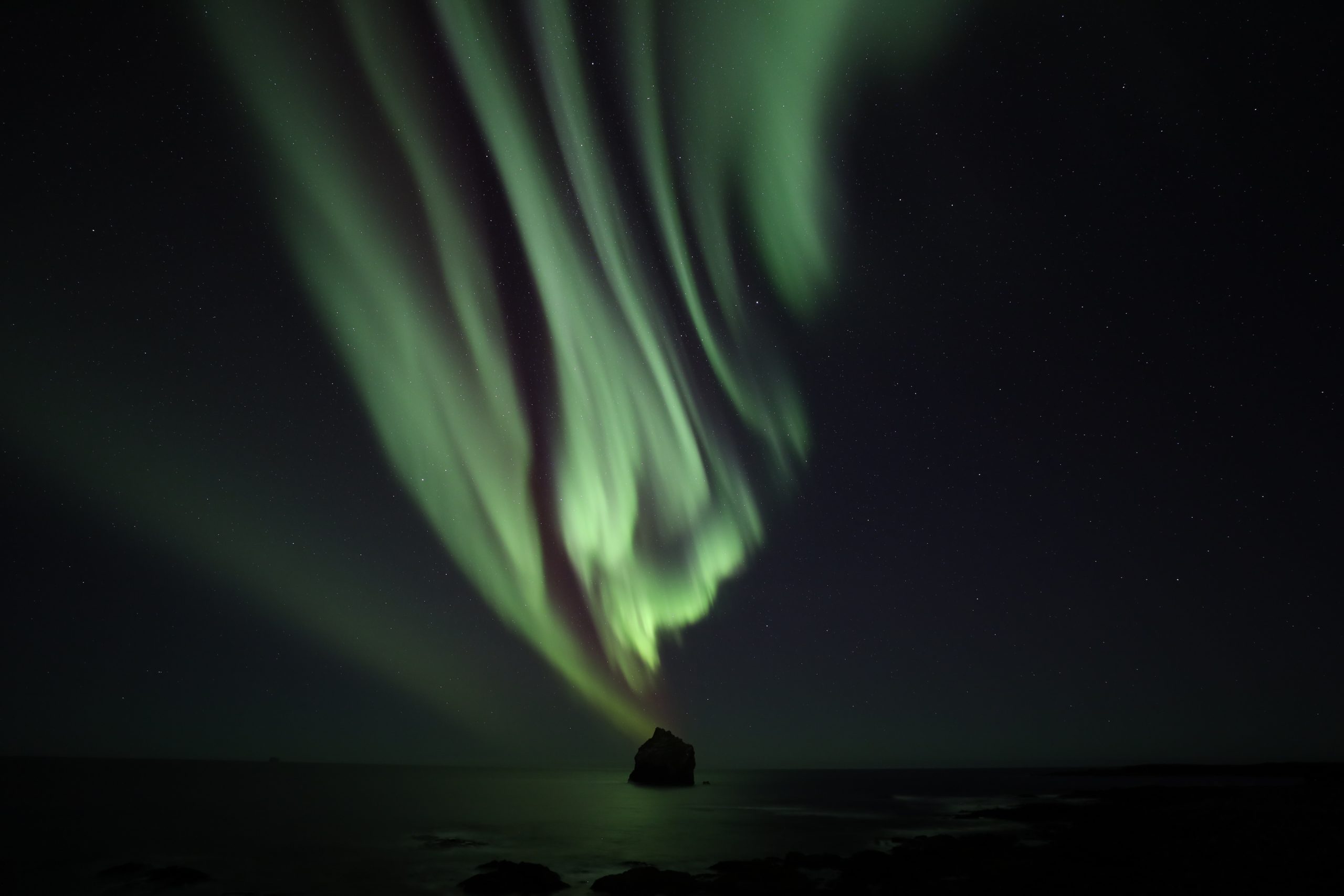
8. Þorlákshöfn (Thorlakshofn)
Wedged right in the corner of the coast where the Reykjanes peninsula meets with the full curve of the island, lies the little town of Þorlákshöfn. Known around the country as one of the primary places to catch a ferry to the Westman Isles– this is a charming seaside town.
Right along the edge of the coast, there are gorgeous villages to explore, and this is only one of them. This town rests at the end of the Ölfusá river and counts many curiosities among its hiking trails, bustling port, and beautiful sights.
If you’re planning a night out of aurora watching by the sea, this is certainly a good place to stop for a bite first. (Or to ride ATVs, horses, do some rock climbing, check out some sea caves, and more!)
This is a beautiful community where you can appreciate the brevity of Icelandic living, and the relationship between the sea and the warm volcanic land in which that life continues to thrive.
When we asked “Where is the best place to see the northern lights?”, it was not hard to imagine this place. (But don’t end your adventure here! If the weather is mild, hop the ferry to the Westman Isles! Southern Iceland really is a whole world of its own.)
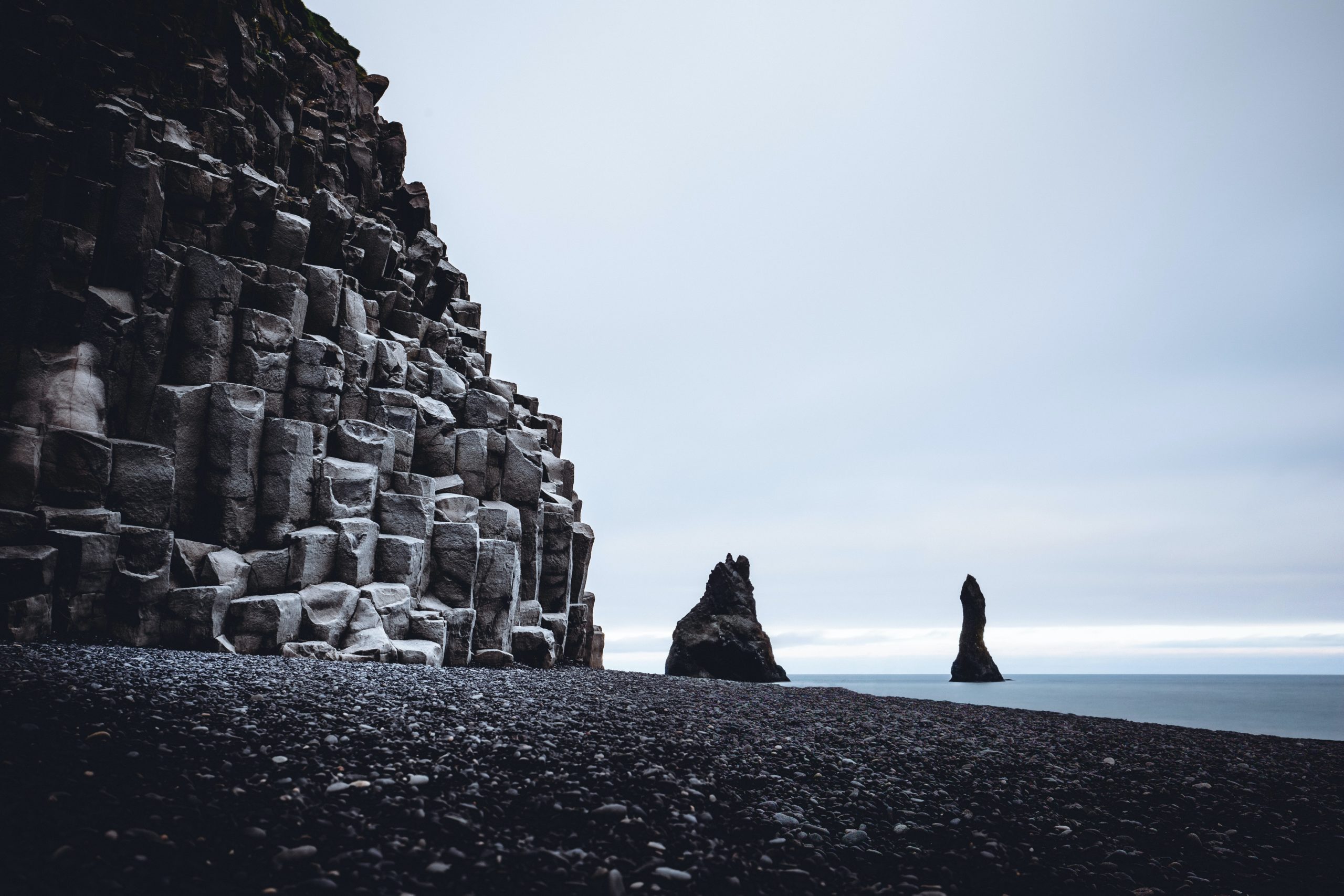
9. Reynisfjara
This is a popular spot, but it sure is hard to argue with. Reynisfjara is the name of the black sand beach near the village of Vík. Seen in countless films, tv productions, photographs, and artistic works- it’s a must see location.
Vík is the southernmost village on the island, and a great spot to branch out from if you plan on exploring the south coast region. Home to many activities, restaurants, and shops, this area is lined by dramatic basalt cliffs that thousands of seabirds call home in the summer season.
Though beautiful, the waves here can be massive and are known to be dangerous, so please exercise caution near the shoreline. Due to the small population of the town, you’ll find great dark skies here. We love Reynisfjara year round, but it truly is a magical place to watch the northern lights, in the shadow of slumbering Katla.
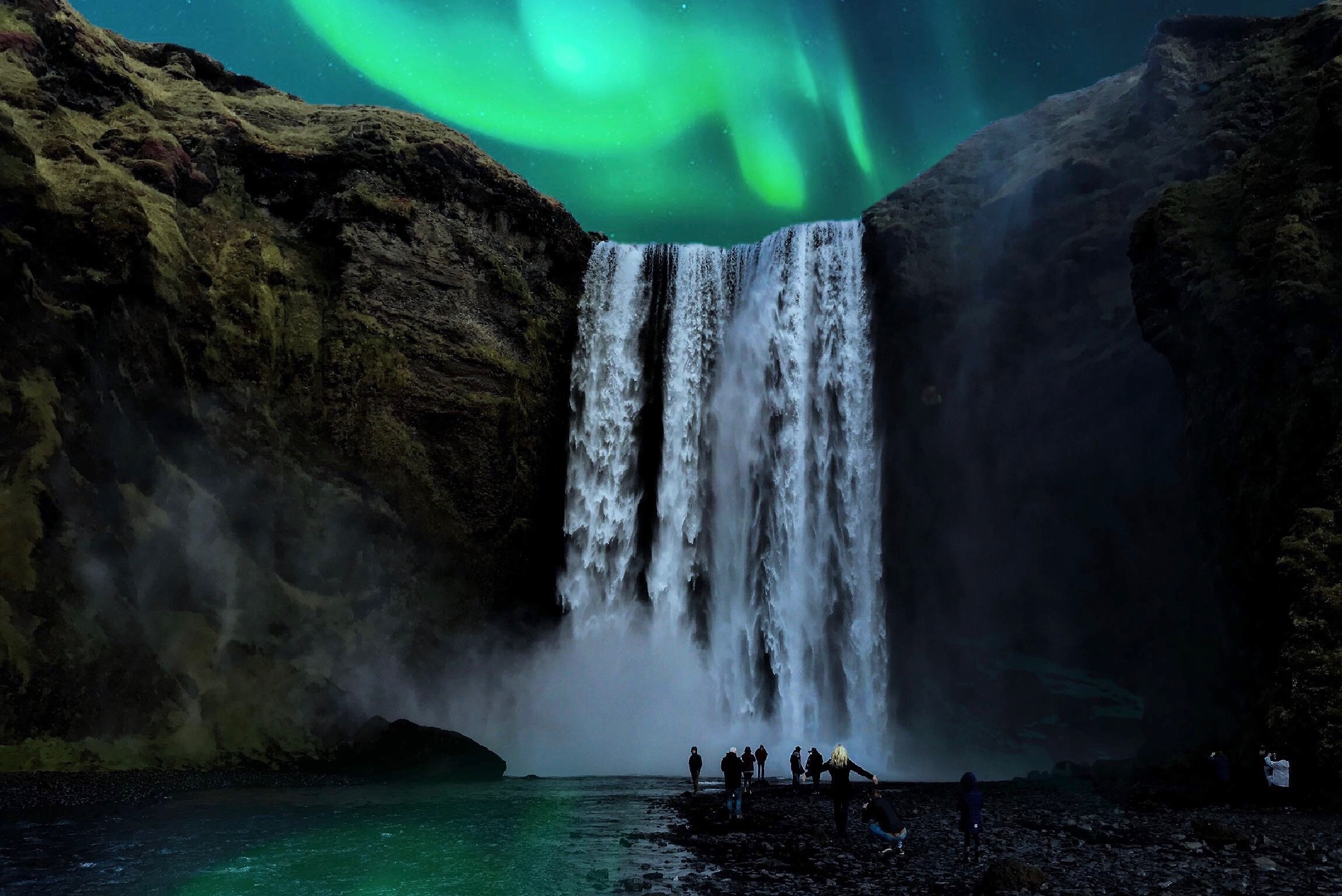
10. Skógafoss
Last but not least, we can’t leave this thundering giant off of a south coast adventure list. Not only is it close to some of our favorite northern lights hotels, but it makes an incredible aurora vantage point.
If you visit earlier in the day, you can climb to the top of the falls and enjoy the 25+ waterfall trek known as waterfall way! (You thought the show was just Skógafoss? Guess again!)
Skógafoss is the grand finale of the Fimmvörðuháls path, a 22 km. trek into the hiker’s paradise, Thórsmörk. While this adventure might not be possible in high winter, you can catch the tail end of its availability in autumn. For those that don’t wish to make the full 22 km., waterfall way is only about 8 km. one way, following the river.
But this is extra. Skógafoss itself is phenomenal. Standing at 60 m. high and 25 m. across, you can see this wonder right from the main road. It creates huge clouds of mist, and it empties out on a vast plane of land that runs out to the sea.
You could spend a whole day here exploring the surrounding area and enjoying the falls from different vantage points. You can even throw up a tent and camp out nearby, lulling yourself to sleep to the constant hum of falling water. Don’t forget to look up though! The rainbows in the mist during the day are hard to compare to the aurora curving over the cliff edge at night.
Northern Lights Painting...and 5 other fun things to do when the lights aren’t out
We spend a lot of time looking for auroras, but what do we do when we can’t find one? Fellow hunters, meet northern lights painting.
Northern lights painting may not be the first thing you think of when you pack your bags for a hunt. (And it might mean something different to different people! Don’t worry, we’ll come back later for the crafters.)
But if we’ve learned anything at all from years of chasing the aurora, it’s how to be prepared for any and all kinds of nights. Whether there’s a show to see, or not.
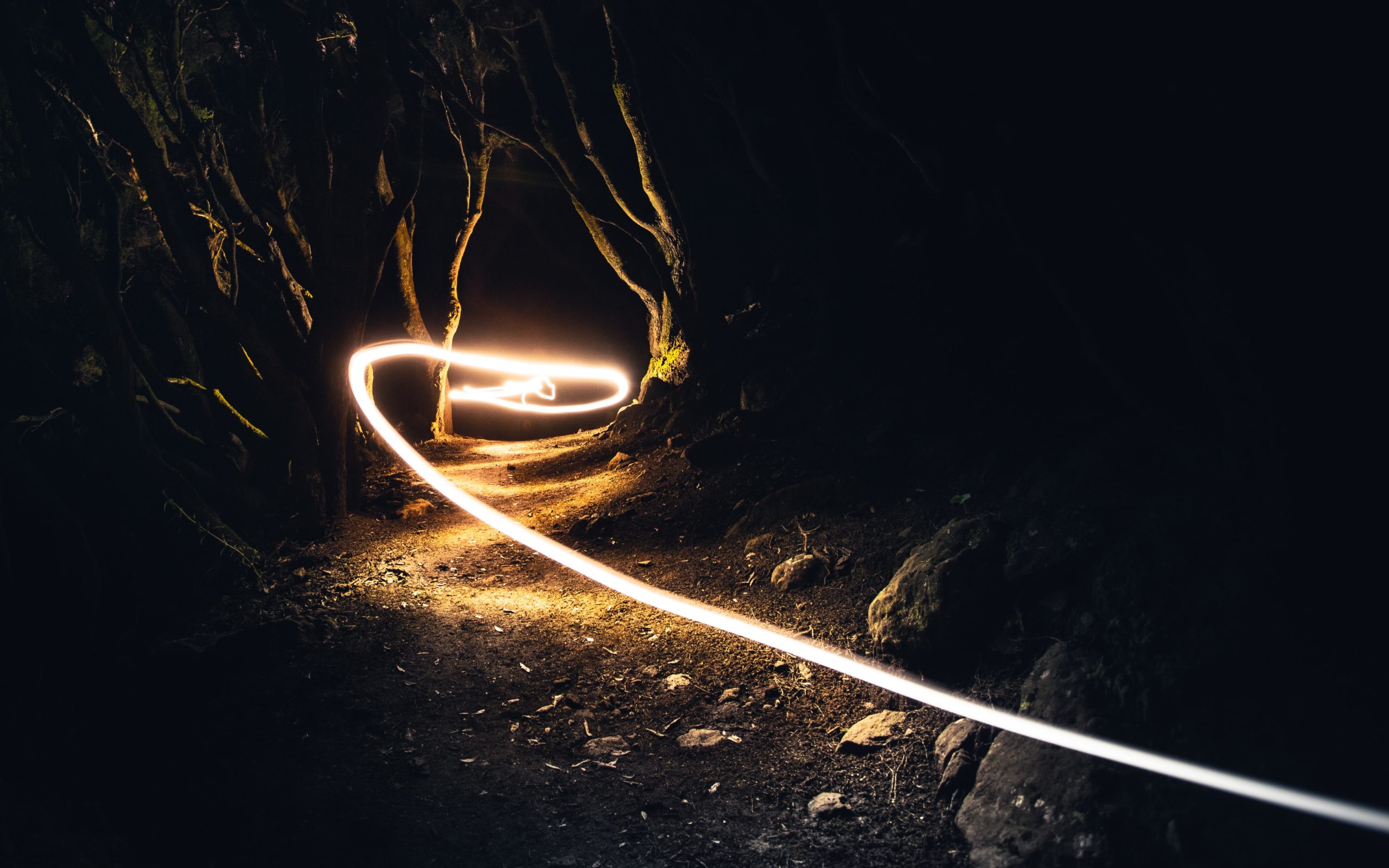
1. Light painting, or, Northern Lights Painting
Known as “Light Painting” or “experimental long exposure photography”, this is the ultimate activity when you’re waiting on the lights to show up. It may not be auroras, but it’s a fan favorite for a dark night with no show.
Popular in its own right, light painting or, northern lights painting, as we like to call it, is an activity that requires a camera. All you need to do this is a DSLR camera or a camera that can accommodate a long shutter setting, a tripod or flat surface, and a light.
This is an experimental process for a reason, and there is no wrong way to do your own northern lights painting. (Well, as long as you’ve got the flat surface and the long shutter. If your camera is moving you’ll have a hard time capturing an image, and if you can’t access a longer shutter, it will be harder to create these effects.)
That being said, this is an activity for people of all levels of artistic skill. The photos you make will look differently depending on where you are, what settings you try, and what tools you use to create light.
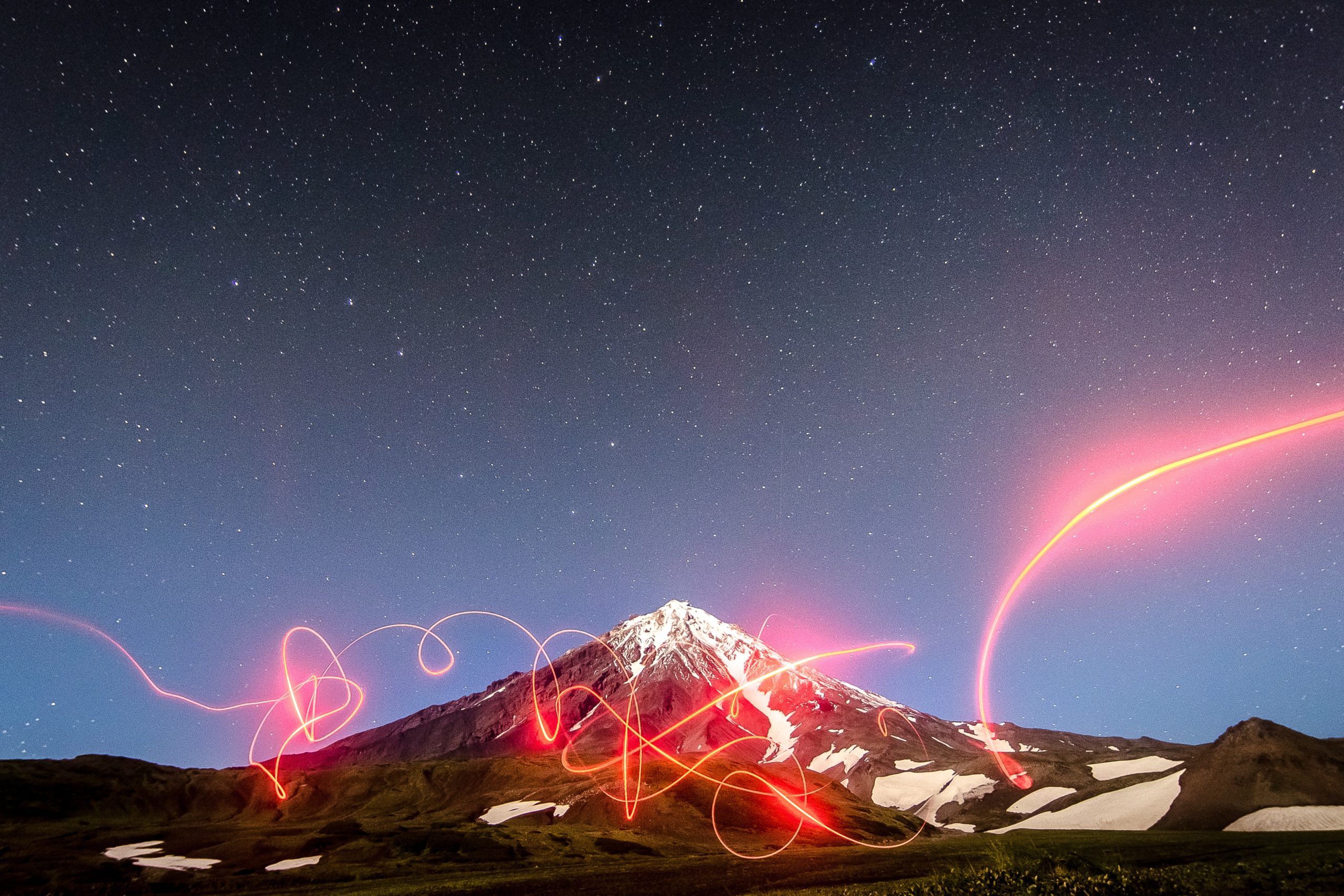
You can even do this inside! (Though, we find ourselves doing this outside most of the time, since we’re always waiting on the aurora to show up.)
Once you’ve got your tripod and your camera set up, you’ll be using a lot of the same settings you’d use for a northern lights shot. This means low aperture, and typically a higher ISO than you’d use for a daylight photo.
(Depending on the effect you’re going for, this could be an ISO as low as 400, and as high as 3600- but don’t take our word for it! This is art, so you’ll have to try different combinations out to see what look works best for you.)
And the key of course, is the extended shutter. Most cameras can accommodate up to 30 seconds of shutter, which is plenty for time for you to create a compelling shape or image. If you find that this is too bright, remember the golden rule of northern lights painting, and adjust till you get the look you want.
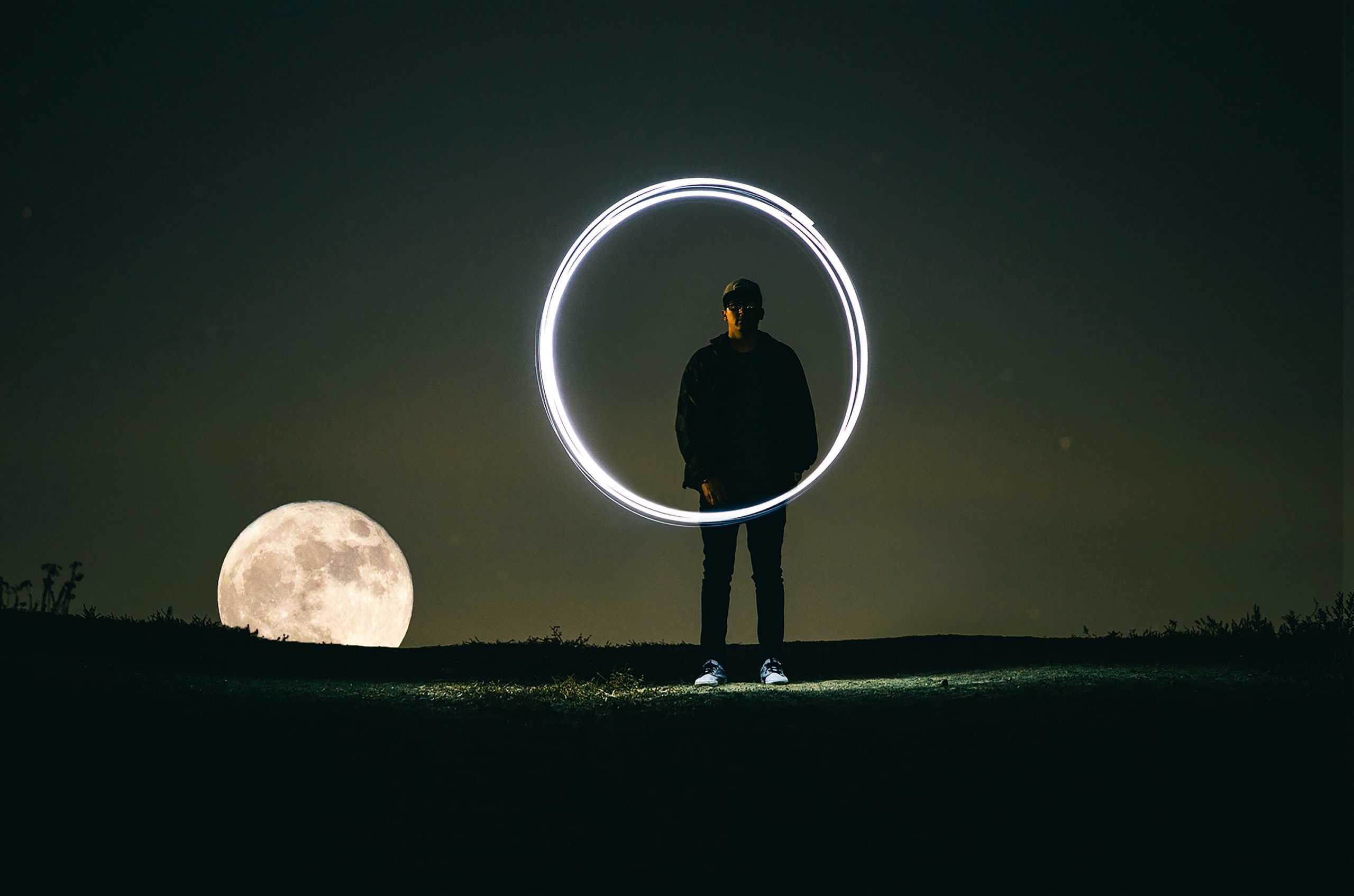
These photos are created by manipulating lit items in the camera’s field of vision. This means you can use fairy lights, mobile phones, torches, sparklers, LED tools, and so on. You can write messages, create three-dimensional patterns, draw shapes- the opportunities are endless. You can make your own aurora! (It is northern lights painting, after all..)
This is a great activity whether or not the lights are out, and we suggest checking out the work of other light painters. There are a lot of opinions on the best types of light, how to diffuse light with tracing paper, and how to color white light with plastics.
There are also countless tutorials on how to make the tools themselves, in order to achieve certain looks. (We are big fans of the long piece of wood with fairy lights taped to it.) If you choose to go the sparkler route, be careful!
Activities like this can spark dry grasses and create wildfires. Make sure you are operating in a damp area, and practicing fire safety while you work. No photo is worth an accidental blaze.
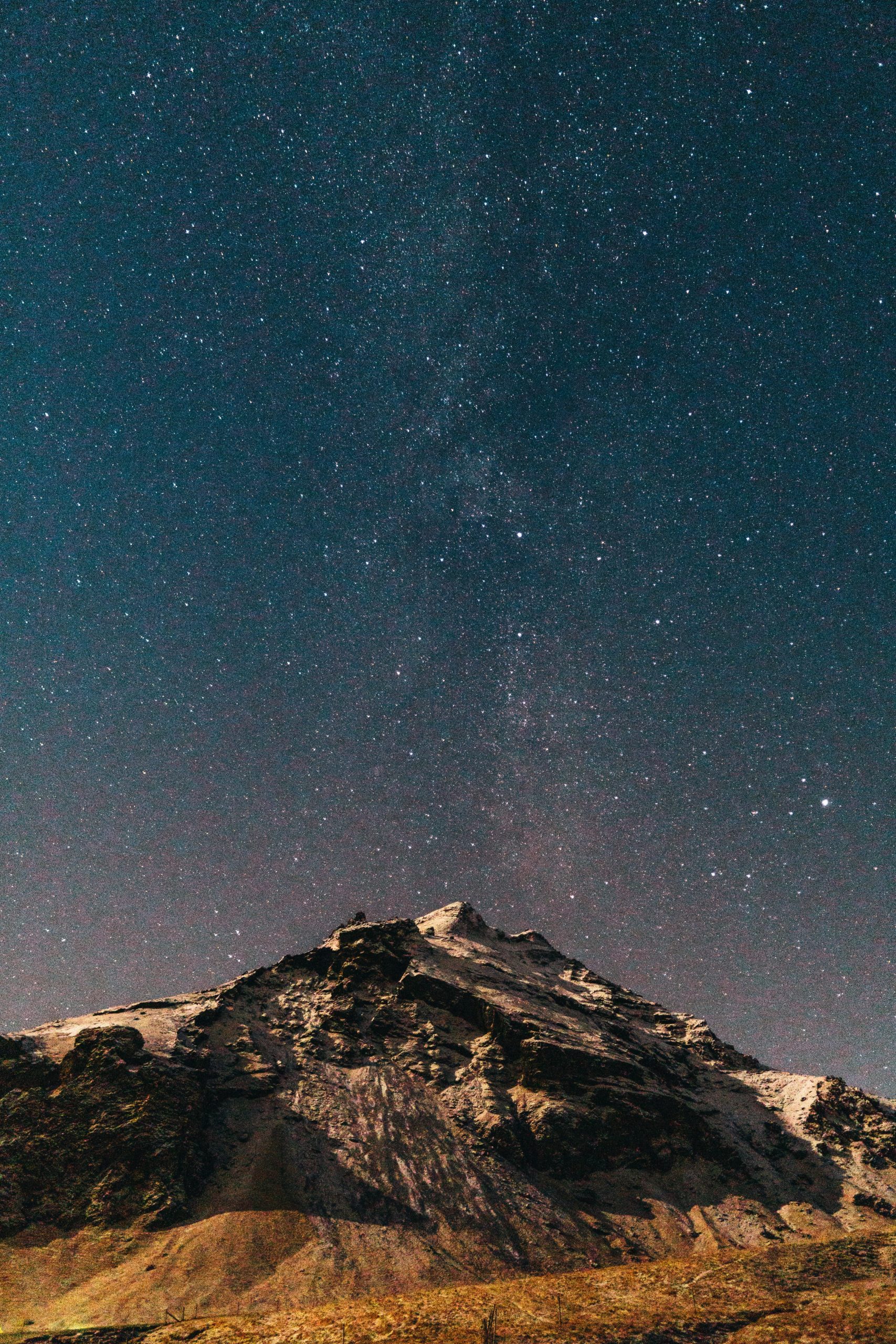
2. Stargazing and Telescoping out the heavens
Northern lights painting gives us something to do down here on Earth, but what about when we’re back to eyeing the skies?
That’s when it’s time to stargaze. While this activity does require the same clear skies as auroras, it doesn’t necessarily require any special equipment. (But don’t worry gadget collectors- there definitely is some.)
With a little knowledge and a lot of darkness, you can find constellations, planets, nebulas, and all sorts of celestial bodies. One can follow satellites, shooting stars, and even an eclipse or two in the Icelandic sky. (And you ought to make the best of it while you can, because we miss out on nearly ever summer event!)
However, if you want to elevate your stargazing experience, there are a lot of tools that can help you do this. Telescopes, binoculars, star maps, and more apps than you can imagine exist just for this very purpose.
Stargazing is a burgeoning hobby with an incredible community, and depending on where you are- there is likely a whole contingent of fellow gazers that you can learn from and watch with.
There also happens to be a lot to learn, so this hobby may stay with you far beyond an Icelandic holiday. Amateur space weather enthusiasts all over the world are even helping contribute to modern science.
In fact- it was stargazers that helped us understand STEVE. But, it’s a wide world out there. What far off planets or mysteries of the verse are YOU going to discover?
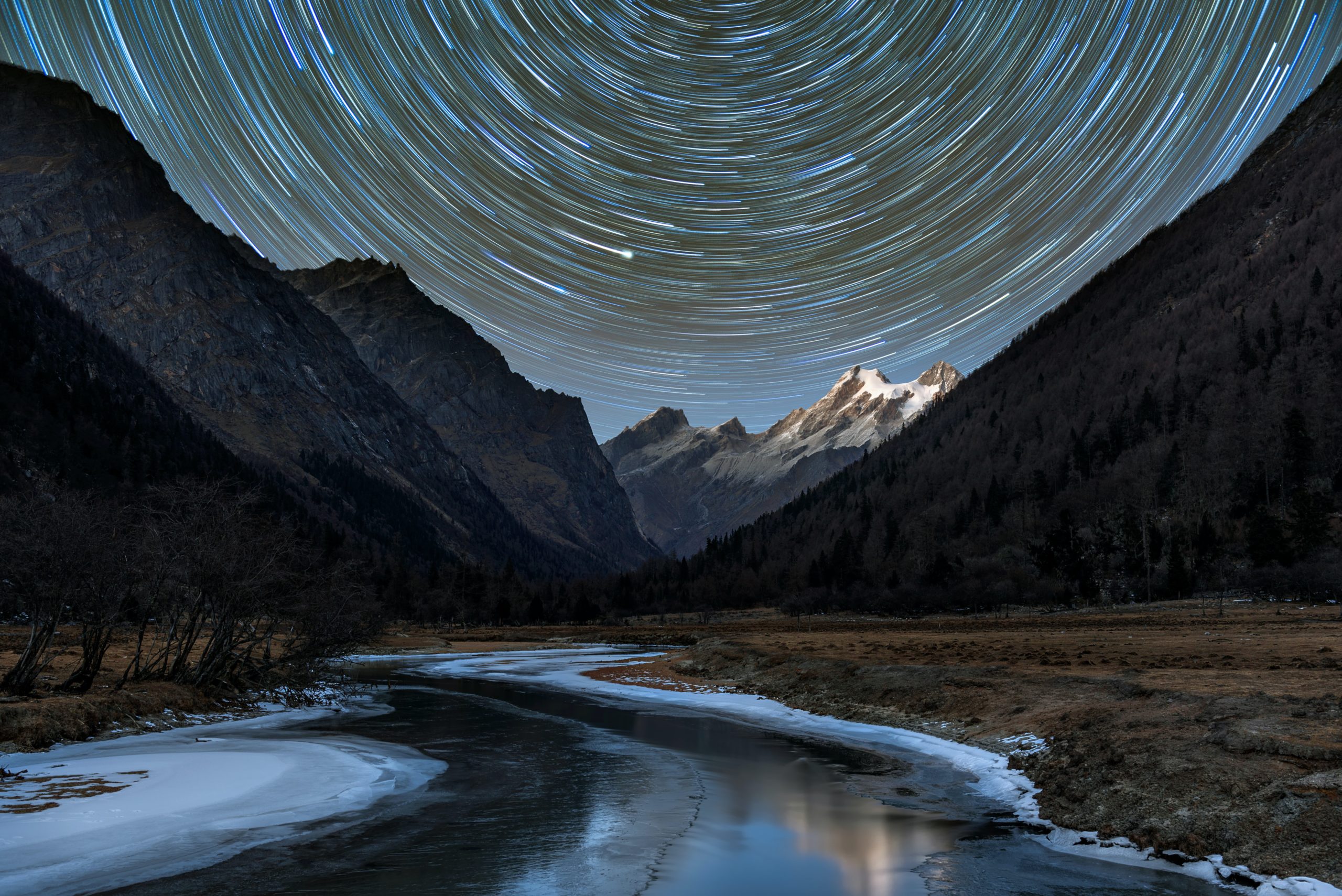
3. Astrophotography, Star Trails and Galaxy Hunts
While stargazing and northern lights painting can both become camera-centric activities, this is definitely one. Many aurora hunters end up becoming photographers out of necessity- because it is just too hard to chase such an ethereal thing and not keep a piece of it for yourself.
Photos are one of the many pieces of the magic, and they are not easily come by. Their rarity and the work that goes into making them is in some ways just as rewarding as the aurora hunt itself.
(Not to mention, a well-timed photo can be a great early detection tool in actually finding the northern lights on a dim evening.)
As many of you know, a great photo is the ultimate souvenir. It’s hard for a t-shirt or a fridge magnet to beat that kind of memento. But what do you do when there’s no aurora to capture?
That’s when we widen our scope even more, to astrophotography. Astrophotography is a big term that includes aurora photos- and about a thousand other things. The reality is that we can access so much more of the sky than we realize.
With the naked eye and our usual context in light polluted places, there’s a lot that we don’t see. But with a great lens (be it in a camera, telescope, or slick pair of binoculars,) suddenly the far rings of Saturn, or the super up close topography of the moon, become easily viewable.
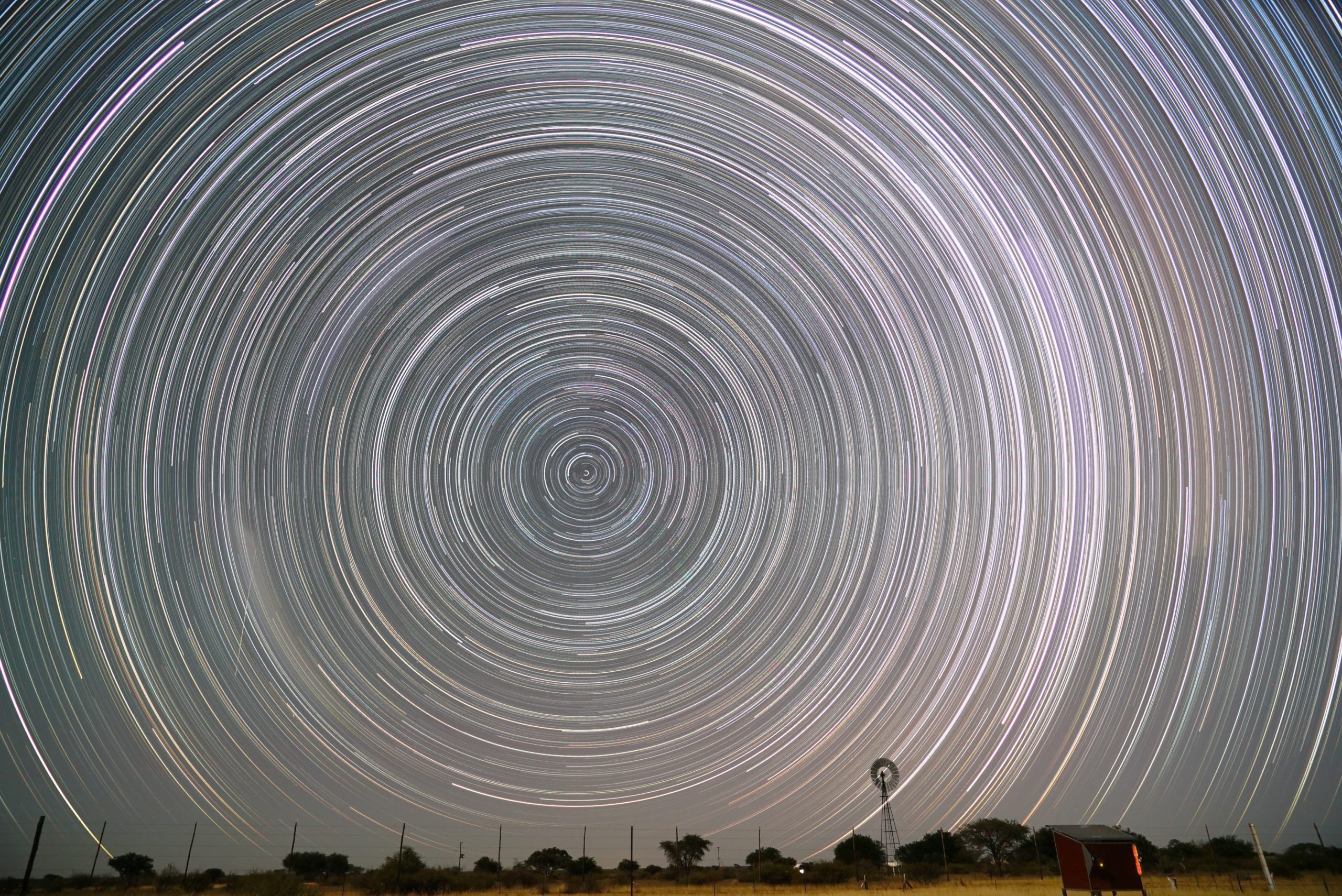
Star Trail images
So after you’ve done your northern lights painting of course, turn your lens to the stars. If you’ve got your tripod and plenty of battery, you can create star trail images by setting your focus to infinity and using the longest exposure you’ve got available to you.
This can be a tricky situation, because you may need to set your camera to the bulb setting, or acquire a cable release for your specific camera model to allow these unusual levels of exposure. (We are talking about 15-30 minute long exposures here!)
But, thanks to aids like Startrails, you can also take shorter exposure images, and the program will layer them together for you. This process makes this type of photography a bit more accessible to the novice astrophotographer, and it cuts down on image noise as well.
This is a special branch of nighttime photography, so have a look around if you’re interested! There is a whole world of star trail enthusiasts, and a million tried and true practices for getting the kind of images you want.
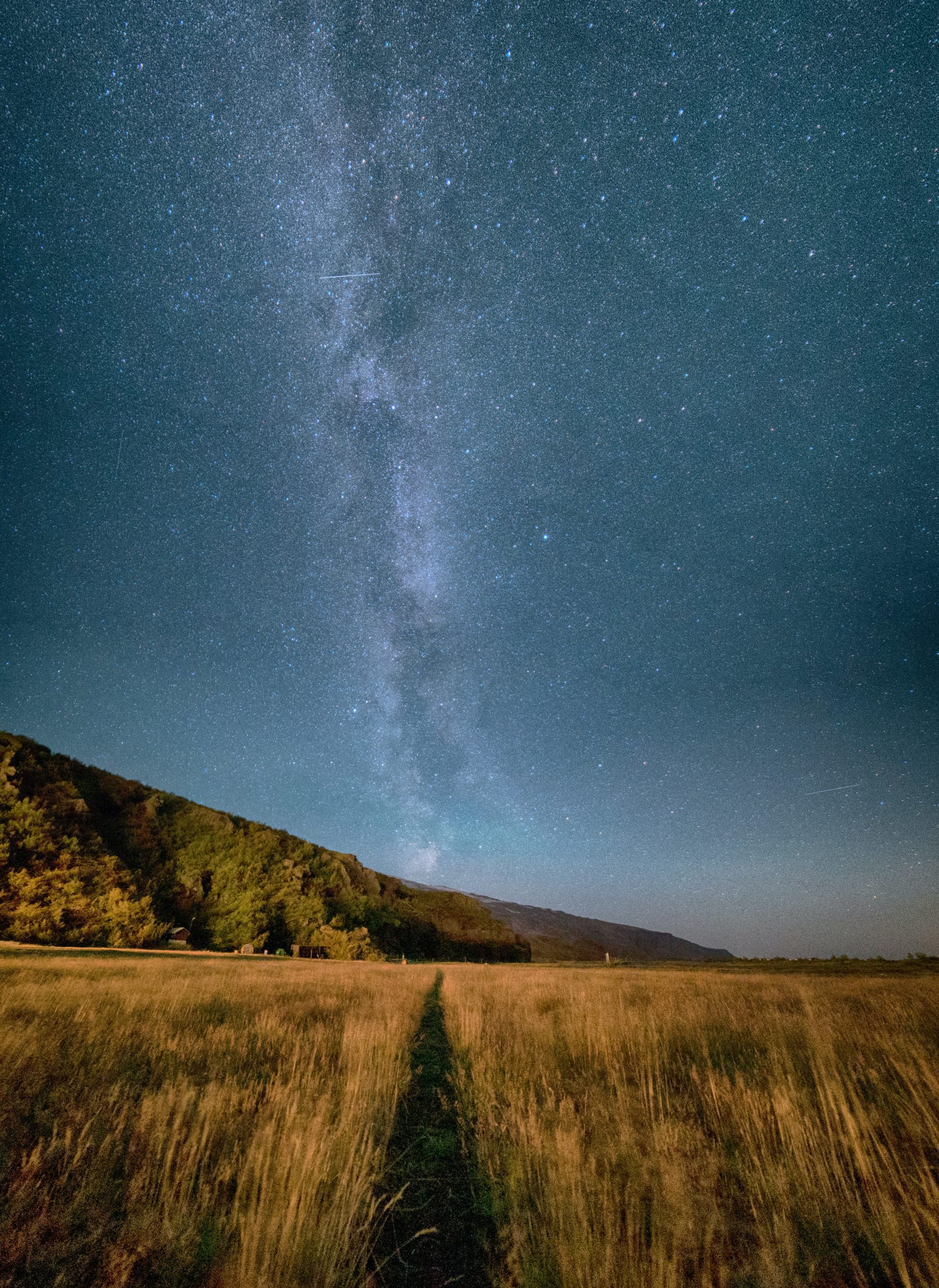
Galaxy Photos
If you’re looking to capture nebulas and far off bodies of celestial light, you may need some specialized gear. Many of these photos are taken with professional attachments and some are even captured through telescope attachments!
If you’ve got a telescope with you and want to venture into that realm of photography, go forth and please send us a copy! We’d love to see it. But for those of you who are trying to capture a galaxy with your DSLR, you may be in luck.
It’s not the easiest, but it is possible. You’ll need a lot of the same stuff you’d bring with you for northern lights photos, so make sure you’ve loaded up your manual capable camera, a sturdy tripod, a fast lens and some patience.
A new item that you’ll need is a starmap app. An interactive map can help you locate the milky way for that evening, which will cut out a lot of the guess work. Above all, you need to be in a dark place. Just like aurora hunting and northern lights painting, light pollution drowns out the good stuff.
Just like the star trail photos, you’ll be working with a pretty long shutter. As you try this out, don’t be disappointed if your photos don’t look quite as outrageous as some of the galaxy shots you’ve seen.
Many photographers in this field are utilizing specialized gear, processes like time blends and startracking, and doing a lot of heavy lifting in a post processing software like Photoshop.
These images are sometimes the product of a great composite job, or a lot of really skillful editing in a RAW image. You can certainly capture a viable shot with your regular aurora gear, but if you’re interested in this- don’t despair! All of these tricks can be learned, and there is ample information on the web to help you. Everybody has to start somewhere.
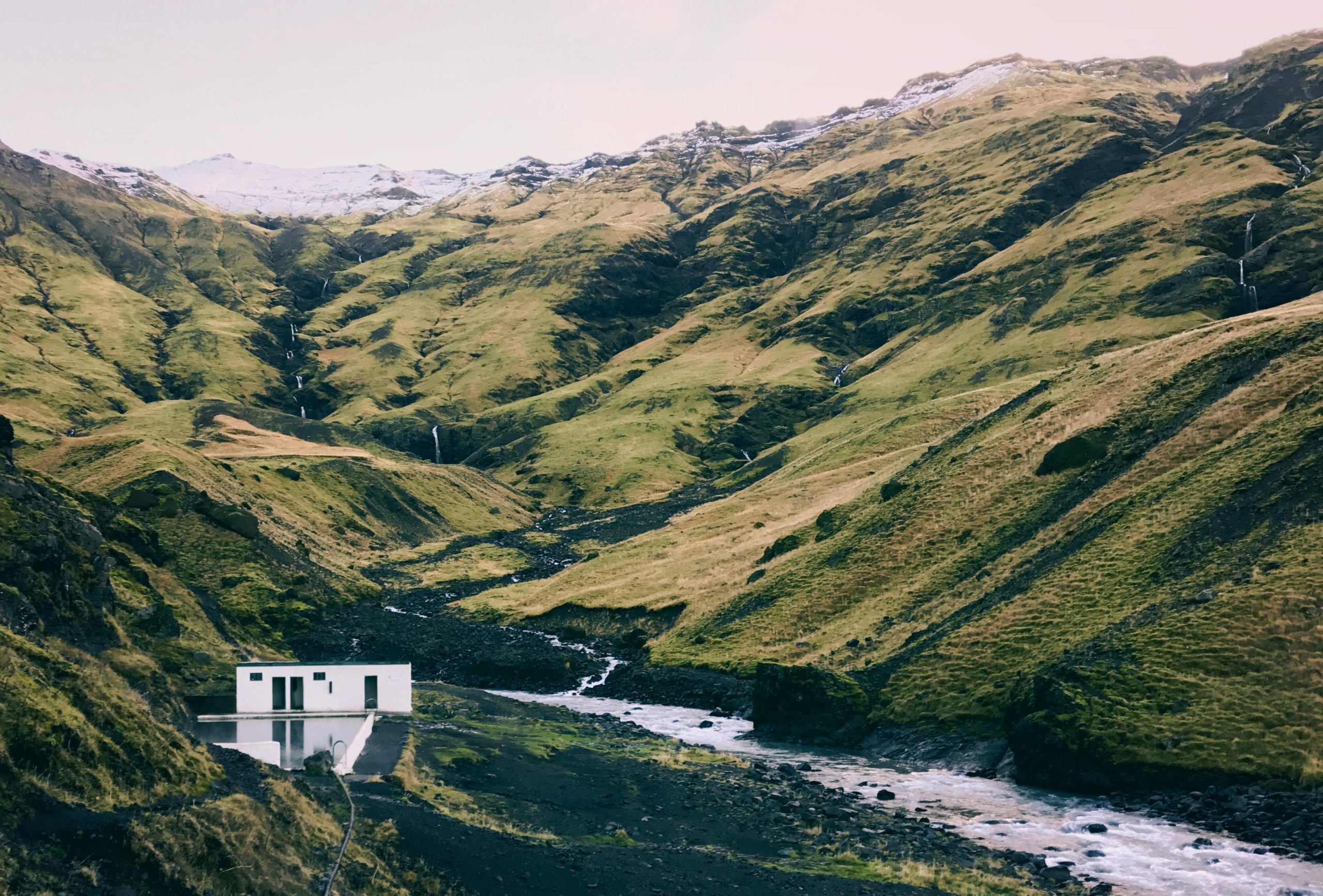
4. Hot spring night soaks
Now here’s an activity that you don’t need a camera for. (Unless you want to make some friends extra jealous.) Half of the time, we’re doing this instead of setting up the cameras- and sometimes the lights come out anyways!
The best seat in the house is always in the hot pot. Iceland’s geothermal landscape is a treasure chest of natural hot springs and great places to soak. But despite that, Icelanders have installed geothermally heated swimming pools in nearly every town, and hot tubs at many summer houses.
If there’s a pool to sit in, we can almost promise it’s heated. (Unless it’s an ice pool, that’s a thing.) If you’re staying in town, there’s a swimming pool near you that is accessible for a low price year round, and if you’re extra lucky, you may have a hot pot in your vicinity.
If you’re a hiker, you can venture forth into a natural hot spring like Reykjadalur, or even Landmannalaugar. If you choose these wilder options, remember to be careful.
Hiking in the colder aurora season and in the darkness is a next level activity, and should only be taken on by aurora hunters that are confident in their trekking skills. Make sure to tell a friend where you’re headed, and bring the appropriate gear.
And check the weather! Some of these natural springs are in mountainous places that experience quickly changing weather and limited visibility, so it’s good to understand the area before you set out.
But if you make it.. Enjoy! There’s nothing in the world like laying in a wild hot spring at night watching nature make its own northern lights painting, just for you.

5. Lay back and pop some Bubbly
As we near the more.. Luxurious end of our list, it feels only right to mention the northern lights igloo option. If the lights are out, this is an incredible option. If they aren’t out, it’s an incredible option. If you’re here in the summer, it’s an incredible option. You can’t go wrong with this activity.
The Bubble Hotel of Iceland consists of a handful of fully transparent domed igloos that are tucked away in the embrace of two lush forests. This means you’ve got two location choices, and all the nature you can handle.
These hideaways are sequestered in their own groves, heated, and outfitted with their own luxury sleeping accommodations. To catch the lights, we often wait outside for long periods of time in the wind, weather, and low temperatures.
But imagine if you could do it wrapped in a down comforter with gourmet treats, in bed? Because of their rural locations, you’ll have all the darkness you need for optimal aurora watching or stargazing.
If you catch the lights out here, there’s no better seat. But if you don’t- you still get to walk away with a night spent in the height of luxury, surrounded by the grandeur of raw Icelandic nature on all sides.
It’s certainly the furthest away you can get from roughing it, while still being right in the middle of the woods. So excuse us while we slip into something a bit more.. Comfortable.
Next level Aurora Hunting: 5 wild places to watch the Northern Lights in Iceland
Looking to up the ante on your aurora hunt with a getaway to a rare location? Look no further.
Seeing the northern lights is phenomenal no matter where you are. But for some next level aurora hunting, we’ve reached deep into our own favorites for some rare spots that we think you’ll enjoy. Seeing these places at all is a big win, but aurora hunting in them? Unforgettable.
1. Grímsey: The Gateway to the Arctic
Grímsey is the one point in Iceland that actually reaches the Arctic Circle. Resting about 40 km. north of mainland Iceland, Grímsey straddles the actual Arctic Circle and is the northernmost inhabited land in Iceland. (There is a smaller island further north, but it is uninhabited and is predicted to soon be claimed by the sea.)
Getting to Grímsey is fairly straightforward. You can hop on the ferry for a 3 hour trip both ways, or catch a quick 25 minute flight from Akureyri Airport. Believe it or not, you can access this northern gem year round.
Home to only about 100 people, Grímsey is a popular destination for aurora hunting, birdwatching, history buffs and those that seek the rare and covetous Arctic Circle certificate! When in Grímsey, one can actually visit the border that denotes the current location of the Arctic Circle boundary.
This intersection is marked by a nearly 9 ton stone sphere called “Orbis et Globus.” This giant art piece is a monument that was made to mark the Arctic Circle boundary, and follow its movement. In fact, it’s round because they never intended this monument to be static- just as the Arctic Circle is not static.
At the time of this writing, the Arctic Circle is marked at 66.5 degrees northern latitude, but it is constantly moving further north of us. The circle is moving about 14-15 meters north every year, and will likely continue this journey for 10-20,000 more years.
At that time, it is expected that it will move south once again. Till then, we have the century stones on Grímsey to mark its passage. You can visit these three stones, that mark the past locations of the Arctic Circle border from the summer solstice in 1717, 1817, and, 1917.
Depending on how things go, Orbis et Globus may have to roll into the sea! Despite Grímsey’s diminutive size and small population, it is a place of thriving life and a phenomenal aurora hunting spot.
There are multiple options for lodging there, multiple historic locations to view, and many hiking paths where you will truly be alone with nature at the edge of the world. Out here it’s just you, the northern lights, and about 1 million estimated sea birds.
This close to the pole your ability to pick up low level solar activity increases, and of course you can’t complain about the quality of darkness out in the Arctic waters. Not to mention, the certificate!
There are multiple ways to acquire one of these rare documents, and for many, they are a trip highlight. You can secure yours by taking a Nordlandair/Air Iceland flight, or by purchasing one in the Gallerí Sól giftshop.
(According to the town of Akureyri’s webpage, Gallerí Sól is open Monday, Wednesday, and Friday during the summer months, which may not line up with many Aurora hunters. If you plan on taking the ferry, make sure to write or call ahead to pre-reserve your diploma by phone (+354) 4673190 / (+354) 4673156 or by email: gullsol@visir.is. Can’t leave without it!)
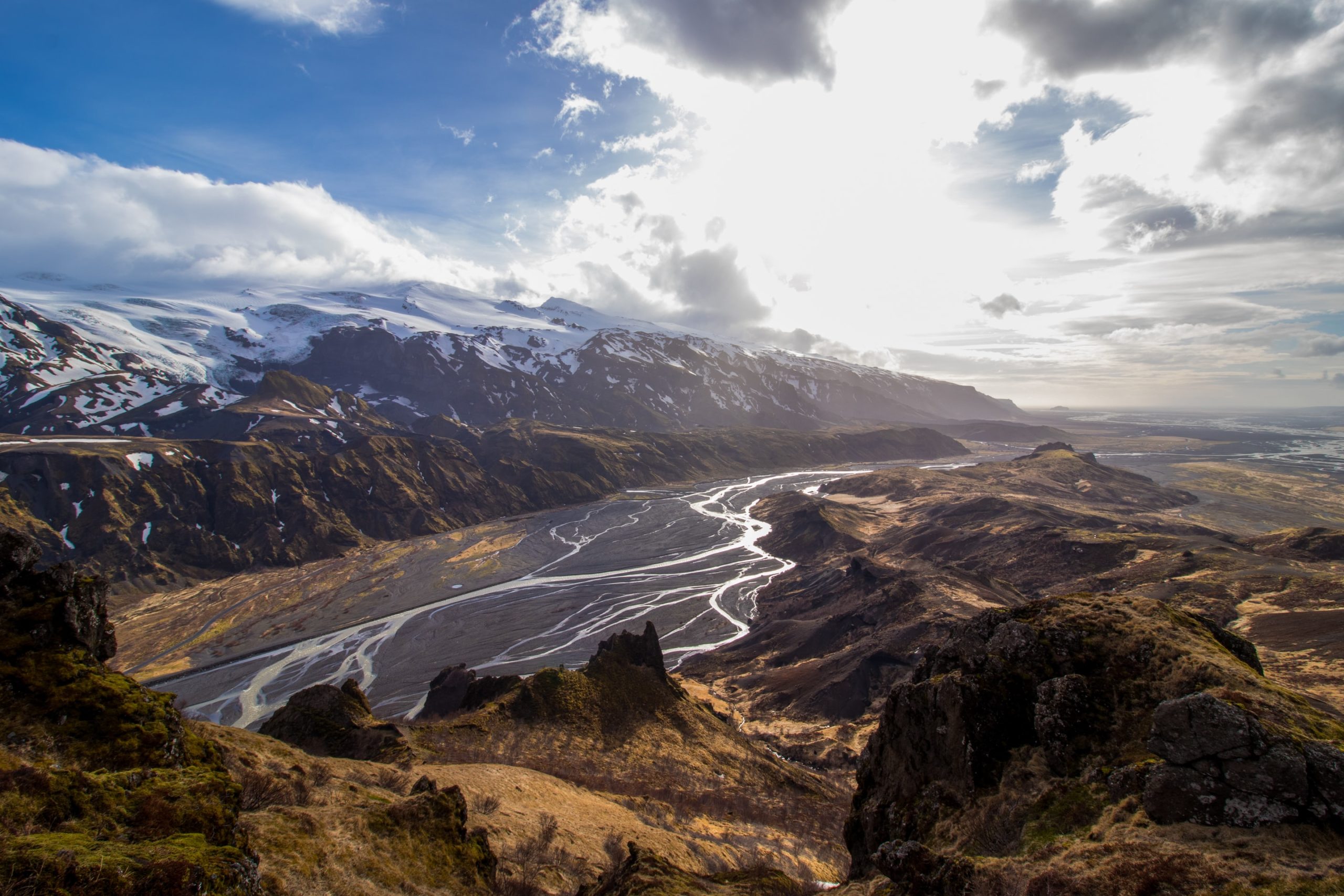
2. Þórsmörk/Thórsmörk: Valley of the God
In English, this place is The God’s Valley. Named for Thor, you don’t have to be here very long to see why this place is divine enough to be a deity’s backyard. Thórsmörk makes the list not only because it’s painfully gorgeous, but it is also not so easy to get to.
Nestled in the southern Icelandic highlands, this nature reserve is officially a trek. Though it doesn’t take too long to get there from the main ring road, it does require some F-road travel and depending on conditions, a couple of river crossings.
These are glacial rivers, and because of that, it can be hard to predict how deep, how turbulent, or how difficult a crossing will actually be at the time. Glacial rivers are affected by climate change, seismic and geothermal activity, and just weather in general, so this is a location that we recommend some help to access.
While it is perfectly legal to attempt this journey yourself, most rental insurance does not actually include water damage to the undercarriage of a vehicle, which is good to know before you take a 4×4 into the middle of a river for the first time.
Even the experts get stuck sometimes in their specially modified highland crawler trucks- so it’s a good thing to take seriously. Fortunately, there’s another way!
Thórsmörk is home to some cool mountaineer lodging and endless beautiful hiking trails, there are many different guides that can help ferry you into the god’s oasis.
These experiences range from private super jeep expeditions, all the way down to the Highland Bus, which is a specially altered bus meant to navigate river crossing and get you over Eyjafjallajökull’s still standing piles of fine ash.
If you’re able to make this journey in the winter, be ready with your cameras. There are some unbelievable vistas in this area, and some of them are quite manageable for the novice hiker.
Proceed with caution though, because colder months of the year bring additional navigation and footing challenges that should not be overlooked. These are the true highlands, and people aren’t kidding when they say it’s another planet.
Between the climate microcosms and the rapidly changing conditions, it is good to be extra mindful out here. Keep in mind that some of these pathways into the reserve may not receive extensive service in the height of winter, and so if you are aurora hunting then, it is recommended to go with a guide.
If you are visiting in the earlier or later halves of the aurora season, it may still be clement enough to venture out on your own, if you are an experienced outdoors person, or you’re hitching a ride on the Highland Bus.
Thórsmörk in the autumn months is colorful and covered in berries, and a great place to spend the night for a northern lights show like you would not believe. When you’re there, you know you are watching from Thor’s own theatre.
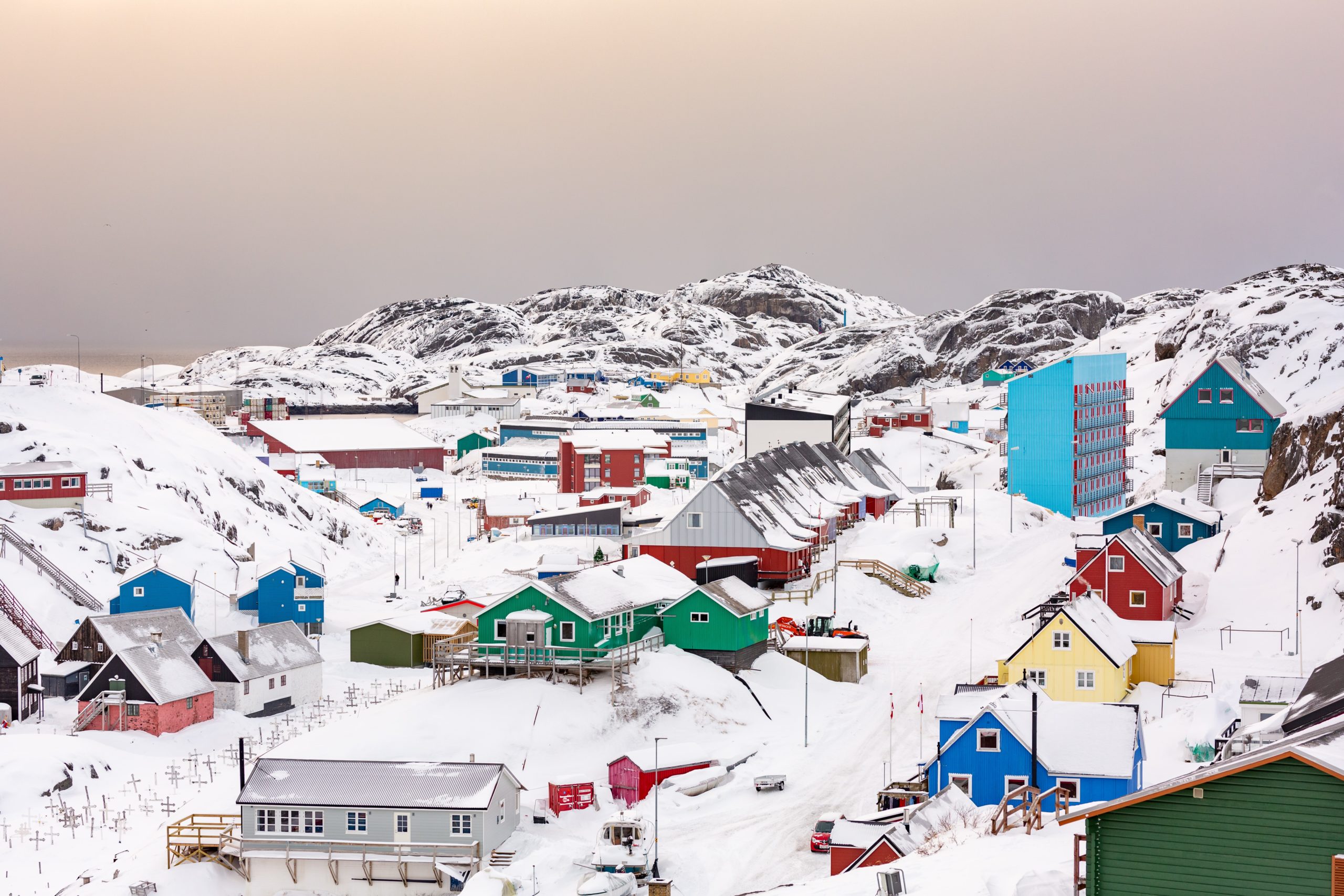
3. Greenland via Reykjavik or Akureyri
I know what you’re thinking! Greenland? But this isn’t a rare spot in Iceland? And you are correct. However, for the intrepid aurora hunter or day-tripper, it is good to know that the icy shores of Greenland, or Kalaallit Nunaat, are accessible from multiple city airports in Iceland.
You can catch a quick flight in Reykjavik’s domestic airport to the capital city of Nuuk, and it only takes about 3 hours and 20 minutes. These flights visit multiple locations in Greenland however, so if you’re looking for a longer stay you can visit Ittoqqortoormiit, Kulusuk, Narsarsuaq or Ilulissat.
Though this is another country, we had to include it on the list as a rare and magical aurora hunting dream spot- because it has not been possible in recent years to get many direct flights to this area outside of Iceland or Denmark.
Thanks to Greenland’s small population, remote towns, and low light pollution, this is a phenomenal place to chase the lights. This large landmass also boasts fairly clear skies most of the time and is large enough that you can move around to avoid some of the relentless low-pressure systems that are so populous in the high winter of the year.
There are many things to do while you wait, like fishing in the pristine ice fjords, dog sledding, hiking, climbing, and visiting one of the biggest ice caps in the area. But don’t stray too far from the towns- with their colorful houses and local delicacies, they are just as incredible and bright as the light show you’ve come to witness.
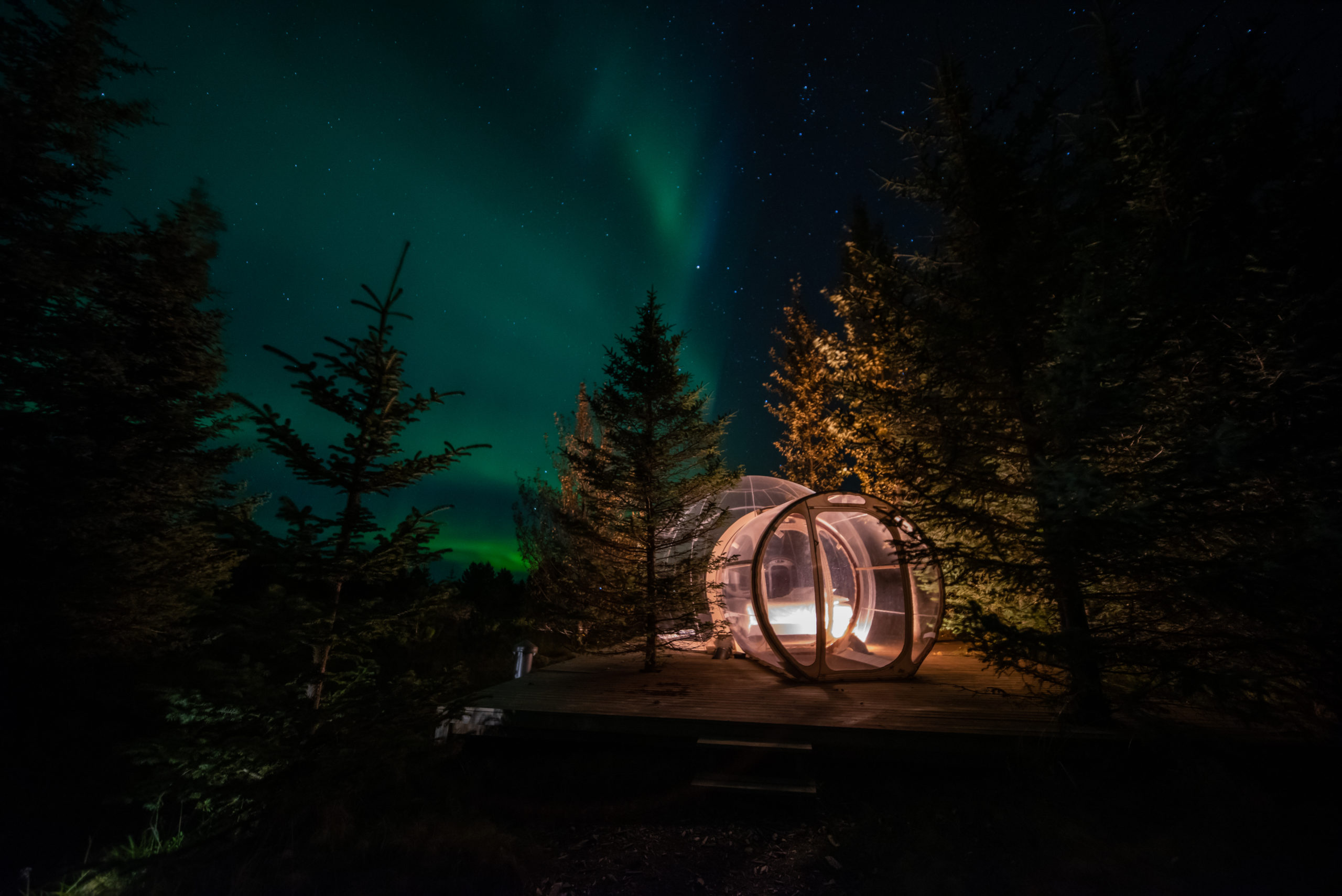
4. The Bubble Hotel of Iceland: Imagine if the only thing between you and the lights was a bubble?
Though rare, this spot might be easier for you to get to- with some help from their intrepid guides. The Bubble Hotel of Iceland is a surreal paradise tucked away into two different Icelandic forests.
These wholly transparent spheres are heated and nested into private groves so that you can melt into nature while wrapped in a luxurious down comforter. This might be our coziest location yet!
Typically when aurora hunting, you have to give it a rest when you go inside. Sometimes we miss prime aurora hours, or even a whole show when we head in to get a hot chocolate and thaw out.
But not here at the Bubbles. At the Bubbles, going inside never means missing the sky. You can lay outside for the whole night, and see everything around you from your 360-degree nest in the woods. It’s hard to beat!
If you plan on visiting the Bubbles, it is good to note that there are not many of them, and they book up months in advance. They exist in order to protect the woodlands they’re in, and provide an alternative revenue source to the farmers in the area so that they do not have to sell their lumber.
Protecting long-term growth in new forests is an important task, and so not only are the Bubbles a fun choice, they are a responsible one. They are located out in the country near the Golden Circle region, and the South Coast region, and upon booking, one of their local guides will collect you in Reykjavik and give you a chauffeured tour on the way to your destination.
They will also pick you back up the next day, and return you to town. From start to finish, a trip to the Bubbles is the ultimate luxury and a rare chance to turn off your brain and connect to the world around you. Not a bad state of mind for some aurora hunting.
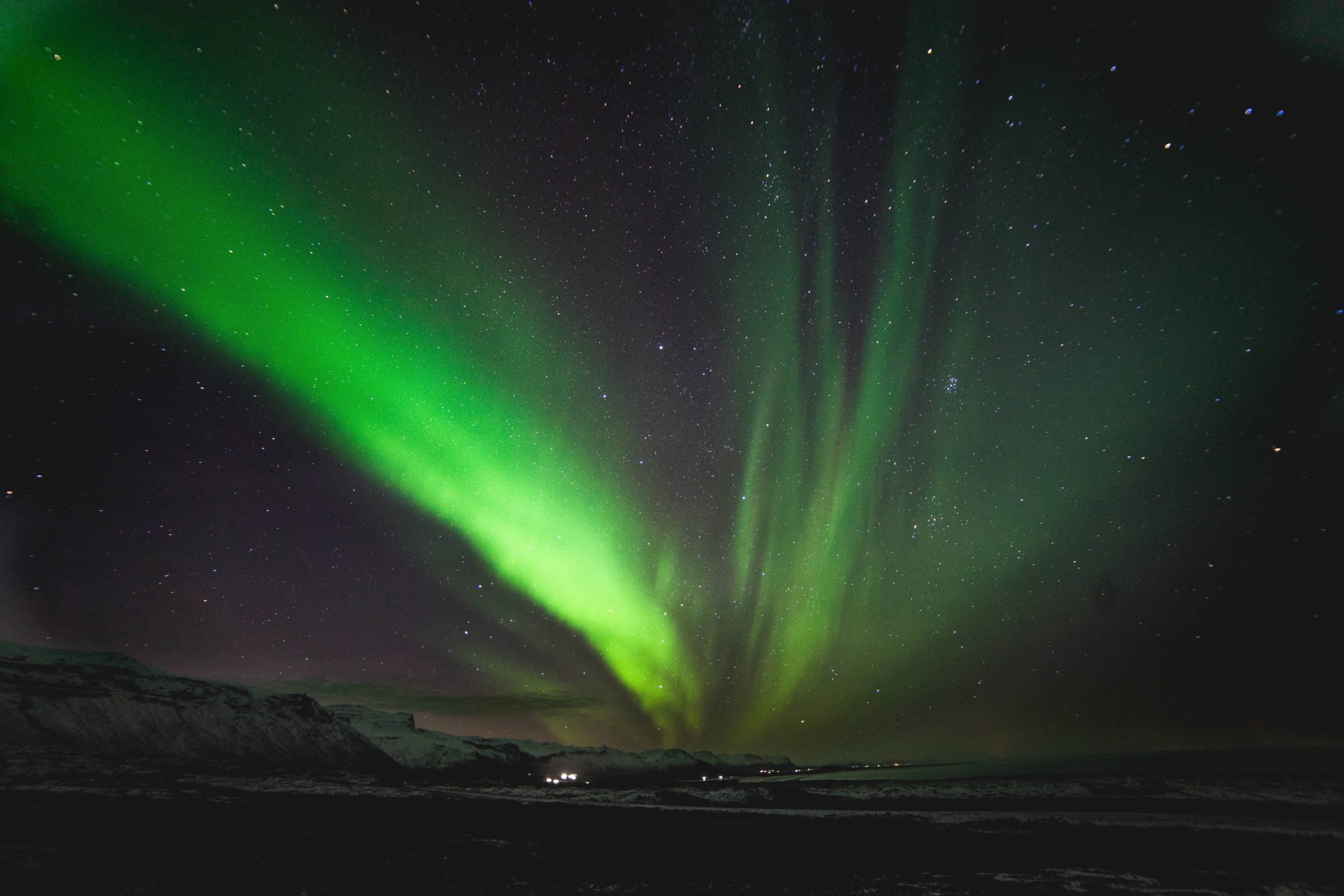
5. The Arctic Henge at the top of the world
Unless you’re already stationed up in the north, it may take you quite a while to get to this one. Sitting at 2 hours and 2 minutes drive from Húsavík, this monument is nearly the highest mainland point in Iceland.
Designed by Artist Haukur Halldórsson, the Arctic Henge is much like Stonehenge and is built as a reminder of figures from Norse mythology. The henge itself represents four dwarfs from the Prose Edda book who were tasked by Odin to hold up the sky.
It acts as a sundial and a calendar of sorts, reminding us of all of the dwarves that help to build this chronological map of the seasons. Right now the henge consists of four six meter tall gates and one ten meter high column, but it is still under construction.
The stones used to create it are massive, Set on a hill in the seaside town of Raufarhöfn, this is a historical place with an incredible spectrum of wildlife. If you don’t visit Grimsey, this is nearly as far north as you can get in Iceland.
The clarity in the northern climes and lack of light pollution is sublime, and few photos can rival a choice shot of the lights dancing among the henge. (Perhaps even a video punctuated with the wild cries of Arctic foxes darting in between? This is their turf, after all.)
Keep in mind when you visit that the henge is a holy place celebrating the Ásatrú belief. It may yet be under construction for some time, and so it may take a few visits to see everything that has been planned.
Though it is out of the way, don’t sleep on Raufarhöfn and its beautiful henge. Aurora hunting is a place of deep magic is not an opportunity to be missed.
Don’t miss that shot! 10 important tips for photographing aurora borealis
Camera? Check. Gloves? Check. Tips for photographing aurora borealis? Double check.
Planning to capture some once-in-a-lifetime shots on your aurora hunt? Don’t head out without these tips for photographing aurora borealis!
Seeing the lights in person is one thing, but being able to revisit that memory is priceless. Here are some of the tips and tricks that we use when setting up for a night of astrophotography. Share some of yours in the comments!
1. Keep your image sharp with a tripod
It can be hard to tell, but we move a lot. Try taking a few photos on a long shutter and you’ll see how much. In order to achieve a crisp and unblurred image, you’ll need a tripod or a solid surface to set your camera on for the duration of its shutter process.
Tripods are the best option. Because you never know when you’ll get a flat enough rock at the right height. (Not to mention the wind! A brisk evening wind has taken out many an expensive camera- so make sure yours is both attached and weighted enough to be left alone!
And if your images still suffer from shake, try a remote shutter release, or set a 10-second timer. You’d be surprised how disruptive one shutter press can be!)

2. Check for manual mode
When you’re heading out on your first aurora excursion, make sure you have the right gear for the job. Many first-time hunters make the mistake of bringing cameras that don’t have a manual capability or a way to adjust settings.
Things like disposable cameras and many lower-level point and shoot varieties function on pre-created settings that don’t allow for much tweaking if any. These settings are most often intended for specific contexts like traditional daytime sunlight and indoor lighting.
You may find that you have limited control over novelty gear and smartphones as well, so it is good to check beforehand to make sure you know what you’re working with. Popular options for aurora photography are SLR and DSLR cameras with a manual mode, and as technology develops- even some smartphones and drones.
Many of the newer smartphones have night mode settings and are only getting better. But till then- it’s hard to beat good old-fashioned manual mode, which gives you full control over your image and how you capture the light around you.
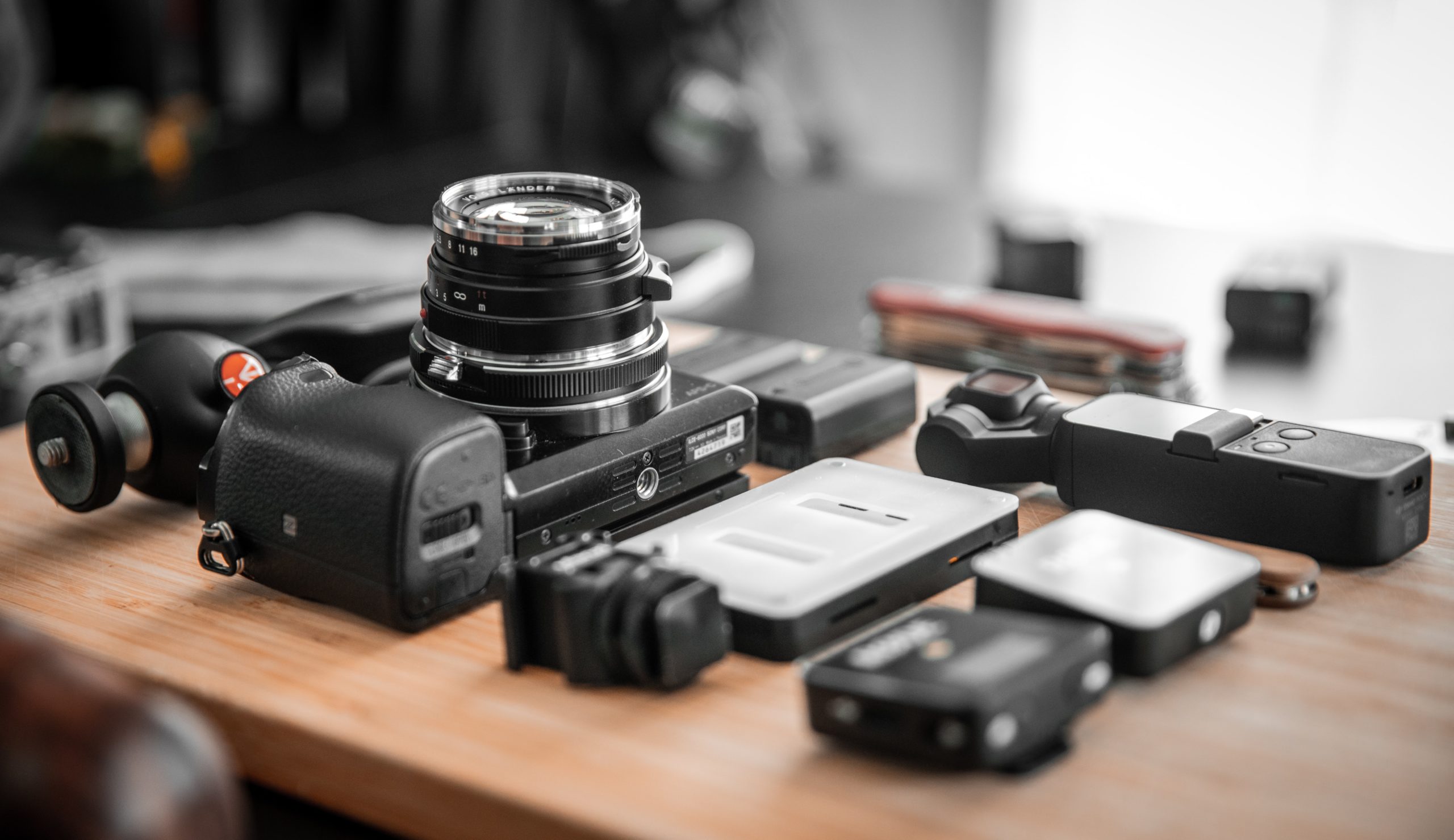
3. Do your business before you leave the house
If you’re just starting out, get familiar with your camera settings before you leave. Finding an unfamiliar button or dial in the dark can be a struggle, especially if there’s an aurora actively happening overhead.
You can set and test basic settings (shutter speed, ISO, aperture, etc) before you head out, giving yourself just one less thing to do in the field, and a chance to troubleshoot any problems.
Keep in mind though, that a good understanding of these settings is helpful as you may have to adjust them based on what conditions you’re seeing. (Oh. And do use the facilities before you go- you never know when you’ll see another bathroom out in the wilds of nighttime Iceland.)
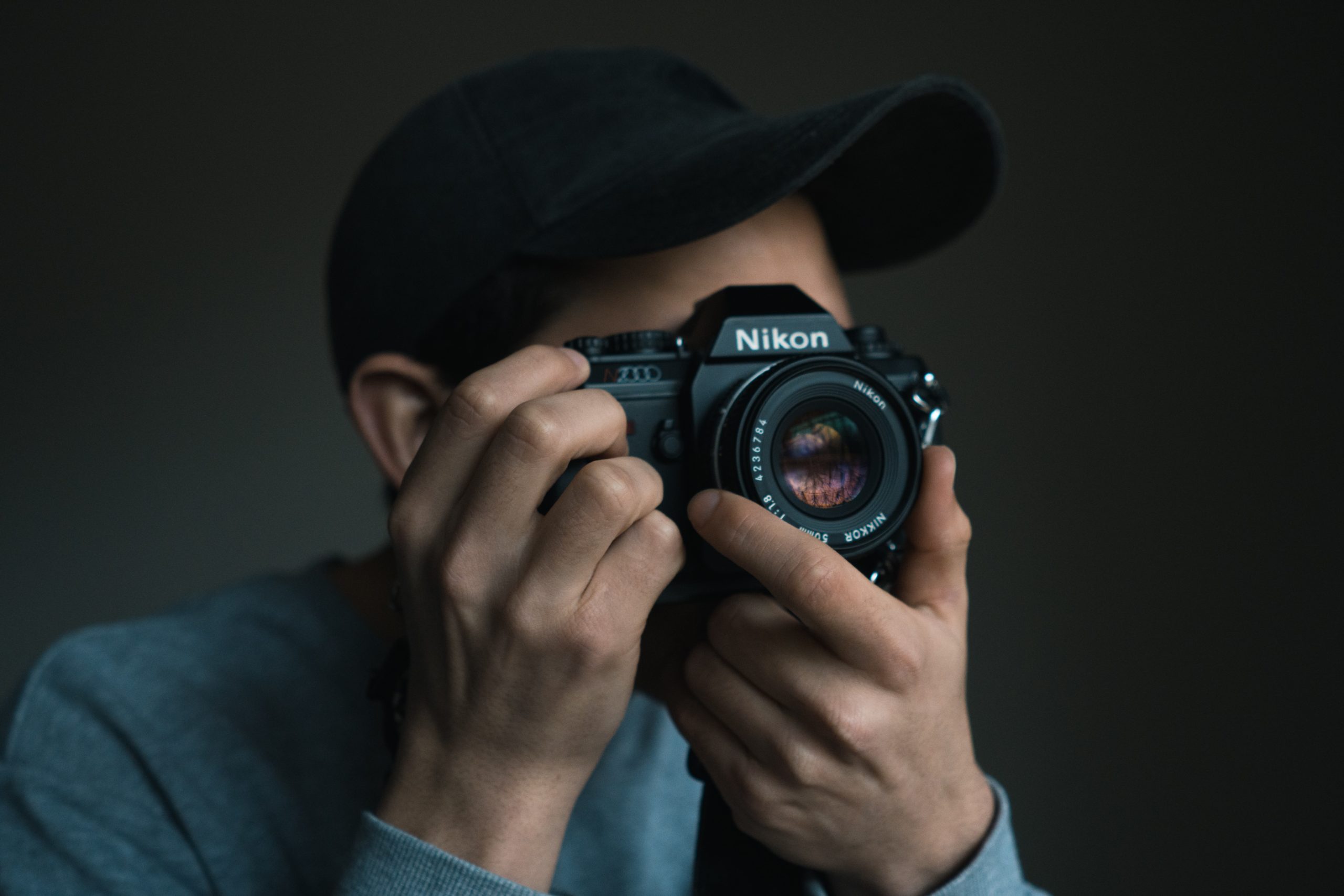
4. Get focused
You already know to put the camera in a manual setting, but what about your lens?
The autofocus function works really well during the day, but at night the camera will struggle to use this tool. Picture it- you’re all set up, there’s a glorious display of northern lights, you’ve pressed the button, and.. The lens is just grinding into infinity.
When in autofocus in a dark place the camera isn’t quite sure what to focus on, so it just spins the lens over and over trying to find a subject. So don’t forget to set your camera to manual focus! (..And then to actually focus, using another bright object in the area.)
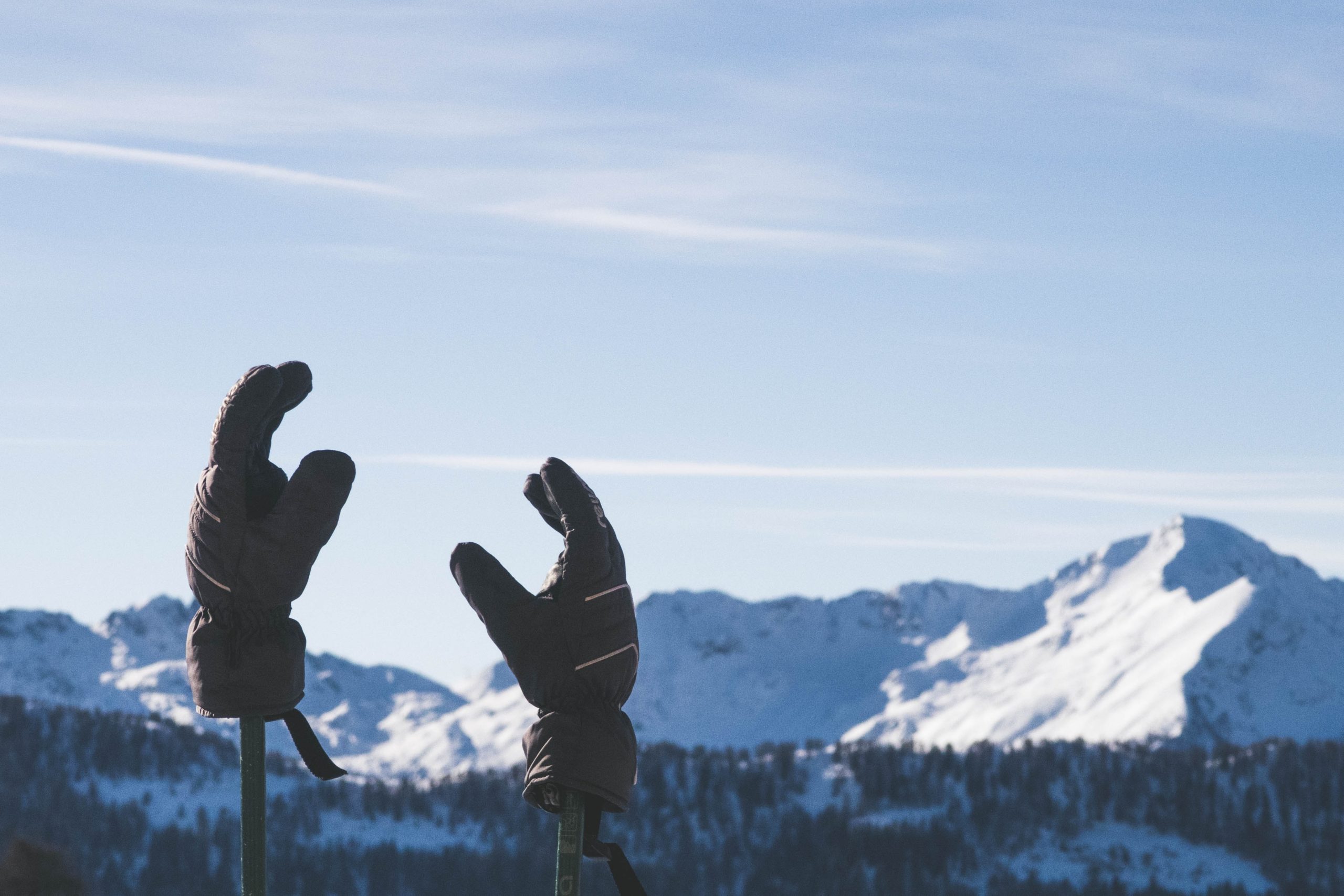
5. Keep your batteries warm
Most cameras are powered by lithium-ion batteries, and lithium-ion batteries don’t do well in the cold. This could spell trouble for your smartphone, your cameras, and even your gadgets or tools.
In order to keep yourself prepared, the best thing to do is to make sure you have fully charged backup batteries on hand. But if it’s too late, you can still salvage the one you’ve got by warming it in your pocket, wearing your gear close to your body, or utilizing hand warmers.
Make sure to not leave your batteries in a cold place overnight, and if you need to do an emergency charge, try to avoid charging a cold battery. You may find that it won’t take the charge!
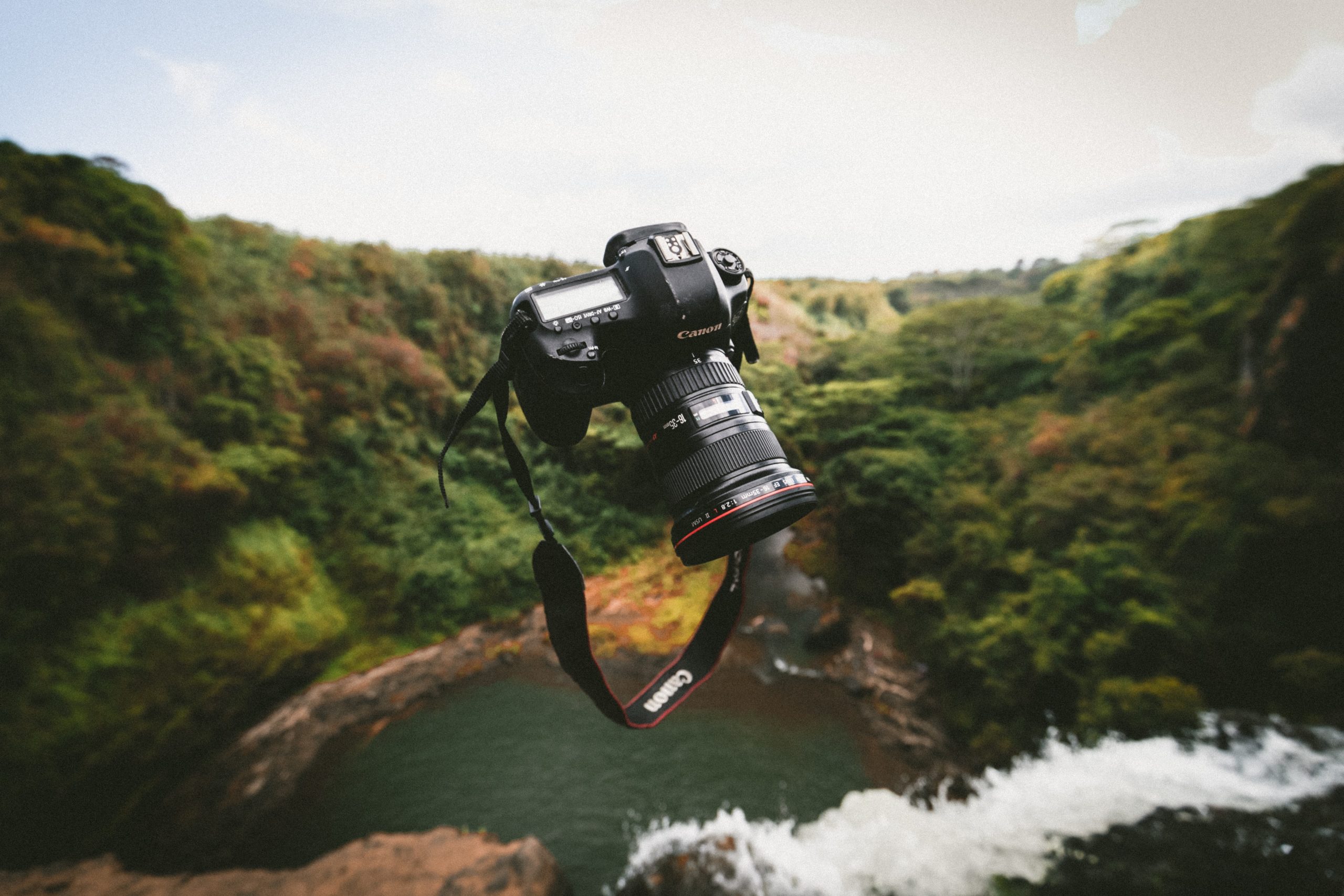
6. Open it up!
You’re packing your camera bag and making last minute lens decisions- so what are you bringing? Our favorite aurora lenses are fast, wide, luminous and light.
That means that they can access a low digit (fast) aperture, they can capture a wide view of the sky, they aren’t overly heavy, and they manage low light conditions well and without distortion.
Choosing a lens is a big investment, so make sure you’re going with something that works for your camera and will meet your photographic needs. Auroras can take up a huge vista, so when in doubt, go wide!
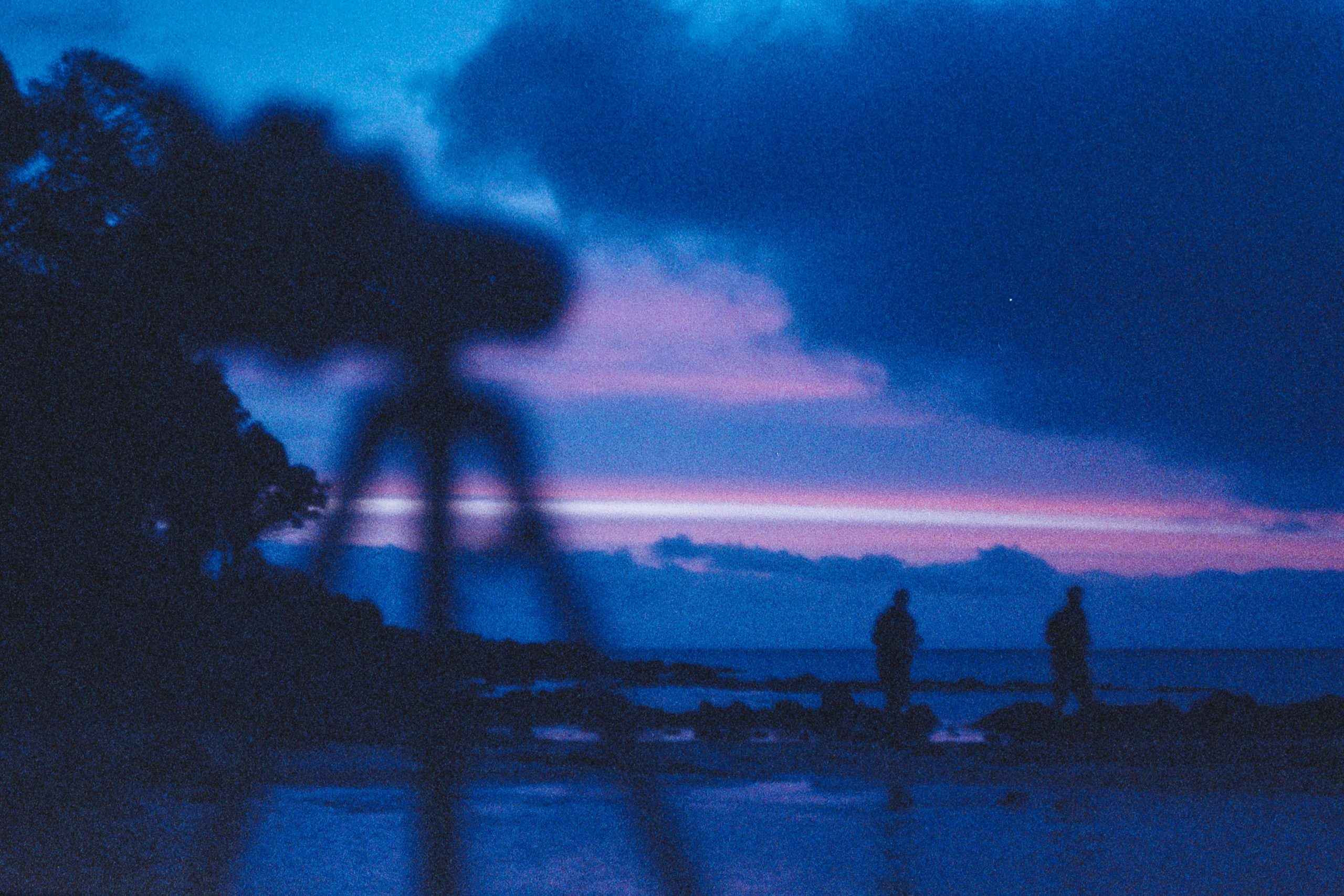
7. Keep down the noise
When setting your camera for nighttime photography, one of the most important settings to remember is ISO. ISO is a function that controls the light sensitivity of the camera’s imaging sensor.
In this case, that means that the ISO is helping the camera “see” light in a dark place. ISO is always in play, even if you’re using a pre-programmed setting, and we recognize it as a number scale.
Typically, a daytime ISO is between 100-200, and a nightime ISO starts at 800, and can go quite high depending on the conditions at hand, and the length of your shutter speed. (Too much on both can create a washed out image!)
You will find that you’ll have to experiment a bit with the best ISO for your shot, and it’s good to try a few. For most cameras, we recommend staying below 6400, but always experiment with these combinations- as higher end cameras will have different processing strengths.
But beware- the ISO may make the aurora in your photo brighter, but you can have too much of a good thing! An ISO that is too high can create “grain” in your photo, or noise.
This can be hard to see in a thumbnail, so make sure to capture shots with multiple setting combinations to avoid getting a great shot- but with too much texture.
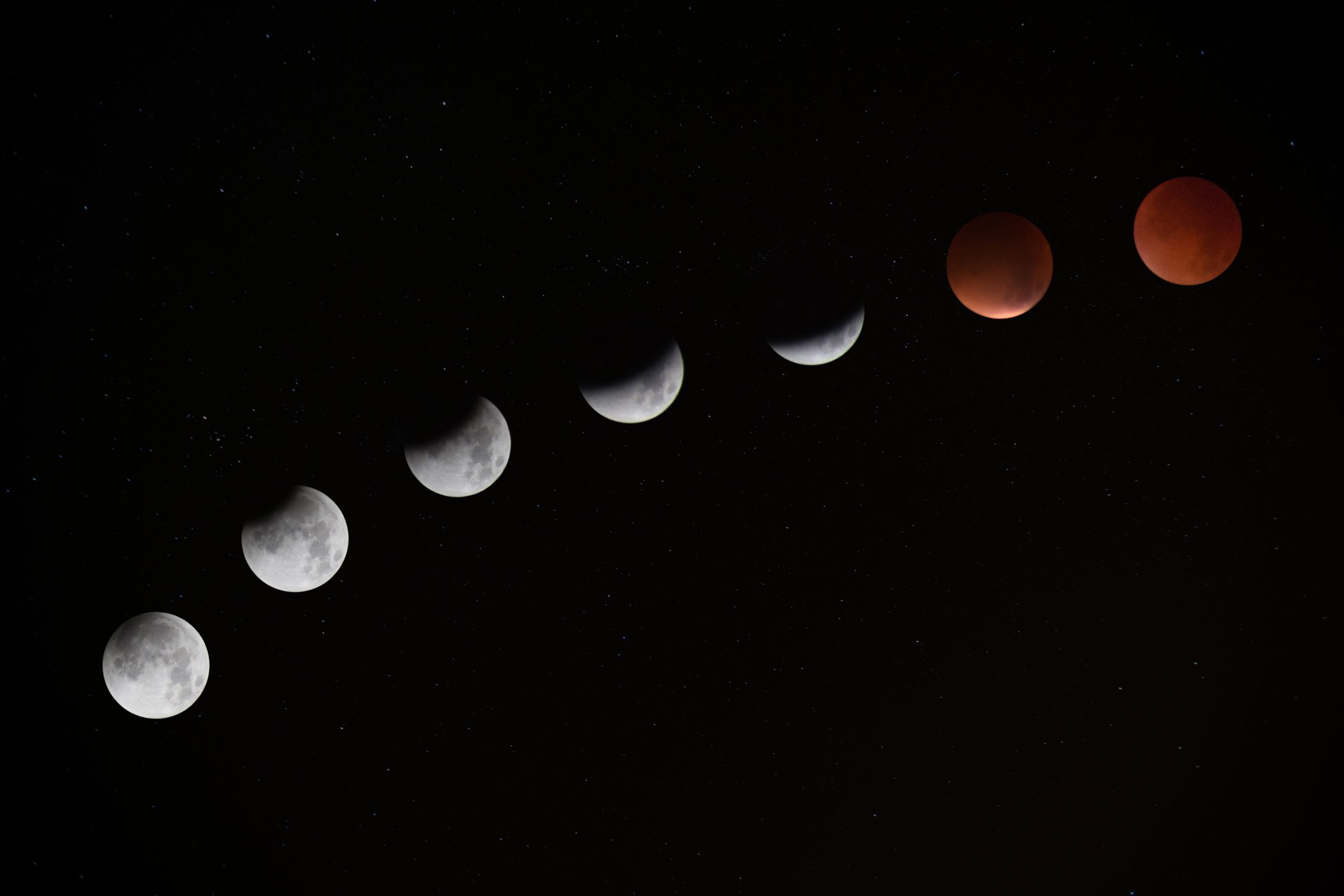
8. Catch every movement, the easy way
Photos are great, but what about animation? Live filming of nighttime shots has been difficult for a long time, but is starting to become possible on certain cameras.
The difficulty here is that most cameras do not allow manual setting control during video, but instead they give you a pre-set daytime mode. In order to capture an aurora on video, you still need access to those nighttime settings just like you do in photos.
The good news is that tech is catching up and allowing us these options more and more- but what if you don’t have one of those gadgets? Luckily, you can go the route of a traditional aurora hunter and try out time lapse.
A time lapse is a collection of many photos taken in quick succession, that are put together later to create a slideshow. After controlling the speed of this slideshow, you can use photos to simulate filmed movement in an auroral occurrence.
Many cameras have a time lapse function already, so you can just set it, and forget it! (Make sure to test it before you go out, this can be a tricky one to troubleshoot in the field.)
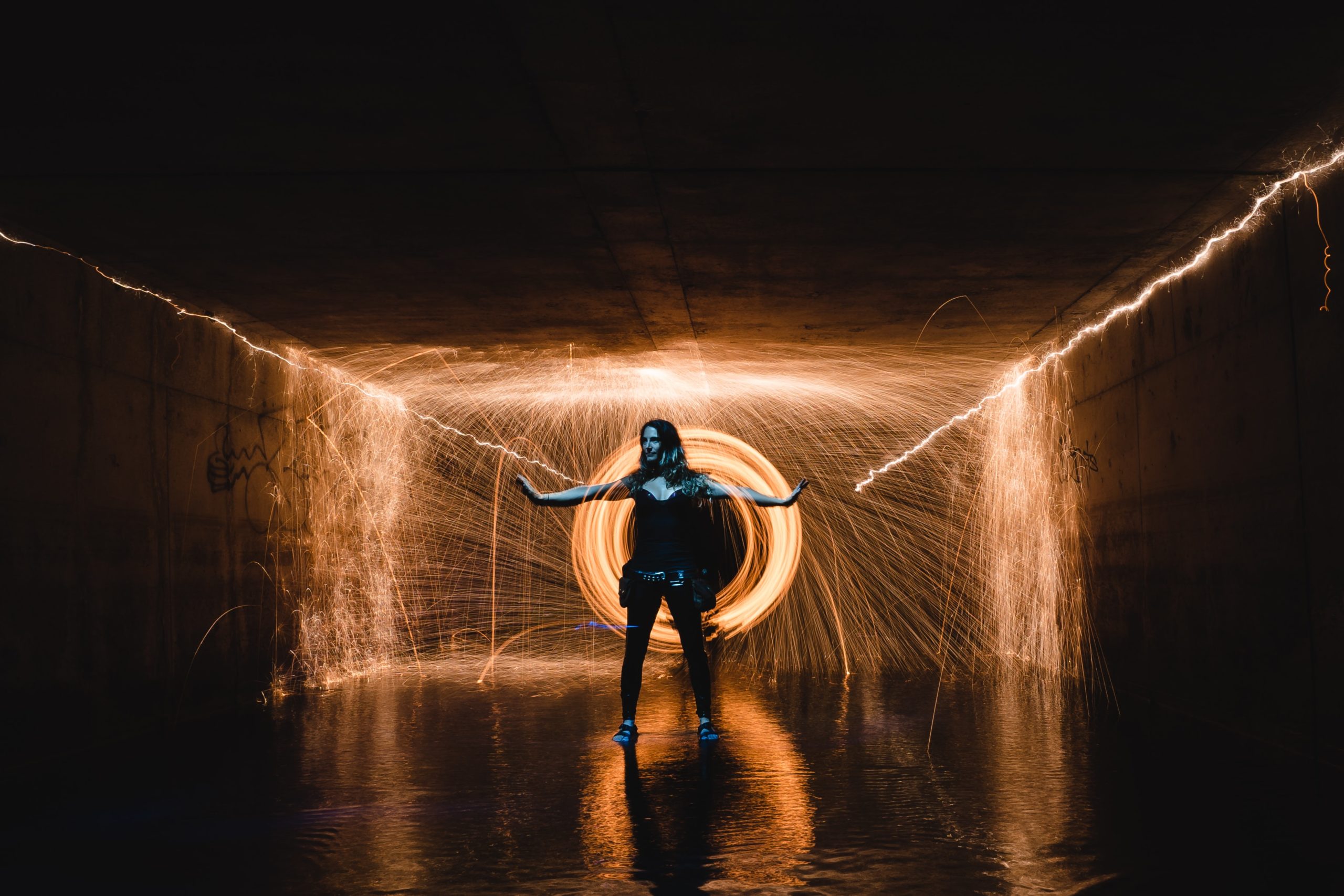
9. Don’t forget to turn ON the lights
Believe it or not, there are actually moments where a little light pollution can help us out. In instances where you want to be in the shot, or want to light the foreground a bit, try experimenting with small lights or vehicle headlights to carefully illuminate a smaller foreground object.
These photos takes some experimenting to get right, as too much light during a long shutter process can create overexposure. Sometimes it’s enough to just flash a cell phone light for a few seconds, and allowing the camera to capture that moment and layer it in.
A well diffused porch light can do the trick- or even a good flashlight. And if the northern lights are running late, don’t forget about light painting!
Allowing a camera to take a photo on an extra long shutter can create motion blur in a photo- which gives you a chance to write a message or draw a symbol with a small light.
You’ve likely seen some of these images before- and they can be a lot of fun on a night when you’re biding your time waiting. Try setting your shutter to bulb for more time, and experiment with star trail shots as well! After all, the aurora isn’t the only light up here.
10. Pick your favorite color
Disclaimer: If you can, shooting in RAW is a preferable starting place. The RAW image format allows the image to retain more data, which helps you out later if you plan on post processing the image later.
A RAW image would retain enough data that you would be able to adjust the white balance later on. However, if you don’t have this ability, or you don’t want to bother with post processing, this tip is for you.
Once you’ve set your camera within the typical nighttime setting range, you’ll find that funny things can happen with color. Messing with somebody’s concept of light can do that.
However, don’t fret! If your photo is exceptionally orange or extremely blue, this can be quickly remedied by changing the white balance on your camera. The white balance option often has its own button indicated by “WB”, but can also be found in your camera’s settings menu.
This function gives you a menu of different icons that correspond to different “temperatures”. These temperatures will change the color cast of your images, so you can use them to control the warmth or coolness of your shot.
This is a pretty subjective setting, so you may need to try a few to get the look that you want.
10 facts about the Northern Lights to dazzle your mind and ignite your imagination
You’ve heard about why the lights happen, what changes the colors, and when is the best time to see them.. But what else is there to know?
The aurora is one of nature’s most mysterious phenomena. We spend a lot of time talking about it, reading about it, and looking for it– so we put together these 10 facts about the Northern Lights that might be interesting to another aurora enthusiast.
How many of them did you already know? Let us know in the comments!
1. Galileo gave the aurora the name we use today
Sometime around 1619-1621 A.D., Galileo Galilei, and Pierre Gassendi witnessed an aurora. A time of great astronomical advancement, this event kickstarted the aurora madness that we all know so well today.
This is where the name “Aurora Borealis” was born. Coming from the name for the Roman goddess of the dawn (Aurora), and the Greek god of the northern wind (Boreal), the term we are so familiar with today was penned.
Though Galileo and Gassendi are credited with some of the earliest modern writing, there are multiple historic records of early cultures recording their glimpses of the lights.
And despite having named it, Galileo didn’t actually know what it was. In fact, he named it “aurora” because he thought it was the sunlight reflecting off of the atmosphere.
We didn’t know the true source of the aurora until the early 1900s when…
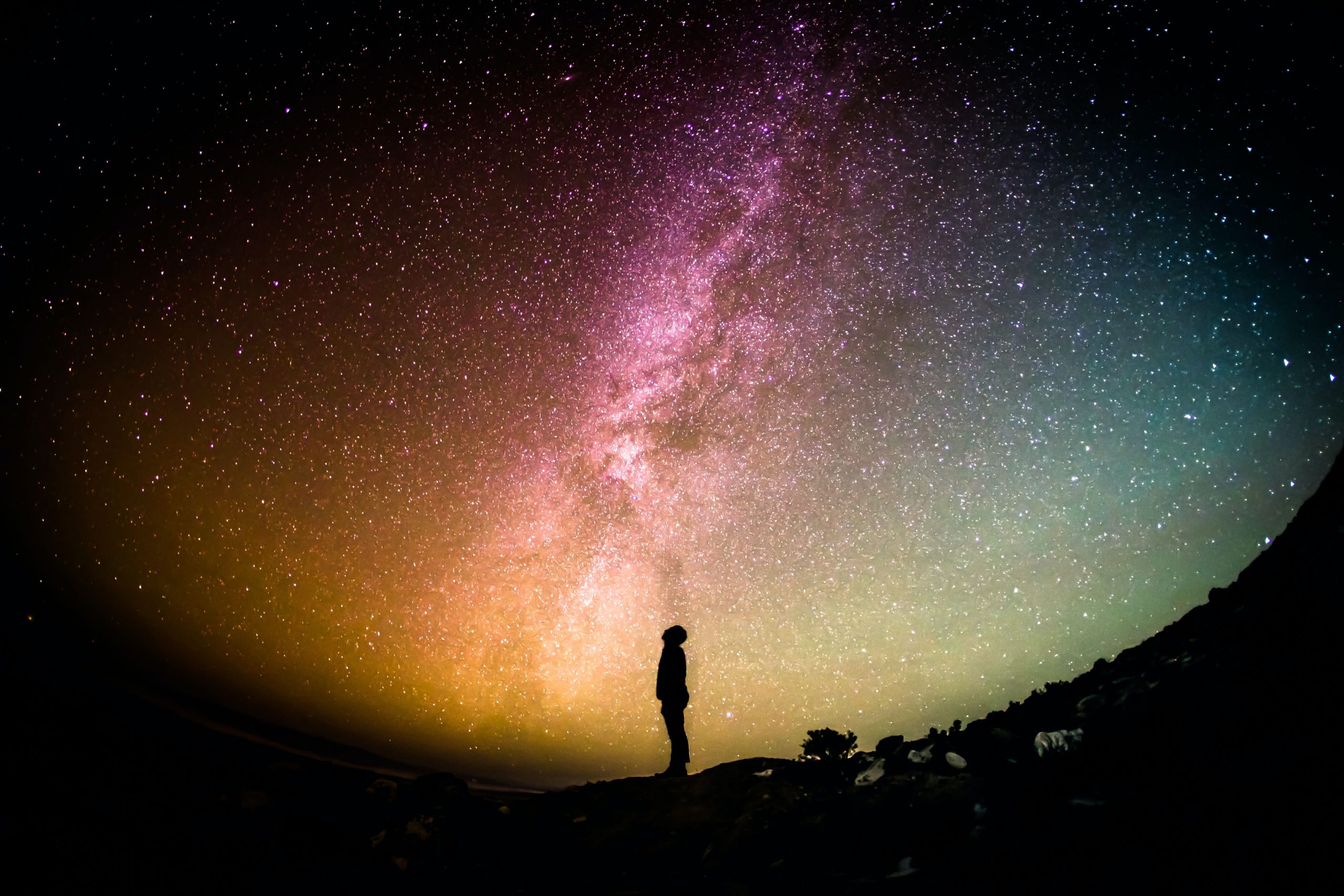
2. Kristian Birkeland developed the theory of atmospheric electric currents, therefore revealing the origin of the Northern Lights.
Often referred to as “The Father of the Aurora Borealis”, Norwegian scientist Kristian Birkeland is responsible for introducing us to the real source of the Northern Lights.
Between 1899 and 1900, he organized the Norwegian Polar Expedition to study the global patterns of electric currents. He did this by making magnetic field measurements from Earth, and the theory he was able to develop through this study is the basis of the theory we use today.
He released this information to the world in 1908 in his book, “The Norwegian Aurora Polaris Expedition 1902–1903”. Birkeland went on to be nominated for 7 Nobel Prizes, but in his lifetime his work was highly contested and considered a fringe theory at best.
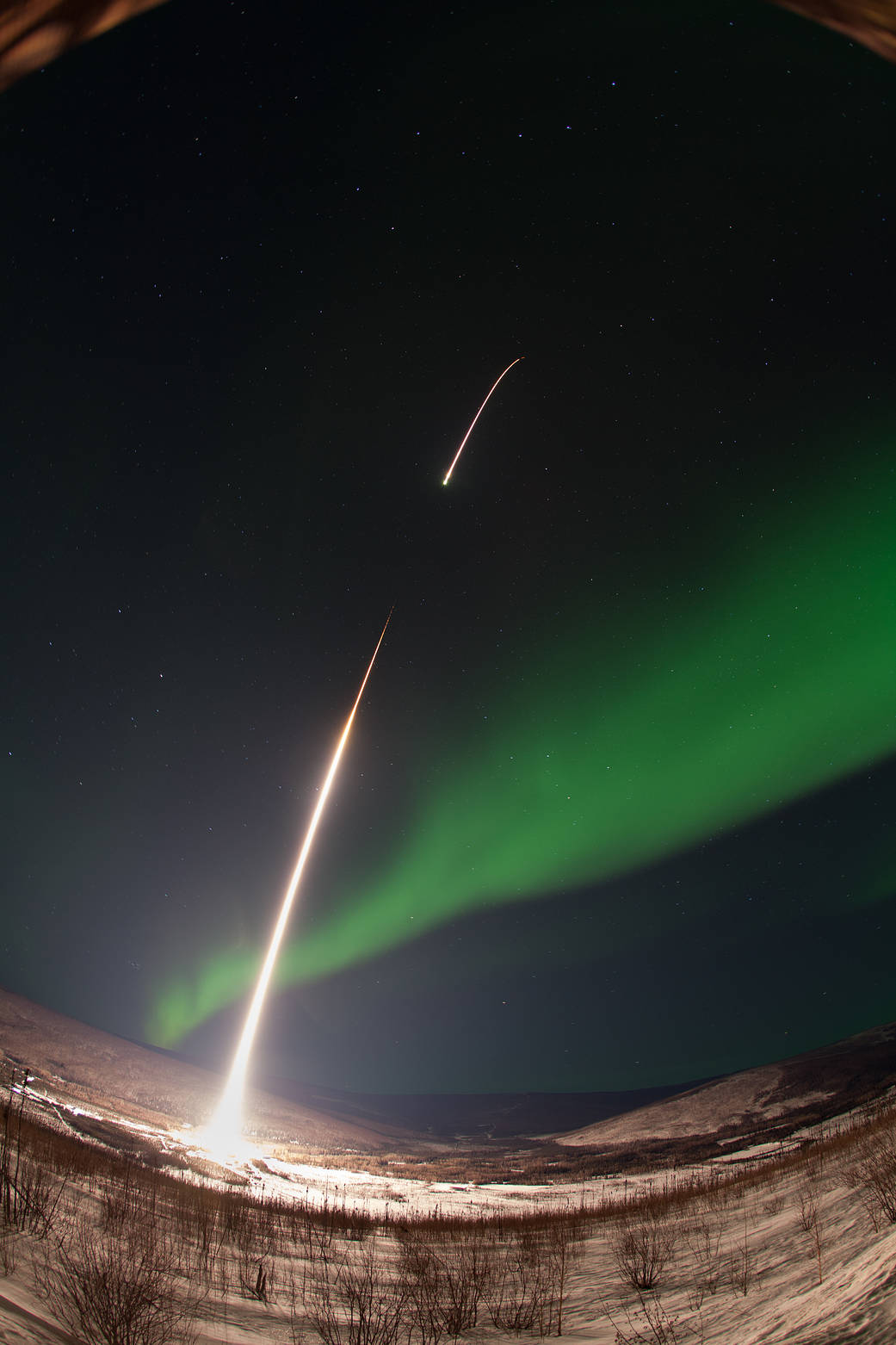
3. We didn’t believe Birkeland’s theory until 1967!
(Ok well maybe some people did.) Kristian Birkeland died in 1917 at the age of 49, and at the time of his death, many mainstream scientists did not believe his theory about the aurora. The difficulty here was that his experiments were costly, and it was believed that this theory could not be proven by ground measurements alone.
(It also didn’t help that it was the early 1900’s, and getting to space wasn’t an option yet.) Things changed in 1967 however, when the U.S. Navy sent satellite 1963-38C up into space. This probe carried a magnetometer above the ionosphere, proving the existence of magnetic disturbances, and therefore, Birkeland currents.
Like many scientific discoveries, the origin of the aurora was only made possible by the study of many, many curious people. Birkeland’s study was the next step here, but for him these hypotheses were made possible by the work of scientists like Anders Celsius and Olof Hjorter before him.
It makes you wonder what discoveries will be born of our curiosities now!
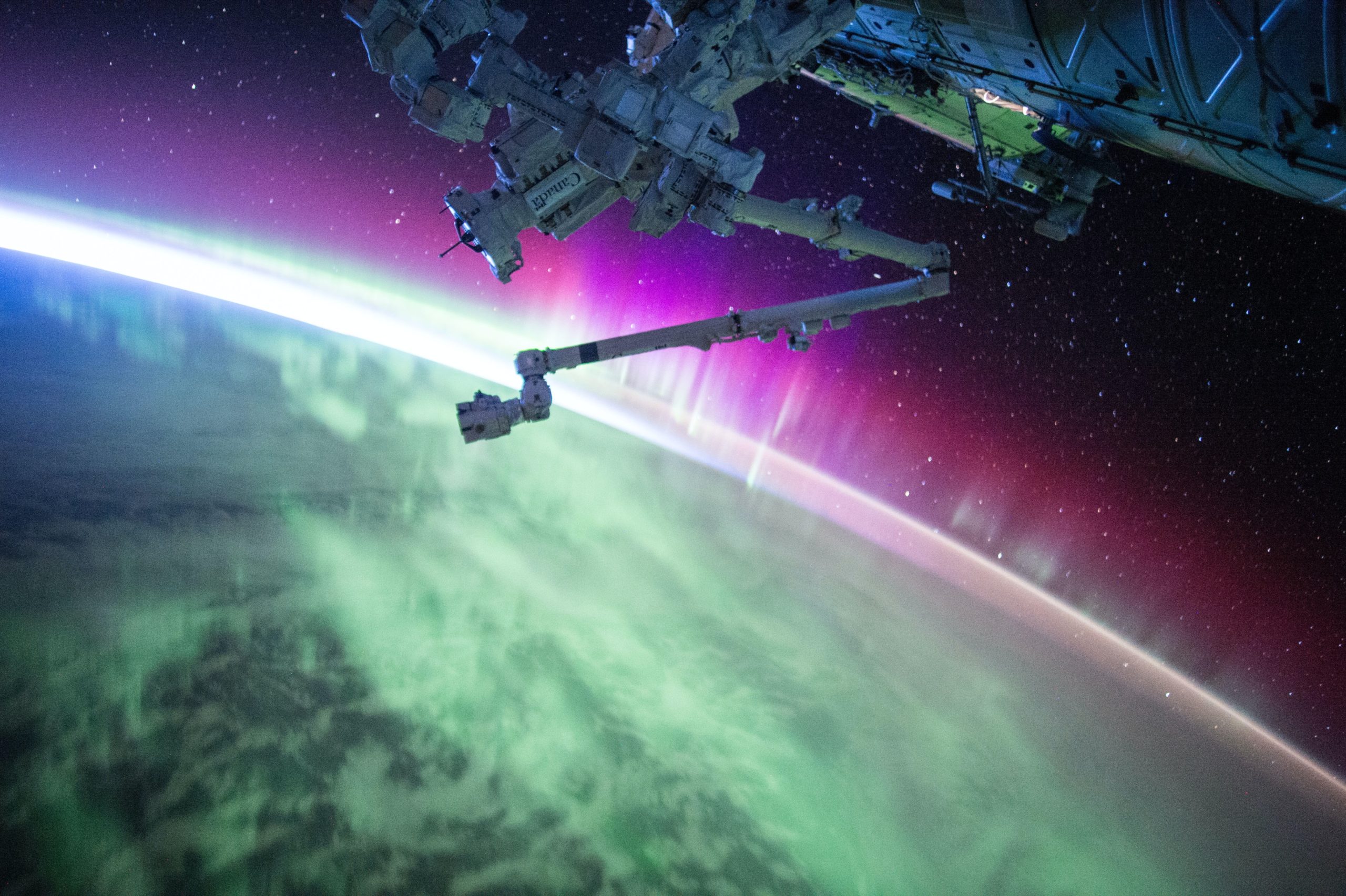
4. We continue to study the aurora.
Our quest for auroral knowledge did not end with that Navy probe, or with Kristian Birkeland. In fact, it proliferated. Citizen scientists have been hard at work monitoring space weather and collecting data on what they can see- and even NASA is hard at work filling in the blanks!
This is still very much a developing branch of science, and even as recently as June 2021 new data has been collected via NASA’s Magnetospheric Multiscale mission.
Satellites, sounding rockets, multiple study missions, and laboratory experiments here on Earth are just some of the ways that we are inching closer to a better picture of what creates our favorite light show, and how it can be affected by different factors that we have yet to fully understand.
Perhaps this study will far surpass our lifetimes, just like Birkeland. Imagine the strangeness of today’s facts becoming tomorrow’s misconceptions. The journey continues!
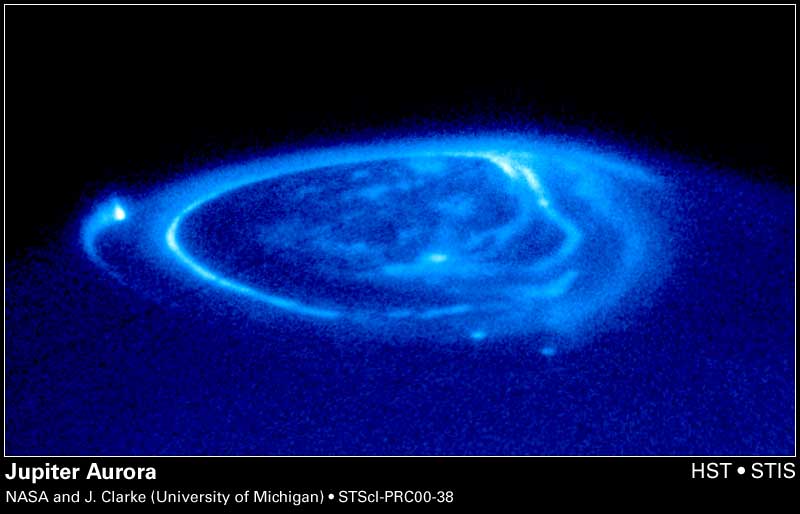
5. We’re not the only ones with auroras!
As you may know, there are two different areas on Earth where one can view auroras. There’s the Aurora Borealis in the north, and the Aurora Australis in the south. But now that we can see a bit further out of our own planetary neighborhood, we know that other planets host auroral light as well!
Because we know that the look of an aurora is caused by the atmospheric gases that it collides with, we can make a lot of inferences based on what we believe the atmospheric makeup of a certain planet to be. We now know that planets like Saturn, Uranus, and Neptune have auroras due to the interaction of solar wind with planetary magnetic fields.
We also know that nearby Mars and Venus have them as well, due to solar wind engaging with their atmospheres. Tools like the NASA/ESA Hubble Space Telescope and NASA’s Juno spacecraft have been able to not only confirm this, but also capture images of planets like Jupiter in full glow.
Just by seeing these things, we are able to learn more about how our sun functions, and how other planets are not just different from ours, but alike.
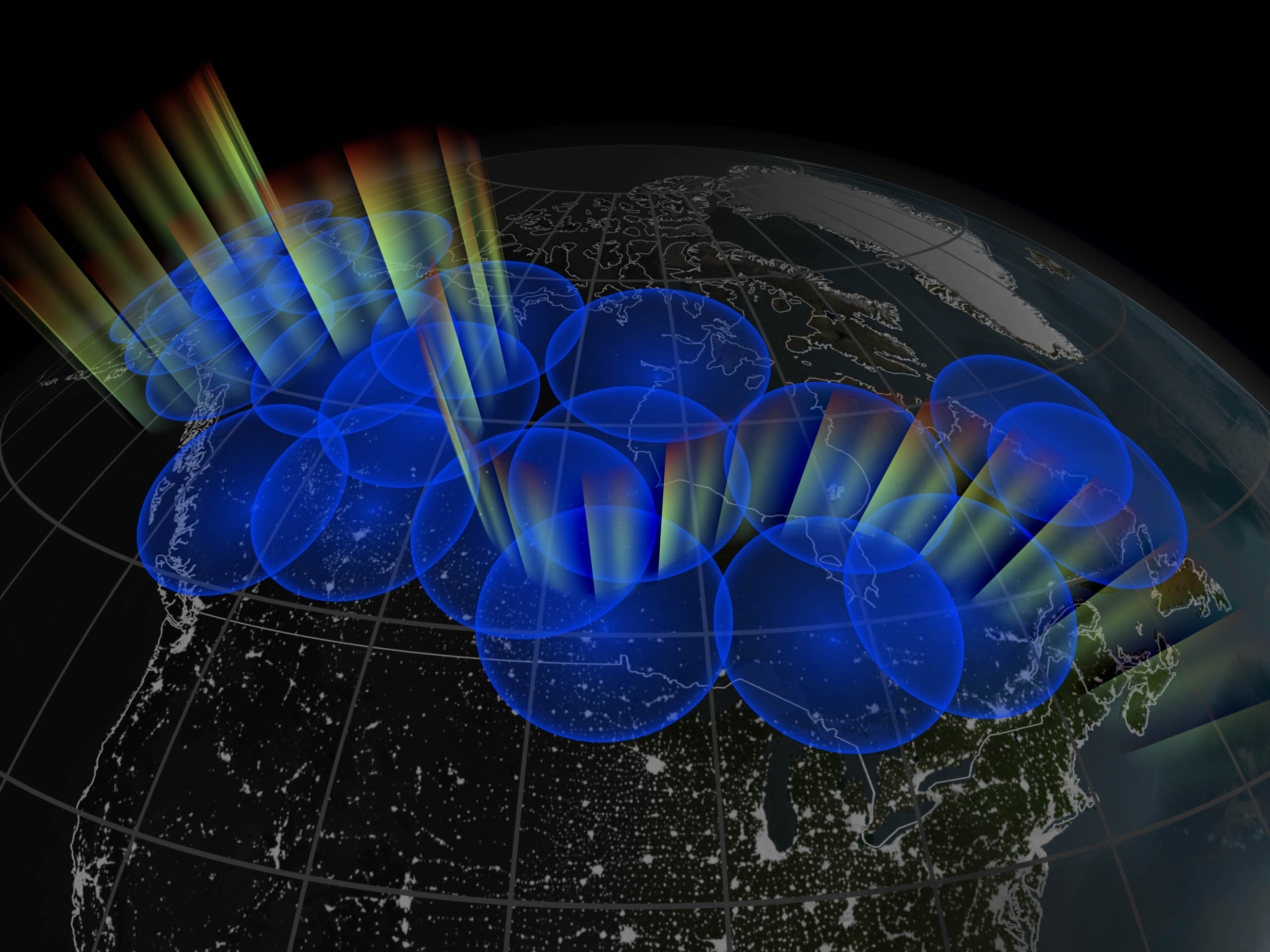
6. It isn’t just NASA making discoveries. Citizen science is at an all-time high!
Being on Earth in the 21st century is an exciting thing. There is more information available to us than ever before, and more accessible tools than we’ve ever been able to acquire. (It also helps that we are less likely to be burnt at the stake for pursuing a scientific theory. Maybe.)
And in that spirit of advancement, in 2016 in western Canada, citizen scientists made an incredible discovery. We know that discovery today as STEVE, or, Strong Thermal Emission Velocity Enhancement.
STEVE was originally named after a reference from the animated film “Over the Hedge”, in which the character’s named a hedge without knowing what it was. Early viewers of STEVE also weren’t sure what it was, so the name stuck.
STEVE is a pinkish “streak” that can appear in conjunction with auroral activity (often appearing as a spiky picket fence), and though we’ve actually been seeing it for centuries, it was never truly researched until this sighting.
STEVE is created by particle friction, which explains its incandescent color. It occurs closer to the equator than the lights typically do, and because of the collaboration of astronomical photographers and scientists, we were able to learn more a lot more about what actually causes it.
It just goes to show that there is always more to discover, and any one of us can lend a hand.
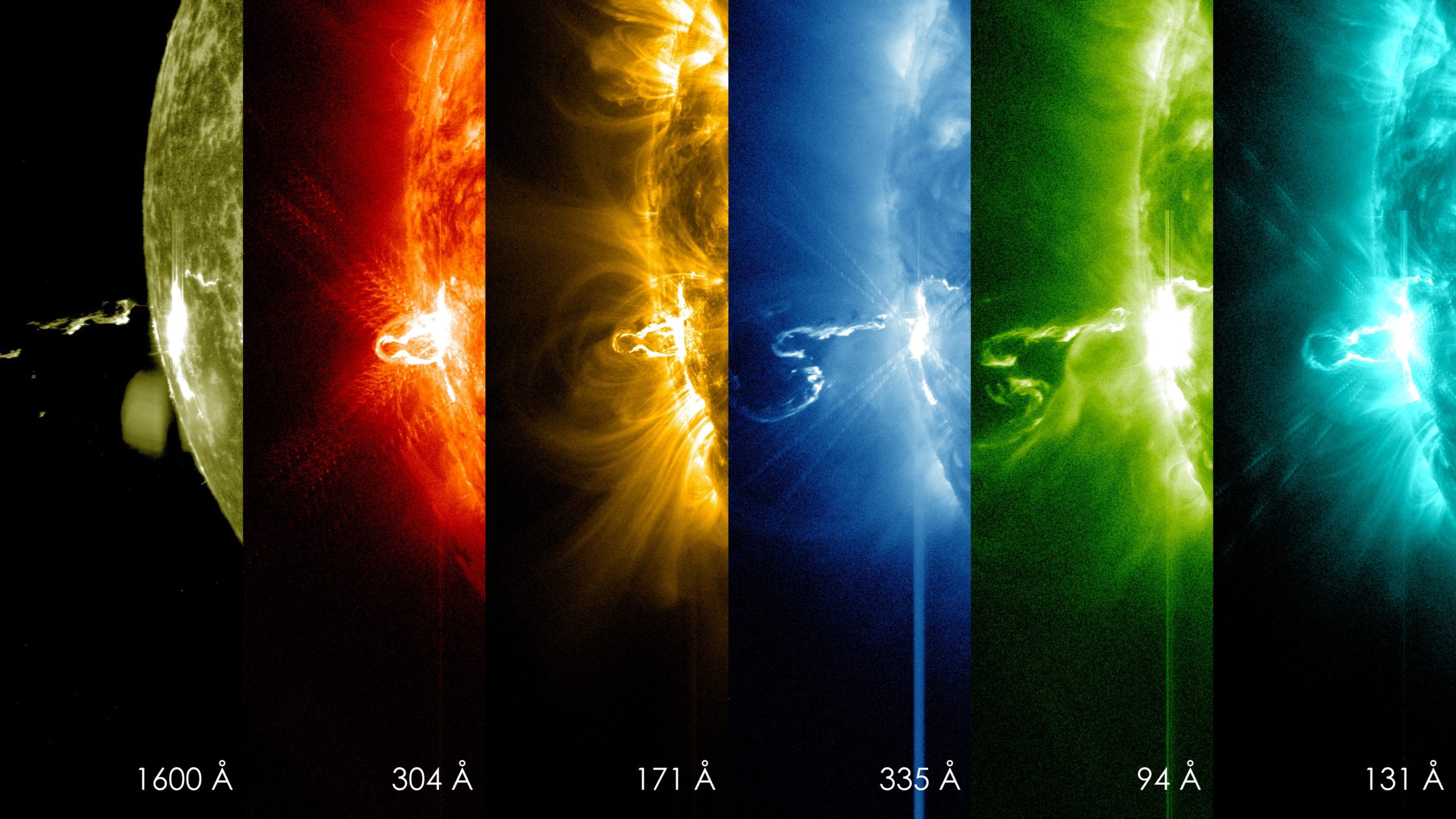
7. Auroras may not be dangerous, but space weather can be.
Though uncommon, space weather can disrupt us on Earth. The most dramatic record of this is the geomagnetic storm of August-September 1859, otherwise known as a Carrington Event.
Named for the British astronomer Richard Carrington, whose work helped to prove the existence of solar flares and their effect on Earth and the lights. When this geomagnetic storm happened, it damaged telegraph lines and injured the people working with them.
Technicians were shocked, telegraph papers were set ablaze, and lines were electrified. The Northern Lights were visible as far south as far as Hawaii and Cuba. On March 13th, 1989 a similar geomatic storm occurred, affecting the electrical grid again by creating a power blackout in Canada.
This event affected power grids in Canada, all the way down to New Jersey in the United States. Our electrical systems had updated a bit by then, so there were no telegraph papers to set on fire- just transformers to damage.
As you can see, these types of things are few and far between, but there are sources of information about how to prepare for similar events.
(Though, Carrington Events are not a common occurrence, and you are likely better served by preparing for the natural disasters that we see more frequently in our respective corners of the globe.)
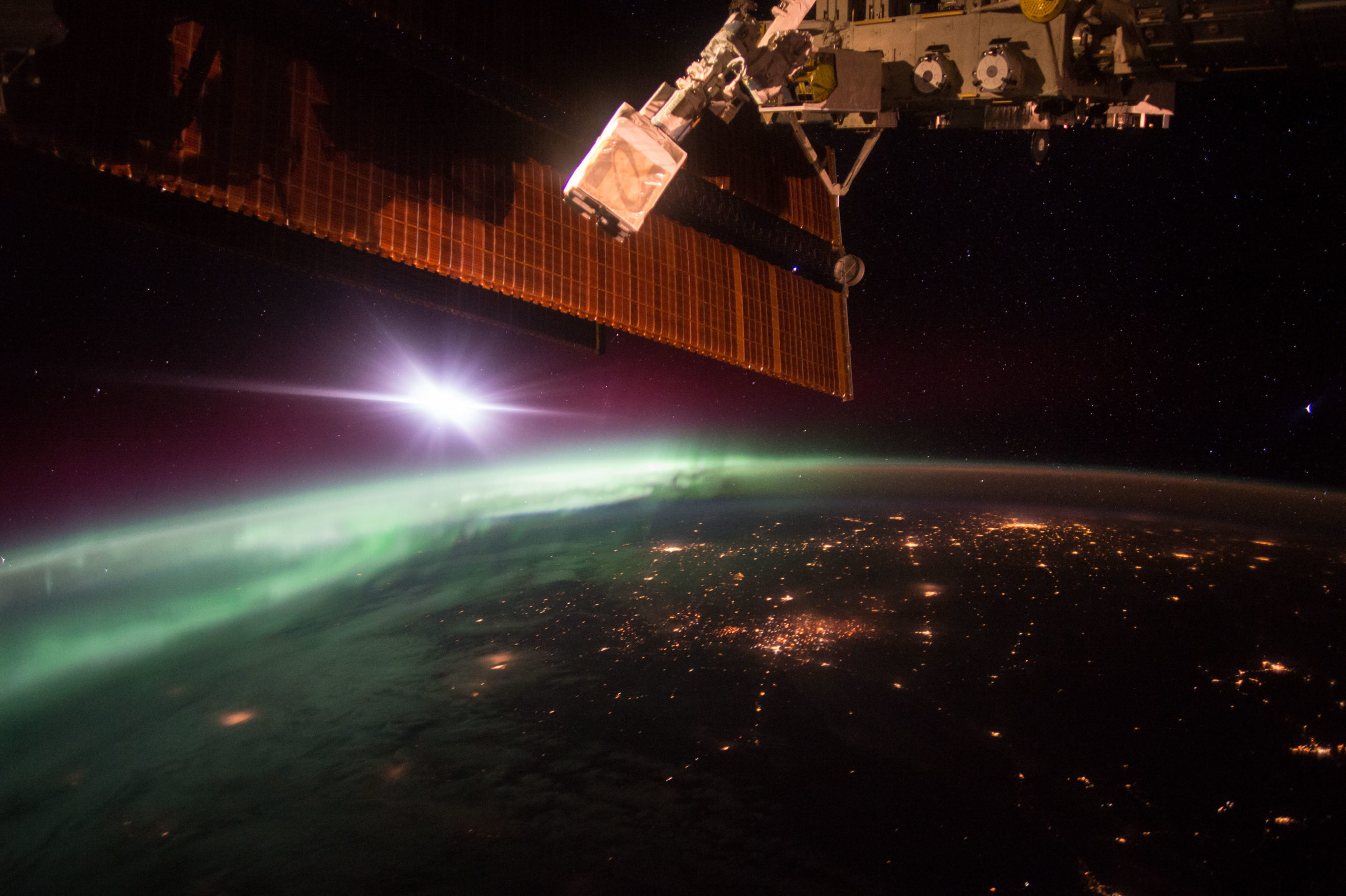
8. We’re not the only ones watching.
So we know we’re watching it, photographers are watching it, citizen scientists and space weather enthusiasts are watching it- but who else? It turns out there are a lot of student researchers and working astronomers keeping tabs as well!
Researchers on the THEMIS mission under NASA’s Explorer Program used satellites in 2008 to find out what causes movement in aurorae. In 2016, The ESA’s Sentinel-3A satellite danced right through the aurora after a launch.
There are countless aurora and space weather observatories throughout the world, and even the astronauts in the International Space Station are up there looking down on the dancing lights.
Sometimes, there’s even a chance to watch together in programs like #AuroraHunters, hosted by the ESA and the Norwegian Space Centre.
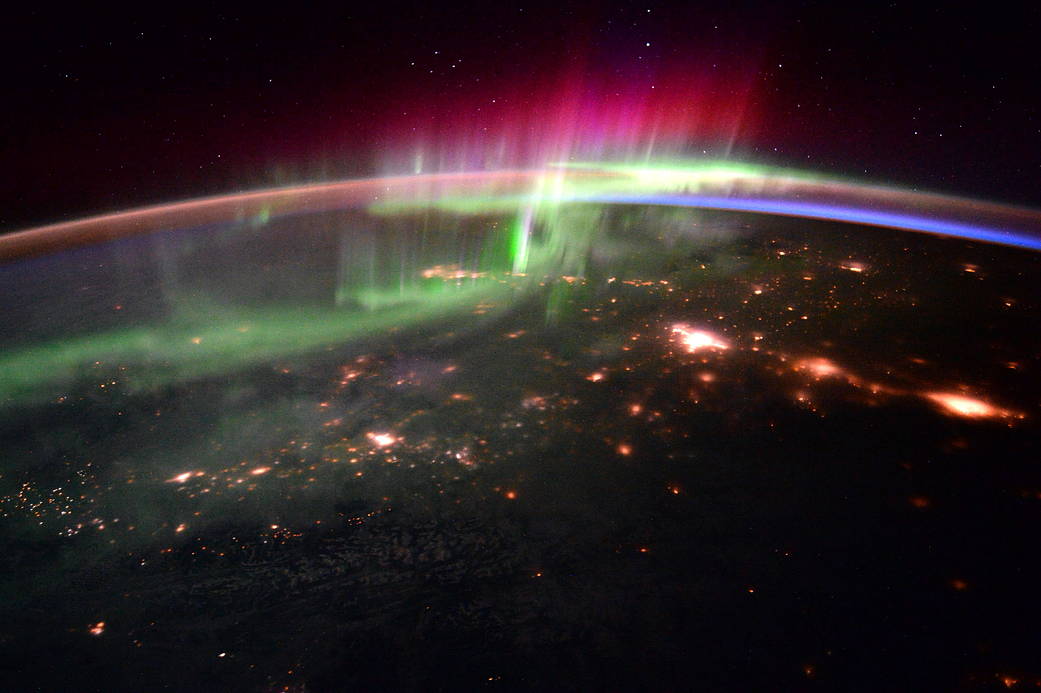
9. They’re pretty high up there!
The Northern Lights are a unique combination of space weather, and Earth’s magnetic field- so where exactly do they happen?
An average auroral occurrence can occur as low as 80-100 km. above Earth.
This doesn’t sound like much, but if you think about it, airplanes only fly about 10 km. above us, and Mount Everest only reaches just under 9 km.! Depending on varying factors, the aurora can reach as high as 500-1000 km. above Earth, which means that it has some interesting neighbors in the middle.
One of which is the International Space Station, sitting at an orbital height of 408 km, and height neighbor Tiangong Space Station, who varies between 340 and 450 km.
Because of this, cosmonauts in either station could one day look out the window and see the lights around them, instead of below or above. Keep an eye out on their socials to see the amazing captures that they make!
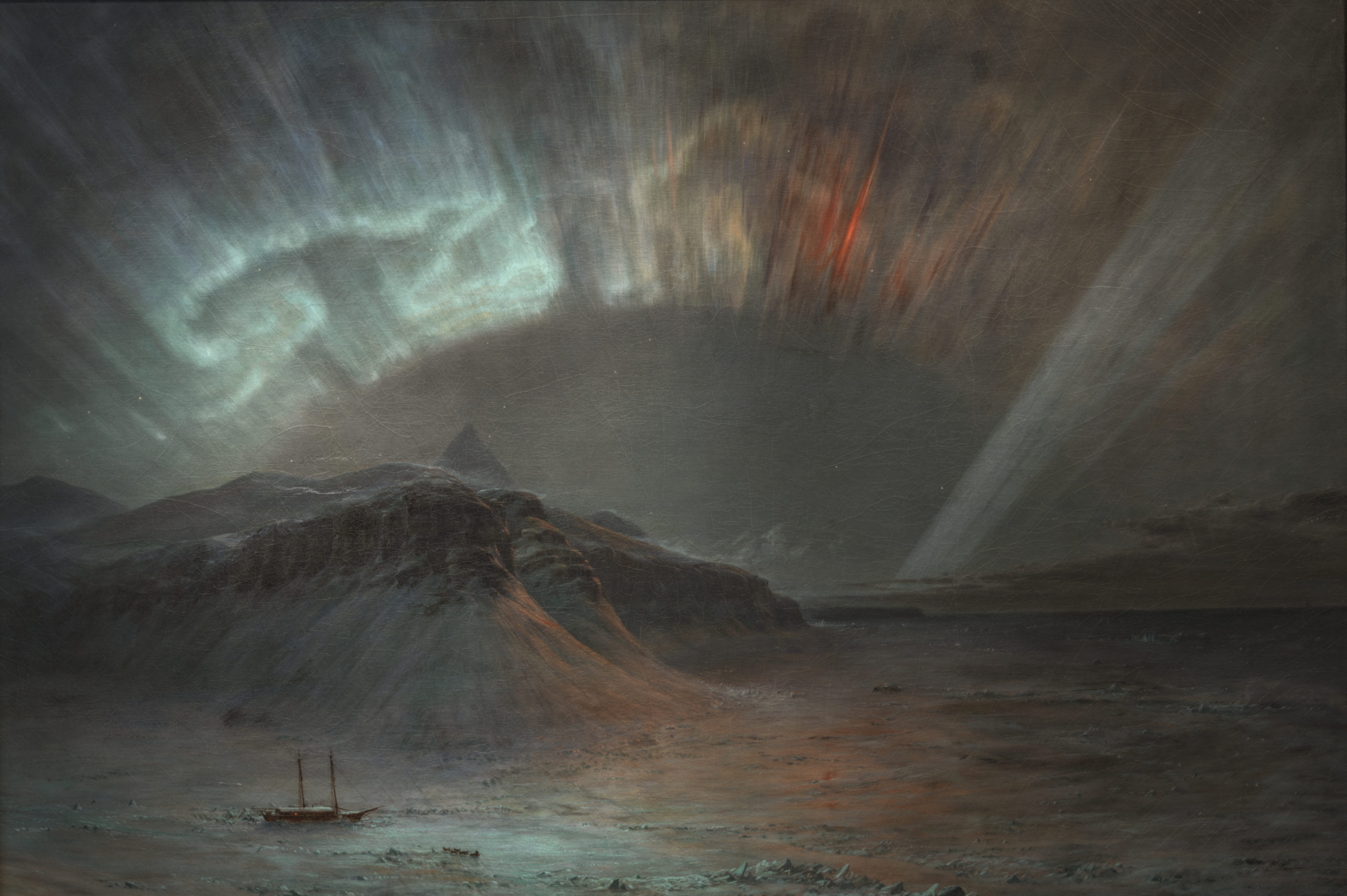
10. Before we could photograph the lights, there was art.
Our ability to photograph and film the lights has been such a recent advancement in the long timeline of human creativity. One could say that the accessibility of this art continues to grow even now, as SLR cameras become easier to get, and smartphones get.. Well, smarter.
We have drones, phones, tiny waterproof cameras, and all kinds of things. This method of capture creates amazing work, especially due to the camera’s ability to process low light better than our limited human eyes. But before this technology, there was still art and the drive to capture this beautiful thing.
Thousand upon thousands of works depicting the lights have been made, but one of the earliest comes to us from Cro-Magnon cave paintings around 30,000 B.C.
There are works referenced from early China and the belief that the sighting of Northern Lights may have become entwined with belief in great supernatural dragons.
There were many painters in the more mobile days of the late 1800s like Danish painter Harald Viggo Moltke, and American painter Frederic Edwin Church, two individuals inspired by their experiences on Arctic expeditions.
Today we continue the tradition with thousands of technological installations, museum exhibits, handicrafts, and more. As we learn more about this incredible gift of nature, it seems, so does our curiosity and our devotion to its existence.
Perhaps the one thing over time that has never changed. Fact.
10 brilliant aurora spots in Reykjavik, Iceland: City of Northern Lights
Heading out into the country is the go-to for most aurora hunters, but how lucky can you get in the city?
Reykjavik, Iceland Northern Lights: Can it be done?
Destination Reykjavik, Iceland, Northern Lights: The world’s northernmost capital, is the first stop for most of the country’s aurora hunters. But is it possible to see the lights there, or does one truly have to head out into the wild?
The capital region around Reykjavik, Iceland houses nearly two thirds of the Icelandic population. This makes for a busy little city in the southern climes of Iceland, and also makes for some of the greatest light pollution in the North Atlantic, until continental Europe.
For many intrepid skywatchers, the first advice is to get out of town and into the country, if only ten minutes away, to access better darkness and get away from the buzz of electric light.
For our eyes to have a starting chance of processing auroral light, it does make a big difference to increase the darkness of your surroundings. This is a thing that happens in stages, depending on what you have the power to control.
For some, it means heading out into the night down a long, quiet country road. But for others it just means shutting off the porch lights, dimming the vehicle console, letting cell phones rest- or just turning away from the streetlights and hoping for the best. You can’t always change the light pollution in your location, and sometimes you don’t need to.
Nature has a way of surprising us sometimes. If given the chance, it is certainly easier to see Northern Lights in darker and less populated spots. The low-light photographs become easier to create without overexposure, and your eyes adjust better into this context that they were not entirely meant for.
It’s true, the city is not every aurora hunter’s first choice of location. But, as a denizen of downtown Reykjavik, I have found that while it’s not the easiest spot to watch from- it certainly can surprise you.
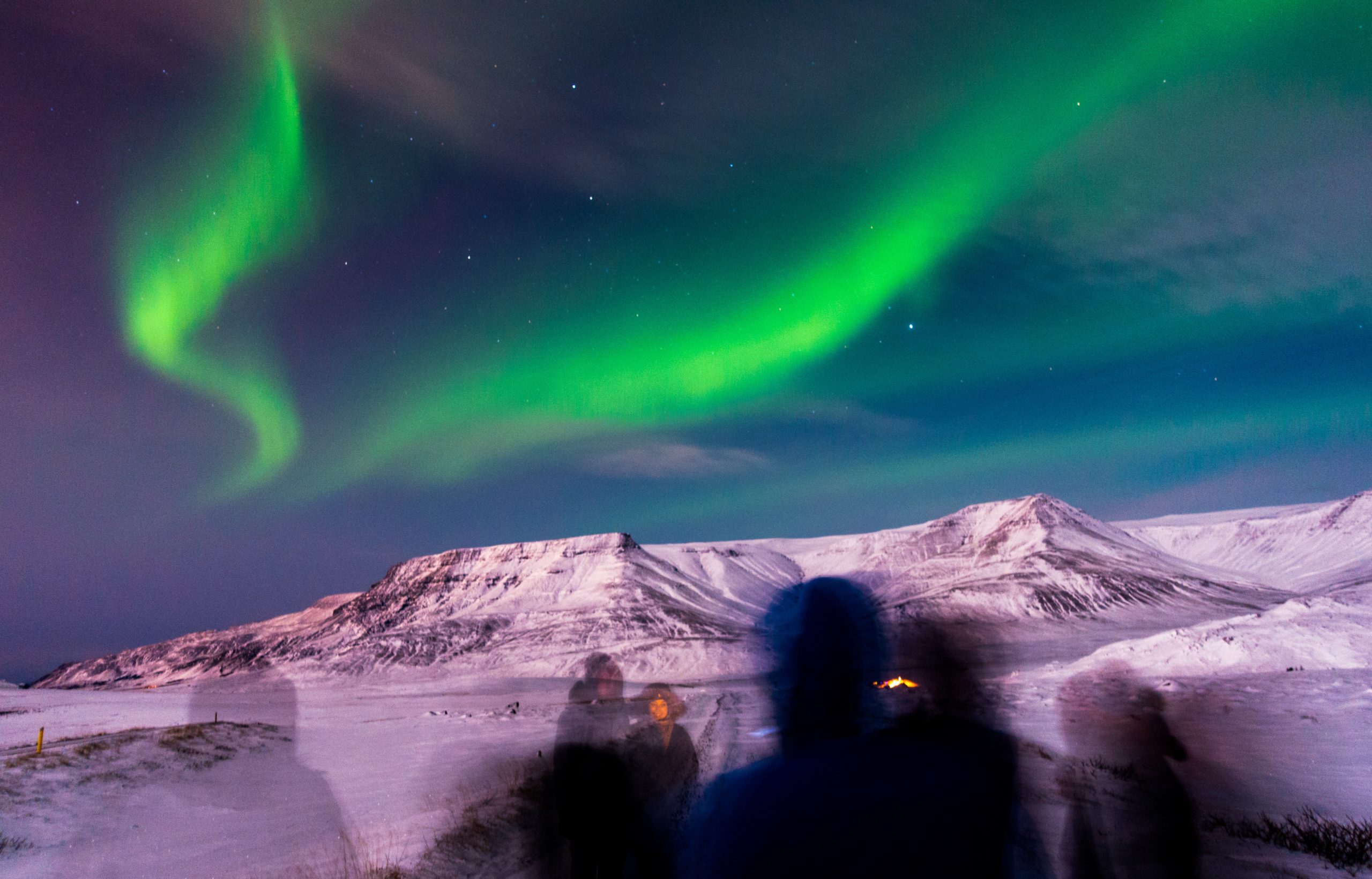
Nature’s light show
The aurora is an elusive character. Despite all of the careful planning and season mapping, the truth of it all is that this is an occurrence that happens above our weather system in space, and so it can start up at any moment.
This means that auroras can occur anywhere that they’re strong enough to reach, at any time of day or night, and in any season of the year. This is perhaps not the answer that they are most often associated with, but the reality is that the sun isn’t thinking too hard about what time it is at our place when it sends the activity.
In some ways, this natural defiance is good news for us, because it means that despite a common norm, there are always exceptions. One of these exceptions is aurora watching from the city. Though it would not be the recommended area to watch from, sometimes you just can’t get out.
Whether it be a short layover or a night without a vehicle, it isn’t always feasible to trek out into the wilds. Some think that this means their shot at catching the lights is over, but it just isn’t so.
Despite the light pollution of greater Reykjavik, sometimes we just can’t outshine nature. On a good night with low cloud cover, you most certainly can watch Iceland’s dancing lights, in front of some of her most notable landmarks!
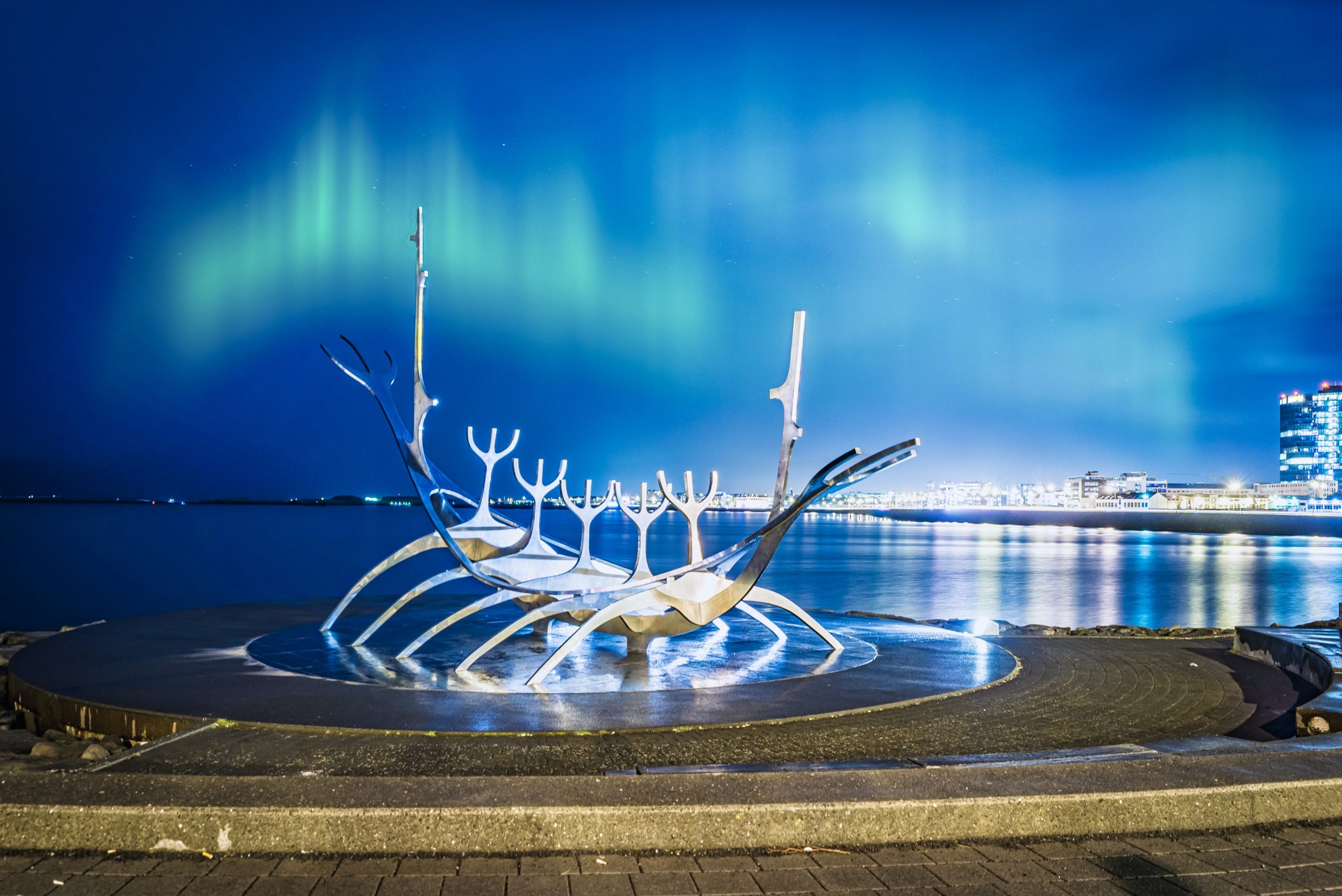
How to set yourself up for success on a downtown aurora hunt
In the best conditions, a low-level aurora can be hard to see. It is common that people watching from slightly different areas have extremely different experiences, and report different intensities, different colors, and sometimes even failures vs successes.
This can be frustrating when you find out that they were only a few kilometers away from you, and you missed the show! It’s important to remember that the northern lights are a planetary occurrence that happen to our entire globe, and they are constantly moving. Despite how huge the sky feels while you’re under it, you are only really seeing one section.
This is why consistent movement on aurora excursions can be a small help on difficult nights. Keeping your eye on the sky for an extended period of time while you constantly change it up can be a more forgiving strategy than only having a few quick looks or staying put.
Especially when you keep in mind that the aurora isn’t the only thing that’s moving, the cloud cover may be as well!
However, you can still get lucky in the city. And there are a lot of perks to staying local if you’ve got to. The obvious benefit is proximity to your lodging.
Reykjavik is a walkable city, and if you’re staying in the area, you’ll always be close to your home- should you run out of camera batteries, forget your mitts, or just flat out get tired. Need a snack? There are countless places to get one!
Looking for a place to sit that isn’t a frozen rock? Not to worry, public benches line the roads and walkways. But, it’s good to keep a strategy in mind. If you’ve seen luck in the forecast and have decided to set out into town, try to keep your back to the city lights, and your eyes fixed on a dark area.
Night vision takes some time to adjust, and if you can set yourself up in a spot that isn’t directly casting a streetlight blaze into your eyes, you’ll do yourself a big favor. And to help you out, here are a few of our favorite spots:
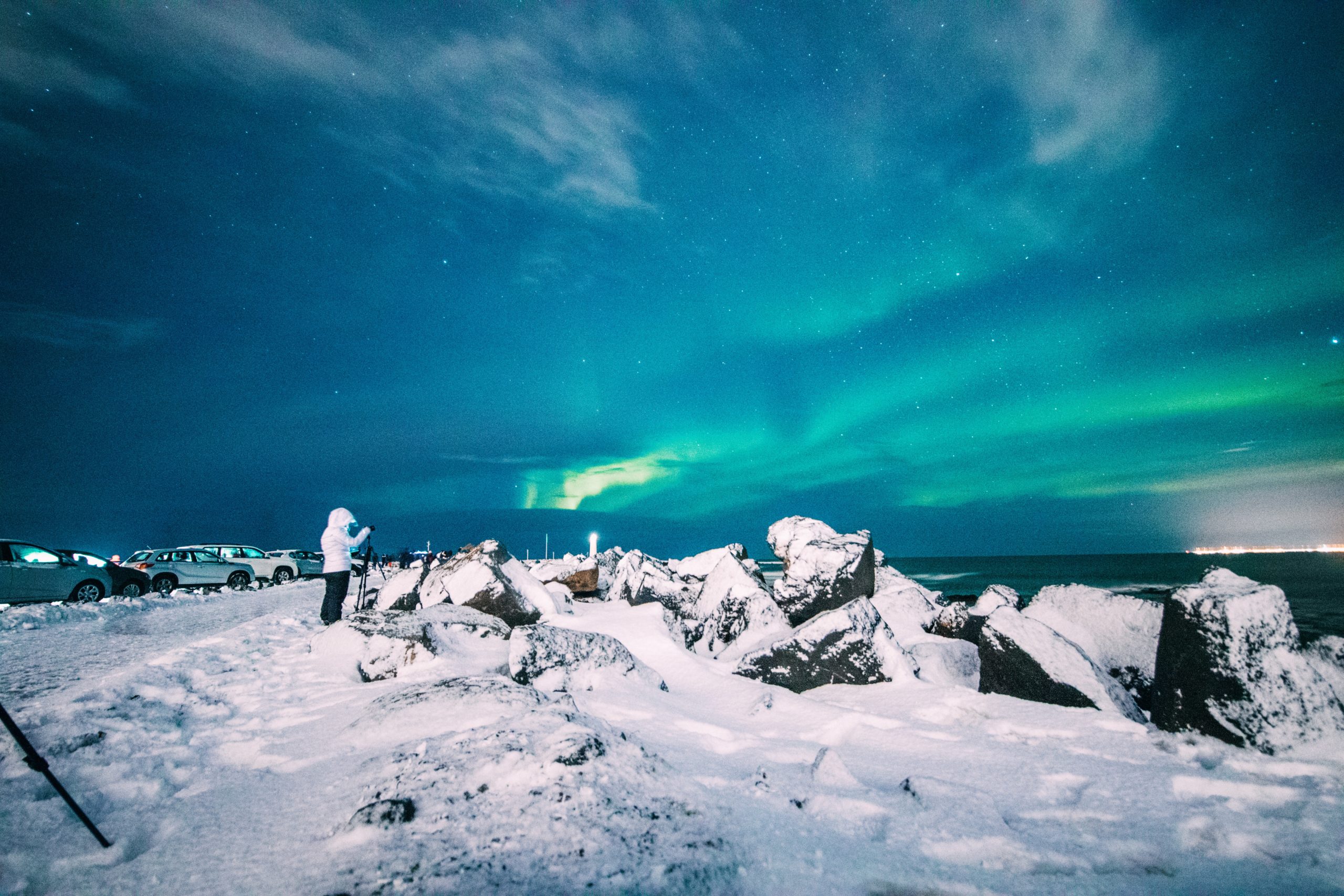
Best city hideaways for Reykjavik, Iceland Northern Lights watching
Grótta: The most popular spot for a good aurora hunt, Grótta is a hidden gem on the Seltjarnarnes Peninsula in Reykjavik. It takes about an hour to walk there from the city center, but there are pedestrian pathways, a lighthouse, and a small geothermal pool to dip your feet into once you get there.
Acting as a nature reserve for the area’s abundant bird and sea life, parts of Grótta are closed to us in the summer to serve as nesting grounds. In the winter, however, it becomes the city’s own aurora spot.
Already a bit out of the way as far as city locations go, Grótta suffers from far less light pollution and enjoys a dark view over the water. If you choose to head to this spot, make sure to check the tide tables.
The very end of Grótta is attached to us by a very thin strip of land, which can become submerged during high tide. If you’re looking for a little slice of quiet in Iceland’s bustling capital, this is one of the best.
The Sæbraut walking path: If you check out a map, you can see that there are copious walking paths in the capital area. You can walk all the way to Hafnarfjörður if you’re feeling adventurous!
The most popular of these paths, however, is along Sæbraut, or the Sea Road, at the northern coast of the city. Running along Faxaflói Bay, this wide path takes you past many notable landmarks like the Harpa Music Hall, the Sólfar or Sun Voyager dream ship, and many local works of art and sculpture.
It stretches from harbor to harbor and takes local wanderers on a flat, accessible trek with a full view of Esja, Reykjavik’s favorite mountain. Though a seemingly obvious spot, it truly is one of the best. Easy to get to, central to downtown, and sporting one of the best dark views over the water in a northerly direction that there is!
Not having to look at any lights over that expanse of water is easy on the eyes, and on a good aurora night, one can find many hopefuls lining the path and balancing their tripods on the barrier rocks.
Having this unobstructed view towards Esja is as good as a compass for finding north, and being able to keep the streetlights mostly behind you is a lucky mercy.
If you plan to try your luck on the Sea Road, it’s often best to set yourself up a bit of a way away from Harpa, and she is often busy conducting a light show in the evening. (Though, while you wait, it is spectacular to watch!)
Sky Bar: Looking for a slightly more luxe place to watch from? We’ve got you covered. For those who’d prefer to have a cocktail while they wait, we recommend the Sky Bar, resting on the 8th floor of Center Hotels Arnarhvoll.
Open until 23:00 (at the time of this writing), Sky Bar boasts some of the best views of Faxaflói Bay that you can get, without scoring a meeting in a waterfront board room or making a friend in one of those high rise apartments.
Öskjuhlíð: Resting pretty on a 61 m. high hill is the home of Perlan, and one of Reyjavik’s lushest forests. A veritable tangle of woodland hiking trails, Öskjuhlíð is a curious oasis with a great view.
It’s a bit of a hike to get to the top, but one can enjoy the glistening dome of Perlan, the memory of military bunkers from a century gone by, and even the new site of the Ásatrúarfélagið temple.
Depending on the side you watch from you may have to look over some city lights to view the sky, but on a good night, this can be a phenomenal spot to take a photo from.
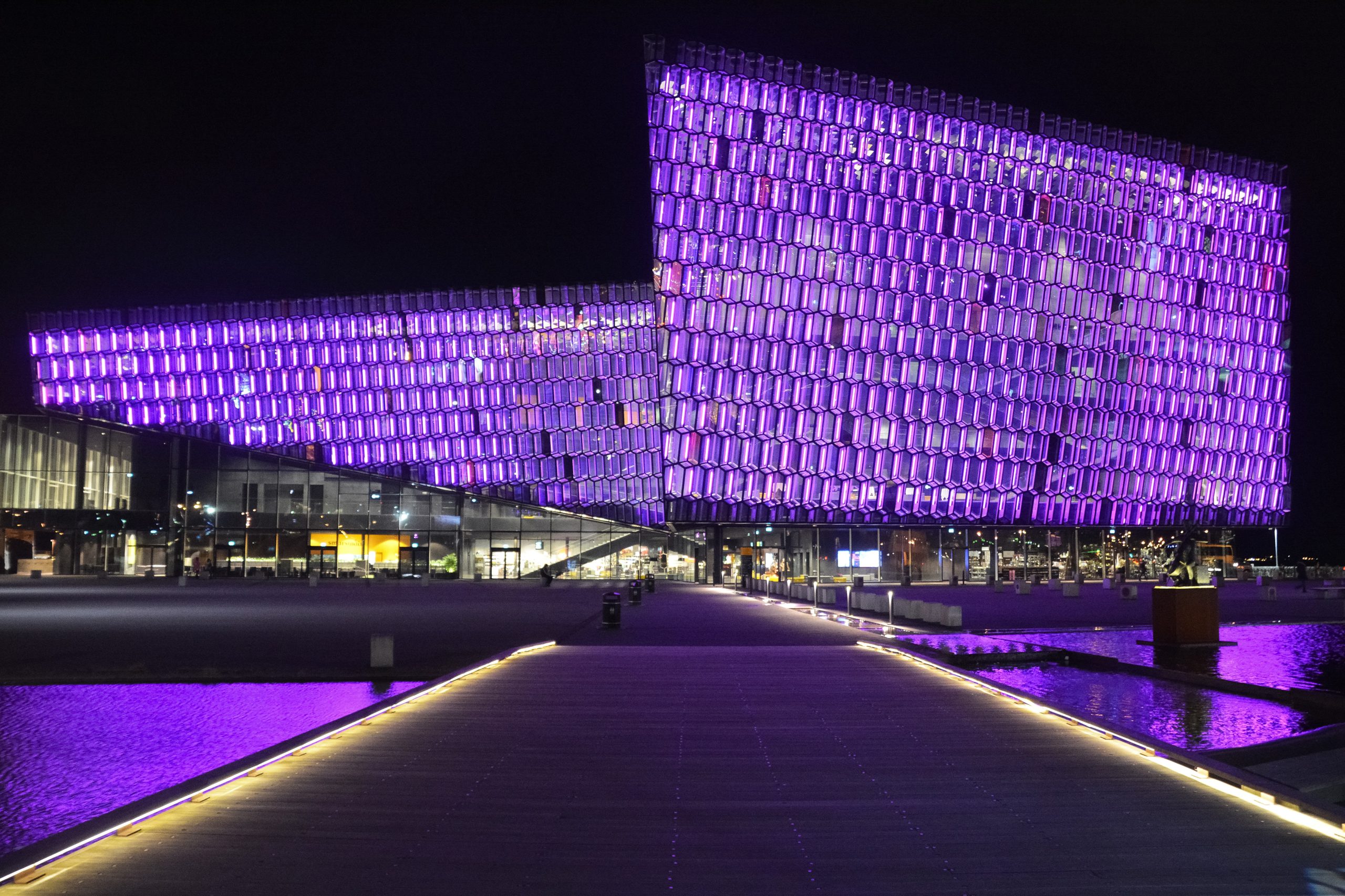
Get the shot: Local landmarks to capture on film
If you’re in Reykjavik, Iceland northern lights hunting, you’ve got an excellent opportunity to grab a showstopping photo while you’re there. Many people leave Iceland with gorgeous sky shots of open country- but a Viking longship, or a cathedral built to look like basalt columns? These local treasures make for some dramatic foregrounds. Here are a few of our favorites:
Lighthouses: It’s hard to pick just one! There are over five active lighthouses in the greater Reykjavik area, and even more outside of town!
Icelanders are a coastal people, so you’ll find no shortage of these beacon towers on your journey. When in town, key an eye out for these bright yellow structures.
Esja: Reykjavik’s very own distinctive mountain and favorite hiking destination of locals and visitors alike, Esja lies in a northerly direction from the city center.
Looking across the dark bay to capture a stunning photo with Esja in focus is a great souvenir of your time in this seaside city.
(And for those with transportation, the parking lot at the base of Esja can be a great close by dark area for last minute viewing!)
Hallgrímskirkja: The tallest church in the country, Hallgrímskirkja is usually the star of most photos that it appears in- so it’s hard to imagine it taking a back seat to northern lights.
But, with its basalt column structure, and its prominent memorial to Leif Erikson out front, this hilltop spot has lots of seating and lots of space.
(Come back during the day to try out the observation tower for a great panoramic view!)
Sólfar/The Sun Voyager: Created to celebrate the 200th anniversary of the city of Reykjavik, The Sun Voyager is a sculpture crafted by Jón Gunnar Árnason.
A popular photo spot during the day, local photographers make a point to capture this stainless steel dreamboat in all seasons.
Resting right on the Sea Road path in front of Esja, you can hit three locations at once at this stop!
Harpa Music Hall: At the head of the Sea Road pedestrian path lies the Harpa Music Hall, a notable structure on the Reykjavik skyline. With its massive fish scale windows, Harpa lights up at night and creates animated patterns and shapes in an impromptu electric light show.
This feature is free to watch and is a great photo in and of itself.
Thufa and the Old Harbour: Thufa, also written as Þúfa, is an art installation in the Old Harbour/Grandi area. Created by Ólöf Nordal, Thufa is a reminder of Reykjavik’s maritime past.
Though it takes a bit of a walk to access, one can guarantee a modicum of serenity here at the near end of Reykjavik’s Old Harbour, jutting out into the bay.
If you head out early, check out some of the boutiques and cafes in the area.
Perlan: Perched on the top of Öskjuhlíð hill, Perlan, or, the Pearl- is a famous Reykjavik landmark that has lived many lives.
First built to house hot water, then becoming a revolving restaurant, and now hosting a vibrant museum, planetarium, and even a refrigerated ice cave- Perlan has seen it all.
This is a landmark that is popular to capture both up close and from a distance, but be sure to check their website for opening hours if you choose to visit.
Perlan is a vibrant space with many attractions, and some of these do require a ticket to enter.
Tjörnin: Tjörnin is technically a lagoon, but as you can see it has lovingly been named “The Pond”. Lying next to the city hall and many of Reykjavik’s oldest structures, a stroll around the pond is a historic pastime.
If you’re lucky and the wind is low, you can try for a great reflective photo in the shallow waters of this city treasure. Watch out for the residents though- Tjörnin’s birdlife are expert connoisseurs of bread!

A few parting tips:
Tours: Tried your luck strolling and still didn’t see any lights? Not to worry. Reykjavik is the bustling epicenter of a myriad of tour departures.
One can book all sorts of experiences that pick up in the city, from a northern lights boat ride, all the way to a chauffeured stay in a northern lights igloo. Don’t worry about the transport, you can be picked up and dropped off at your hotel, and the rest is up to the experts.
Snacks: Up late and hungry? So is half of Reykjavik! Lucky for us there are some tasty late-night options scattered through the heart of downtown. Try a stroll along Laugavegur, or stop in Ingólfstorg for some late-night eats.
If it’s close to the weekend, there may be food trucks about! The majority of them gather at Lækjartorg, but you’ll smell them before you see them. (And trust us, there is nothing like a hot cup of humarsúpa or a toasty homemade waffle in the middle of a hunt. Try finding that in the country!)
Special Surprises: Reykjavik is a bright spot on the map, but every now and then its residents want to see the lights too! In the past on high activity nights, the city has been known to dim the glow just a bit, to help out.
Don’t bet on this happening often, as it is a very special occurrence that takes quite a bit of permission to achieve- but know that you’re in good company when looking up!
(And cross your fingers that you get to experience one of these events! The excitement in town is palpable on a night when Reykjavik goes dark.)
Got wheels?: So you’ve found yourself a ride and you’re looking for a spot. Don’t forget to check the northern lights forecast for clear spots in the sky before you do it!
Once you’ve had a look, you’ve got a huge spectrum of choices in front of you. Just within an hour’s radius from town, you’ve got the entire Reykjanes peninsula, all the way out going south to just a bit past Selfoss, the national park Thingvellir, and even the route 1 going north all the way up to Borgarnes.
All of these spots are reasonably accessible and within an hour. Good luck, and happy hunting!
Best Place to See Northern Lights
Best Places to View Northern Lights
Below you will find information on some great places in Iceland for viewing the northern lights. These are not only great places to see the lights but also feature many activities and natural sights. When planning a trip to Iceland it’s important to research what kind of things you would like to do and the places to see. The northern lights can only be seen in the winter, when it’s completely dark with clear skies. There are many nights where visibility is low so make sure you have other items on your bucket list and take in as much of the country as you can. The northern lights are a natural phenomenon, so a bonus to your trip.
Hotel Rangá – the best place to see Northern Lights
Hotel Rangá is one of the most renowned hotels in Iceland for seeing the northern lights. It was the first hotel in the country to offer a northern lights wakeup call service to its guests so they could pull their parkas over their pyjamas if the Aurora made an appearance. In addition to their comfortable and luxurious rooms, the location on the south coast is in close proximity to natural wonders like Seljalandsfoss and Skógafoss waterfalls, the Reynisfjara black sand beach and basalt columns, and the infamous Eyjafjallajökull volcano. Hotel Rangá makes for a great place to see the beautiful dancing northern lights.
Hotel Glymur with its amazing village suites
Hotel Glymur is a friendly hotel with a beautiful village suites. It’s located in majestic Hvalfjörður (“Whale Fjord”) just north-west of Reykjavík, and has breathtaking scenery. It has a lovely relaxed atmosphere and a great restaurant that offers everything a hungry stomach needs. The six village suites are uniquely designed villas, each with an open-concept kitchen, bedroom, bathroom, leather sofas, large screen TV, dining table, amazing art pieces and can cater for 4-6 people. With its remote natural location, it’s a fantastic place to see the northern lights without going too far from the city.
Hotel Gullfoss – next to the famous waterfall
Hotel Gullfoss is located right in the heart of the Golden Circle, next to the amazing and famous Gullfoss (“Golden Falls”) waterfall. One of the most beautiful waterfalls in Iceland—and even the whole world!—it is stunning to see all year round. When the sun is shining on it, there is often a golden rainbow over it that gives the falls their name. During the winter a stay at the hotel is truly magical, with no urban lights around one can walk out into the darkness, or lounge in a hot tub, and gaze at the starry sky and watch the northern lights dance totally undisturbed. You can even get great photos of the lights dancing over the waterfall, capturing two of Iceland’s most famous sights together.
Great hot tubs for Northern Lights viewing
With less than 100 inhabitants, Drangsnes is the ultimate spot for seclusion and solitude for viewing the lights. You can lay in the seaside hot tubs waiting for the auroras to show up over the tiny fishing village, indulge your inner nature-lover by exploring the surrounding area, and go mingle with the locals at the Malarhorn café. When the northern lights do come out here, there isn’t anything or anyone to disturb your enjoyment.
